It seems we can’t find what you’re looking for. Perhaps searching can help.
Sign Up for newsletter!
Subscribe to get the latest eBook!
Hotline



 2
2
 3,716
3,716
 0
0
 1
1
 2
2
 10,523
10,523
 0
0
 1
1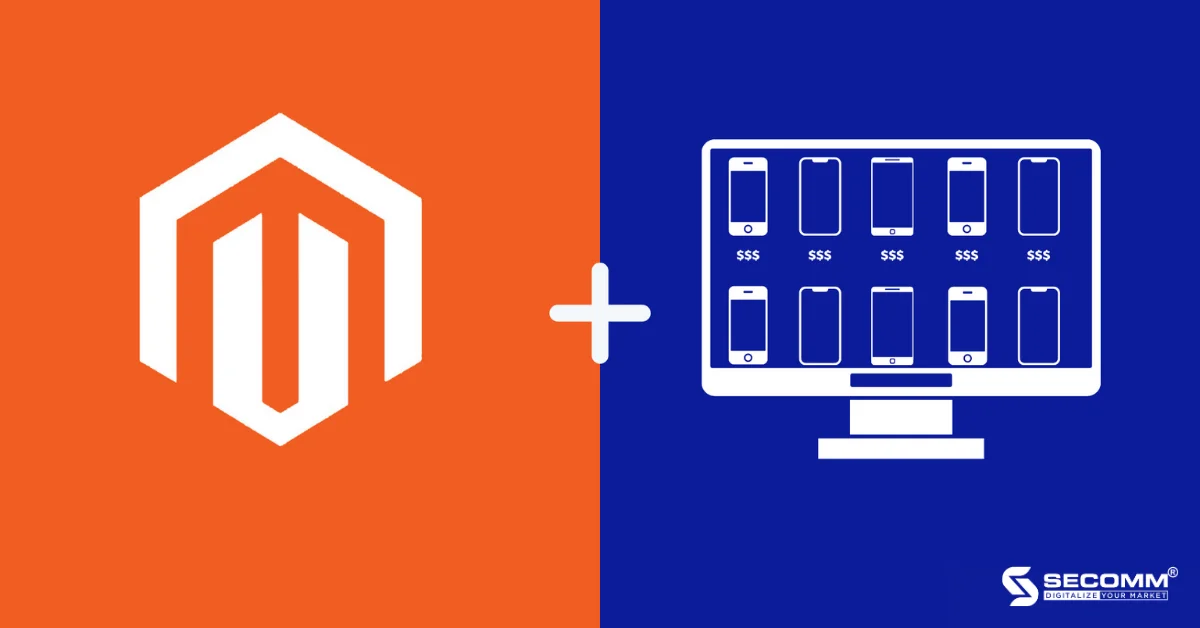
 2
2
 10,303
10,303
 0
0
 1
1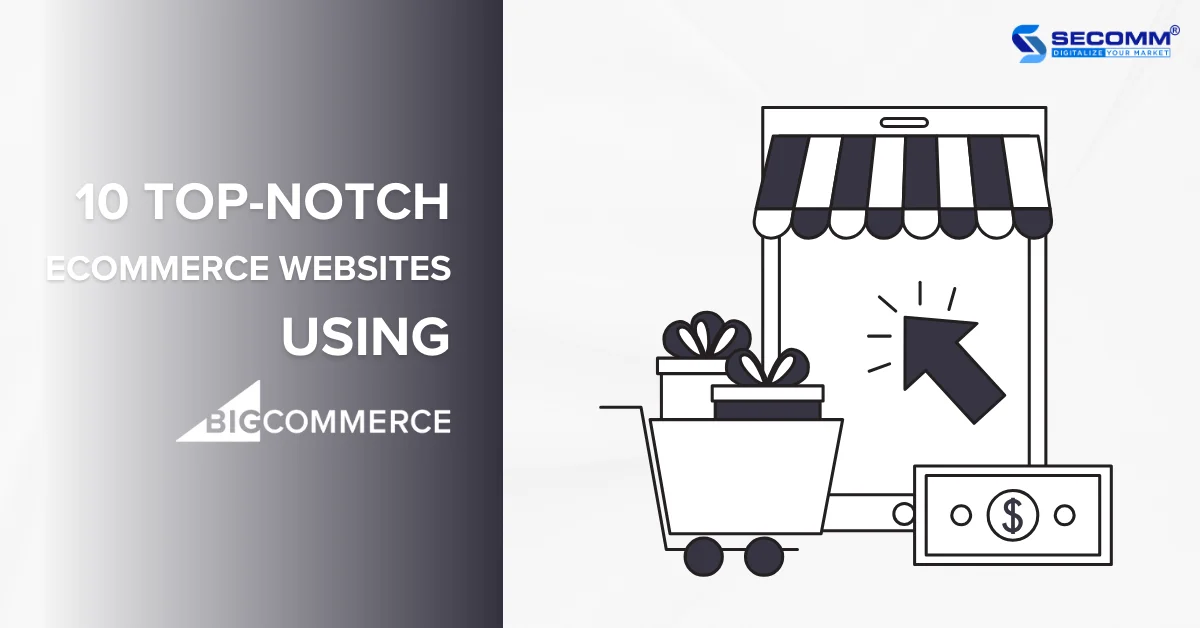
 2
2
 10,267
10,267
 0
0
 1
1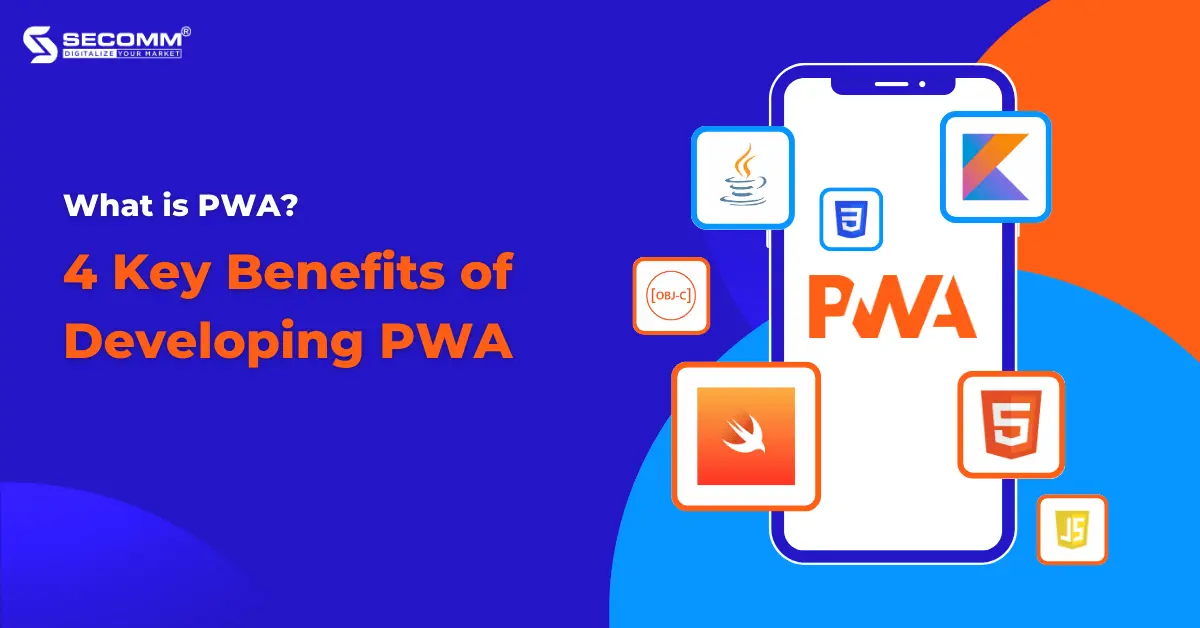
 2
2
 10,175
10,175
 0
0
 1
1



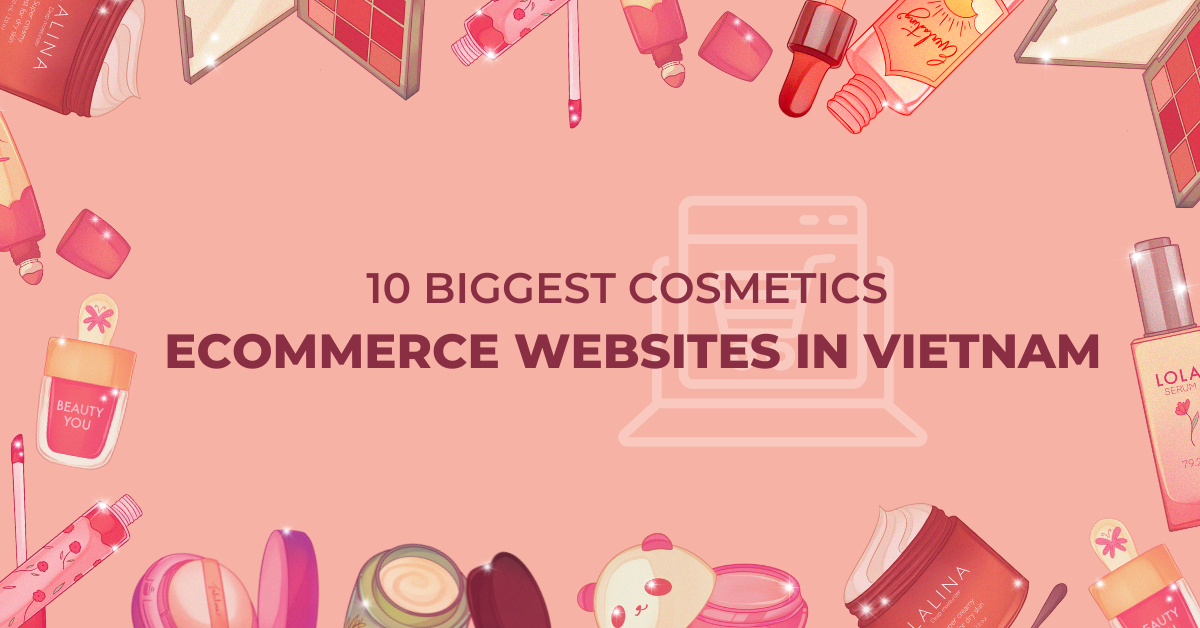
Exporting and trading internationally has become challenging due to the Covid-19 epidemic. In order to increase sales and find online customers, numerous companies in several industries, including the cosmetics industry, have used eCommerce.
Additionally, to support eCommerce activities and achieve the objective of growth and scalability, cosmetic retailers shift from traditional business practices to keep up with the general development trend of the global economy.
In Vietnam alone, a handful of cosmetic firms in Vietnam have demonstrated extraordinary flexibility and agility in reacting to market adjustments “despite” the complicated changes brought on by the global pandemic.
The following brands have gained the trust of and made a lasting impression on cosmetic customers by creating professional and insightful eCommerce websites.
Hasaki, a company founded in April 2016 to provide full health and beauty care for Vietnamese people, has developed secure and quick online shopping experiences with a choice of high-quality cosmetic items from many of the world’s leading brands in today’s market.
Hasaki’s eCommerce website was invested in and methodically developed from the start with the open-source platform – Magento – in order to deliver clients satisfaction in terms of comfort and efficiency when purchasing online.
More than 7 million visitors per month of traffic at a very high level demonstrate the wisdom of Hasaki’s eCommerce investment. This company’s expansion of its distribution network increased market penetration, and identification and diversification of the target customer were all made possible by sensible strategy.

The Gioi Skin Food is another well-known eCommerce site with over 2 million monthly visitors that focuses on selling cosmetics. This business worked with Haravan to create an effective eCommerce website with an easy-to-use interface.
The Gioi Skin Food has up now employed eCommerce in addition to the conventional retail shop method, which has been incredibly successful. This would enable the business to catch up with the online-to-offline (O2O) trend and raise brand awareness and revenue.

The Watsons Group, Asia’s top retail organization for health and beauty products, owns the Watsons Vietnam brand. The company desires to provide Vietnamese customers with the finest shopping experience possible while also bringing them high-quality products that are appropriate for their needs.
Notably, Watsons adopted the O2O business model right away after entering the Vietnamese market. With the goal of dominating the market, Watsons Vietnam invests in developing an eCommerce website with SAP Commerce Cloud in addition to the store system dispersed throughout the neighbourhoods of Ho Chi Minh City.
Additionally, the user-friendly and aesthetically designed interface contributes to the website’s amazing monthly visitation of more than 1 million.

The Gioi Son Moi is one of the places where people go to get lipstick that is well-known and reputable because of the guaranteed product quality and the courteousness of the staff. Every day, new products are added to the site, ensuring that there is always enough supply of well-known companies’ lipstick lines in the right hues at competitive rates.
The Gioi Son Moi also swiftly launched an eCommerce website to join the common playground of the cosmetic retail sector, in addition to two physical locations in HCMC that are constantly being renovated, extending the amount of shopping space. As a result, the website is built on the Haravan platform and has a straightforward interface that is nonetheless opulent and complex.
Also, the extremely high monthly traffic volume (more than 1 million) also demonstrates the company’s successful business strategy in the context of the market’s innovation trend.

Beauty lovers in HCMC can’t help but be aware of Bo Shop, a company that provides a broad range of high-quality cosmetics, from skincare to makeup, at rates that are specifically stated to fulfil customers’ demands for all types of beauty care.
The company quickly creates an eCommerce website using WooCommerce to keep up with contemporary business trends in order to become the top cosmetic retail brand in Vietnam.

For many years, Vietnamese consumers of cosmetics have been familiar with the name Guardian. This is a brand from the Dairy Farm Group that manufactures and distributes well-known health and beauty care goods all over Asia. In Vietnam, where Guardian first opened in 2011, the company now has more than 100 outlets.
In 2019, the business started its transformational path and parallel fusion of offline and internet business models. In order to create an omnichannel sales network (Omnichannel), Guardian focuses on building eCommerce websites with Shopify in addition to deploying potential sales channels like eCommerce platforms, apps, and fast delivery channels via GrabMart.
This gives customers more affordable, quick, and convenient home shopping options. After only a short period of time in operation, the Guardian website has attracted close to 1 million visitors each month.
Guardian has risen to the top of the industry and evolved into the biggest and most prominent retail chain for health and beauty products in existence today thanks to a significant investment in developing a multi-channel ecosystem.

Since Lam Thao Cosmetics’ formal opening in 2017, young people have come to love it as one of their favourite cosmetic shops. Lam Thao Cosmetics is continually upgrading its product line with the most affordable rates in an effort to give customers more options with the trendiest goods and improve their experience.
Along with offering high-quality goods, Lam Thao also runs an eCommerce site on the Haravan platform to enhance clients’ offline and online purchasing experiences. The success of eCommerce implementation has also helped Lam Thao Cosmetics reach a significant number of online prospects, boosting both sales and brand recognition.

For those who love cosmetics, Nuty Cosmetics is regarded as a cosmetics heaven. After operating and growing for more than ten years amid market ups and downs, the business is still a renowned source for real beauty products from well-known manufacturers in the US, Germany, France, Japan, and Korea.
The WooCommerce platform was used to create Nuty Cosmetics’ website, which has an easy-to-use interface and exceptional features that may satisfy clients when they shop online. Additionally, Nuty Cosmetics’ website offers thorough information about each product, along with clearly stated costs.
Because of this, despite the fact that there are only roughly 200,000 visitors per month on the site currently, Nuty Cosmetics has the potential to become a major player in the cosmetics industry with the correct efforts and attitude.

In the midst of the Covid-19 outbreak that was raging in 2020, AB Beauty World (ABBW) was founded with the goal of being the top family-friendly cosmetics retailer in Vietnam. The brand has not given up despite the fact that this birth appears to have occurred at the wrong time.
In fact, AB Beauty World has grown and expanded with approximately 20 branches spread throughout the city’s districts in just two years since opening the first store in HCMC, concentrating on growing eCommerce, thanks to the timely redirection.
The WooCommerce-powered cosmetics website for AB Beauty World features an interface and capabilities tailored to the sector. The website has already seen more than 150,000 visitors in the short time since it launched, which is nonetheless viewed favourably for a newcomer to the fight for digital transformation.

Beauty Garden is one of the top retail and distribution brands for real cosmetics today. Since its establishment in 2014, the company has effectively extended its retail network to be present in numerous provinces and major and minor towns throughout the nation, including Hanoi, Da Nang, Ho Chi Minh City, Dak Lak, Gia Lai, Dong Nai, and Can Tho.
In addition, Beauty Garden concentrates on developing eCommerce websites in the context of economic integration. As a result, the company’s website is expertly and systematically constructed using WooCommerce, the most popular eCommerce development platform worldwide, and is ideal for the cosmetics business.
The eCommerce implementation of Beauty Garden is seen as a sensible move since the development potential of this area is extremely great and at that time, the company had many advantages to build a business model, even though the number of users is still modest with more than 100,000/month.

All things considered, the Covid-19 pandemic outbreak has impacted and altered consumer shopping behaviours for a variety of goods. Shopping for cosmetics, in particular, has seen a significant change from physical to online formats.
The information above is a summary and evaluation of SECOMM for 10 eCommerce sites with a good reputation and the capacity to meet customers’ demands when making a decision to purchase cosmetics.
These companies demonstrate their efforts to create the technological infrastructure needed to enhance the online shopping experience as well as their well-founded optimism regarding the market’s growth potential and dominance in Vietnam.
With many years of experience in successfully implementing e-commerce for many customers in many countries, SECOMM specializes in providing consulting services with comprehensive and professional e-commerce implementation solutions.
Contact SECOMM today for free support and advice.
 37
37
 16,722
16,722
 1
1
 4
4
In the context of the Covid-19 pandemic, which is seen as an “obstacle” to the business activities of most businesses, eCommerce is emerging as an efficient way to enable Vietnamese furniture businesses to participate in the typical “playground” of global digital transformation.
At the same time, it is a pressing solution for furniture products to be consumed easily and accessible to many potential customers.
Therefore, the first wise step furniture brands have been hurrying to do in order to fast access the market is developing an eCommerce website. However, this difficult path calls for a significant investment of time and energy.
With years of expertise supporting several companies, SECOMM has developed a thorough process for developing a successful eCommerce website exclusively for the furniture sector.
The Covid-19 pandemic’s convoluted dynamics made travel challenging, which led to a necessity and urgency that resulted in the explosion of global eCommerce. At that point, internet buying and selling, which is more practical, takes the place of on-the-spot buying and selling.
Global eCommerce sales will rise from 15% in 2019 to 21% in 2021 and then continue to rise to 22% in 2022, according to Morgan Stanley. eCommerce will likely continue to have a large surplus. The market is established, and its growth rate might rise from its current level of 3.3 trillion USD to 5.6 trillion USD in 2026 as a result of significant company penetration in all industries worldwide.
In Vietnam alone, many service sectors had negative growth as a result of the Covid-19 outbreak, although the eCommerce market continued to grow steadily. In particular, the sector for wholesale and retail fell by 0.21%, transportation and warehousing fell by 5.02%, and that for lodging and food services fell by 20.81% in comparison to 2020.
In contrast to that doom, eCommerce has consistently grown at a pace of 16%, with retail sales reaching $13.7 billion USD in 2021. Additionally, the proportion of eCommerce retail sales in all retail consumer goods and services nationally reached 7%, up 27% from the same period in 2020. (Vietnam eCommerce White Paper in 2022).
Because of this, even if the epidemic is now under control and customers are beginning to purchase again in stores, expectations about the potential and rapid growth of the post-Covid eCommerce business are well-founded. The furniture business will not be the only one promoted to extraordinary growth from that point on.
According to Forbes, furniture and building materials have experienced the biggest growth in eCommerce sales during the past two years of the epidemic, with a cumulative growth rate of more than 200% over the year prior to the pandemic, 2019. The category of furniture and home appliances likewise experienced a remarkable cumulative gain of more than 66% compared to the same time in 2019.

Recent findings made by Maddyness include the following intriguing details:
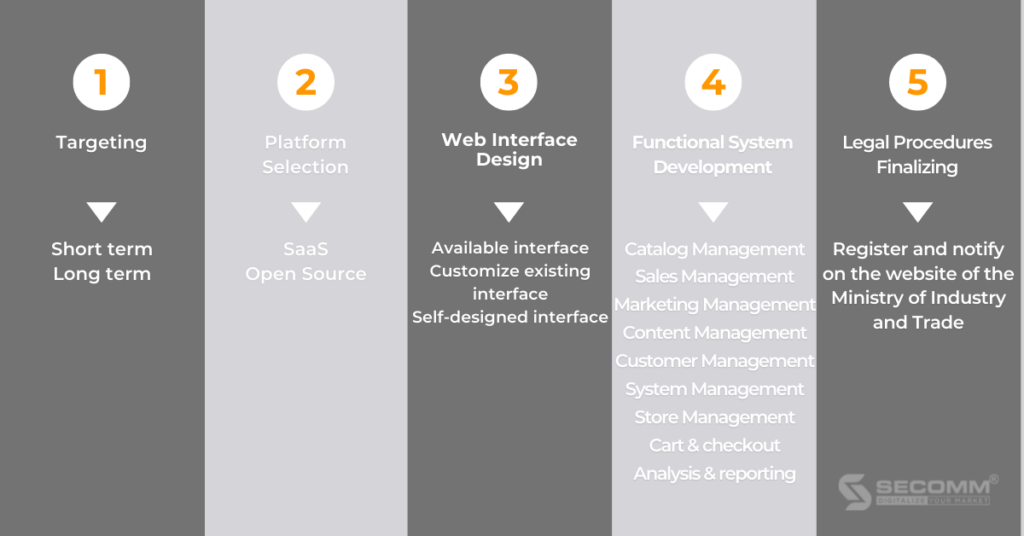
The very first thing that furniture businesses need to do is to determine their short-term and long-term goals and priorities before starting to develop an eCommerce website.
To accomplish the anticipated revenue increase in the short term, firms should place a priority on promoting marketing activities, tracking and analyzing customer behaviour, and assessing the efficacy of marketing initiatives. Furthermore, user experience is a crucial consideration that furniture companies must have in mind while advertising eCommerce.
Long-term objectives for firms could include raising brand awareness and coverage as well as evaluating the viability of individual items on online marketplaces. Effective marketing campaigns are also one of the long-term objectives that firms should take into consideration if they want to increase their online consumer base.
Businesses can take a lot of advice from specialized eCommerce implementation consulting units with a lot of experience in consulting a long-term roadmap to get the right list and priority of goals for both this period and beyond since they currently have little data to analyze and evaluate for the entire process.
There are currently two categories of platforms available on the market that enable the development of expert eCommerce websites and are highly well-liked, namely SaaS platforms and Open-source platforms. When used to create eCommerce for the furniture sector, these two types of platforms will each have the following advantages and disadvantages:
A service-based software application distribution mechanism for eCommerce commercial purposes is the simplest definition of a SaaS platform. To put it another way, the service provider develops and maintains software to aid in the creation of an eCommerce website, and the firm pays a set fee to use this service.
With SaaS platforms, the provider will own and manage the source code and data because the complete enterprise website system is hosted on the provider’s server. This means that the service provider will be in charge of handling and resolving technical issues that arise during the implementation of eCommerce by businesses.
Popular SaaS platforms are especially favored by businesses today, such as Haravan, Shopify, BigCommerce, etc.
Some of the advantages of the SaaS platform include:
The leading furniture enterprises in Vietnam using the SaaS platforms to build eCommerce websites include
However, there are still several drawbacks to the SaaS platform that should be taken into account:
Open Source Platform is software with generally available source code that enables customers to obtain, upgrade, and modify additional features required for eCommerce company needs. Instead of being produced by a single corporation, open-source platforms are frequently created by a community of developers.
In addition, because it offers extensive customization options, this platform will be perfect for creating sophisticated eCommerce website systems tailored to a variety of industries, including the furniture industry.
This means that in order to efficiently administer the website and handle technological issues, firms either need to work with expert eCommerce website builders or develop a team of highly qualified internal workers.
In Vietnam, the most popular Open Source platforms to mention are Magento, OpenCart, WooCommerce (WordPress Plugin), etc.
The outstanding advantages of the Open-Source platform:
The following well-known Vietnamese furniture companies are developing their online stores using the Open Source platform:
The disadvantages worth noting when implementing eCommerce with the Open Source platform:
Businesses should focus on making sure that the website interface conforms to UI/UX standards, clearly displays the brand’s distinctive characteristics and those of the furniture industry, and is synchronous in terms of product presentation and layout when designing the interface of an eCommerce website.
So, businesses can select one of the three methods listed below to create the website interface:
Firms should typically only use methods 1 or 2 at this point because the functional system is still in its early phases and easily found in the available interface.
In phase 1, businesses can prioritize the development of a system of basic functions needed for a complete furniture eCommerce website, specifically as follows:
The final step of building a basic eCommerce website is completing the necessary legal procedures for the website to be allowed to operate legally. Businesses can follow the simple registration steps as instructed at the eCommerce Management Portal.
This is a mandatory requirement of the Ministry of Industry and Trade for every individual or organization that owns an eCommerce website to sell goods and to perform the registration/notification obligation on time.
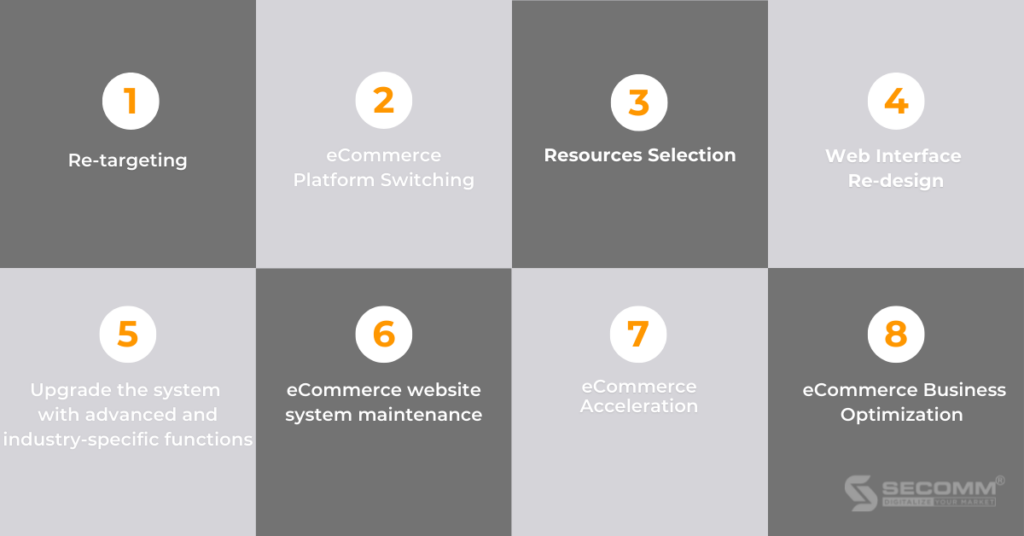
Along the journey of business development that comes with ever-changing consumer needs, business goals and strategies need to be adjusted and reconfigured to fit the current business landscape In addition, at this stage, businesses also have problems, data, and insights about their online users, so setting goals will be easy.
In the short term, companies can use efficient marketing techniques to locate and connect with a wider pool of new potential clients online and boost online sales.
In the long run, market sector expansion and building a loyal customer base might be objectives for furniture eCommerce firms. In the second step of the trip to create a successful eCommerce website, businesses will simply develop and implement marketing strategies in accordance with the product features and individual directions of each business by identifying the target market segment.
Businesses must prioritize thinking about the time and cost of investing in a furniture eCommerce website system in addition to short- and long-term objectives because at this stage, the cost and investment budget will frequently be substantial and much higher than the above basic building phase.
If a company decides to use the SaaS platform to create an internal eCommerce website in the first stage, it will not be able to satisfy the expectations for development and expansion in the second stage due to its restricted customization and capability. Businesses should now convert to an open-source platform with well-known names worth considering, such as Magento, WooCommerce, Ziel Commerce, etc., in order to create an advanced furniture eCommerce website.
Following are some criteria for furniture companies to take into account when selecting an Open Source platform:
Businesses should focus on the costs associated with switching from a SaaS platform to an Open Source platform, the time required for staff to adapt to the new platform, the risk of data loss, and any errors that may occur during the changeover.
Resource selection for the deployment of an advanced system must be made with considerable thought, in contrast to the basic system development phase. Businesses have the option of creating an internal team or hiring a professional website developer to assist them.
The business will hire and train skilled and specialized IT people on the selected platform for internal team building which requires a lot of time and money, but it will improve resource management and control and actively adapt the development of the eCommerce website system in line with the original objective.
Businesses frequently consult several eCommerce website developers before choosing the finest one for their collaboration. The needs of the businesses for an eCommerce website will thus be satisfied as anticipated, the collaboration process will go smoothly, and the businesses will gain more expertise and experience in website development from that partner, which will provide them with directions consistent with the development trend of the furniture eCommerce industry.
These are the criteria that businesses should consider when choosing: In-depth knowledge and experience in eCommerce and the furniture industry; professional working team; clear and detailed working process; ability to quickly handle problems that arise during website construction.
Businesses are not required to update the website interface while switching platforms. However, the redesign of the website interface to fit the Open Source platform is now turning out to be a beneficial piece of advice given the new company development plan introduced concurrently with the implementation of eCommerce websites at a more advanced level.
Similar to the preceding period, companies have three alternatives for designing the user interfaces of their eCommerce websites: they can use the existing interface, customize it based on the existing interface, or create their own interface. To ensure the distinctiveness of the brand and the particularity of the furniture eCommerce industry, businesses should typically use methods 2 or 3 to develop the interface at this stage.
Businesses should concentrate on establishing a system of advanced and specific features of the furniture eCommerce industry to suit the new development phase, in addition to the basic functions that have been established for the eCommerce website system in the early stages.
Businesses may better grasp the challenges of implementing intense furniture eCommerce and provide solutions to address those challenges and fulfil the market’s rising expectations thanks to advanced and distinctive functions.
As a result, companies use AR technology to improve the consumer experience. While augmented reality (AR) technology is built on virtual reality (VR) technology, it focuses on fusing the actual environment and digital data to give users the ability to view digital data in the physical world. The furniture eCommerce sector makes extensive use of this technology.
Customers now only need to download the company’s AR program, turn on the camera, and evaluate the product’s fit with the area of the house rather than physically going to the store to see the things and try them on to see whether they fit.
Customers’ buying experiences are improved and made more unique by augmented reality (AR) applications, which convert traditional marketing into interactive marketing. IKEA Place App, the furniture buying an app from “big man” IKEA, is a wonderful example because it offers clients a novel and engaging shopping experience.
Customers can use their smartphones to place and try out the more than 2,000 tables, chairs, sofas, shelves, and other household appliances in a real room, change the viewing angle, and zoom in and out. Also, the software will scale items to their true size with 98% accuracy.
A sophisticated eCommerce website system demands a great deal of experience and effort to operate and maintain. This is the procedure of continuously maintaining, updating, and upgrading the entire system to aid firms in foreseeing and resolving problems (for example, sudden increase in traffic from the promotions that stimulate shopping).
That supports sustained and persistent online sales growth, which is important for eCommerce businesses in general and furniture eCommerce in particular as they compete for a market share of this “pie,” which is “delicious” but can be challenging to consume.
Furniture eCommerce enterprises readily accomplish growth above and beyond expectations by putting into practice efficient business and marketing strategies.
Therefore, the entire process—from planning through implementation—must be structured with effective, practical solutions that have been demonstrated to work. Implementing Omnichannel, eCommerce Marketing, and SEO optimization are some suggested methods for eCommerce enterprises to accelerate growth.
The journey of developing an eCommerce website ends with measuring, analyzing, and optimizing eCommerce business activities.
Businesses can use analytics tools such as Google Analytics, Google Tag Manager, Facebook Pixel, etc., to track, update and measure website performance metrics as well as the effectiveness of marketing campaigns.
From there, the eCommerce business strategy for the next stage of development will be carefully and methodically planned thanks to clear and detailed reports & analysis.
The journey of developing an eCommerce website for the furniture sector is divided into two phases with clear step-by-step instructions. Businesses will, however, be able to go in one of two strategies, each with its own advantages and drawbacks, depending on the platform they decide to use for the first phase.
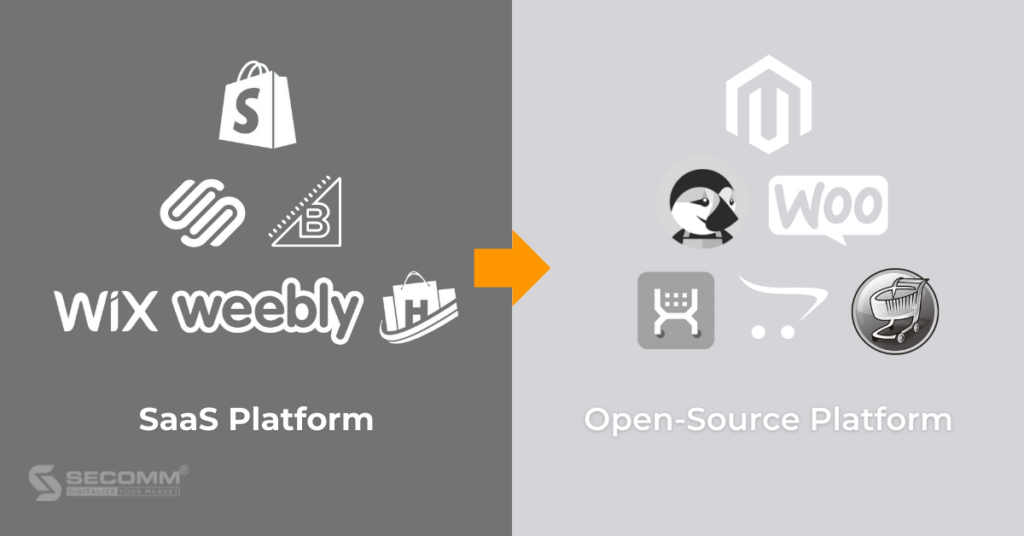
The quick deployment time of a SaaS platform is one of its benefits. In order to swiftly enter the market and create a simple website system, enterprises can pick SaaS at an early stage. Businesses will evaluate the furniture items’ suitability for the eCommerce market’s demands as well as their influence on upcoming consumer trends there.
The switch to an open-source platform will make it more reasonable to extend and develop a specialized website system in order to raise brand awareness and increase online sales over a period of time long enough for businesses to become accustomed to and adapt to the ever-changing market.
Businesses will save a lot of money by implementing eCommerce utilizing the SaaS platform early on as opposed to developing a website using the Open Source platform. Businesses can use that capital to invest in other activities, such as marketing strategy, which is one of the crucial components for the success of any company, not only furniture companies, because the initial cost of a SaaS platform is typically not too expensive.
The ability to conduct business while gaining knowledge and expertise in technology and how to efficiently implement eCommerce is another advantage of this approach to developing an eCommerce website. In general, running a business is challenging, and operating an eCommerce firm is even more challenging in today’s continuously shifting market and technologically complicated and varied trends.
As a result, acquiring knowledge and real-world experience is both a necessary and a sufficient condition for businesses to achieve extraordinary success. Because a SaaS platform is simple to use and doesn’t require a lot of technical knowledge, choosing one to deploy in the early stages can help businesses become comfortable with eCommerce terminology, concepts, and how to build a website at a basic level.
Due to the complex requirements of an extensive eCommerce website system, businesses will need support from a strong IT team during the second stage of switching to the Open Source platform. The collaborators and partners will then complement each other’s knowledge and experience at that point.
As was stated in the introduction to the platform, the fundamental functional system of SaaS platforms will not be sufficient to meet the needs of the eCommerce business at the growth and scalability stage.
Therefore, whether you like it or not at this moment, you must switch to the Open Source platform in order for the eCommerce system’s expansion and scalability goals to continue to be successfully implemented.
When adopting this approach for the process of developing and perfecting the website system, eCommerce firms in general, and furniture enterprises, in particular, should pay close attention to this first drawback.
Businesses will significantly reduce the initial cost of the working process by using this strategy. The initial benefit, though, later turns into a detriment in the long run. In addition to the ongoing platform usage fees that companies must pay for the SaaS platform, additional service costs are also significant enough to complicate and make cash flow management challenging to manage.
Because of the characteristic of the SaaS platform, customers are not permitted to keep the source code and data when switching platforms, thus enterprises must once again pay the initial development costs after the stage of moving to the Open Source platform. Additionally, the cost of development using an Open Source platform is rather costly, ranging between $30,000 and $50,000 on average.
Additionally, firms will “headache” from the sunk costs associated with switching platforms. The cost of staff training is seen as an additional expense rather than a true investment if you are accustomed to the new system, especially at a time when the economy is anticipated to rebound following COVID-19.
Furthermore, it is easy to make mistakes during the platform shift that result in the loss of crucial firm data, such as data that is closely tied to financial matters. With all the hazards mentioned, managing cash flow and maintaining balance is still a challenging issue that obviously affects furniture companies’ eCommerce business strategies.
Strategy no. 1 will be appropriate for startups or SMEs learning about eCommerce and entering the market safely based on the pros and disadvantages highlighted.
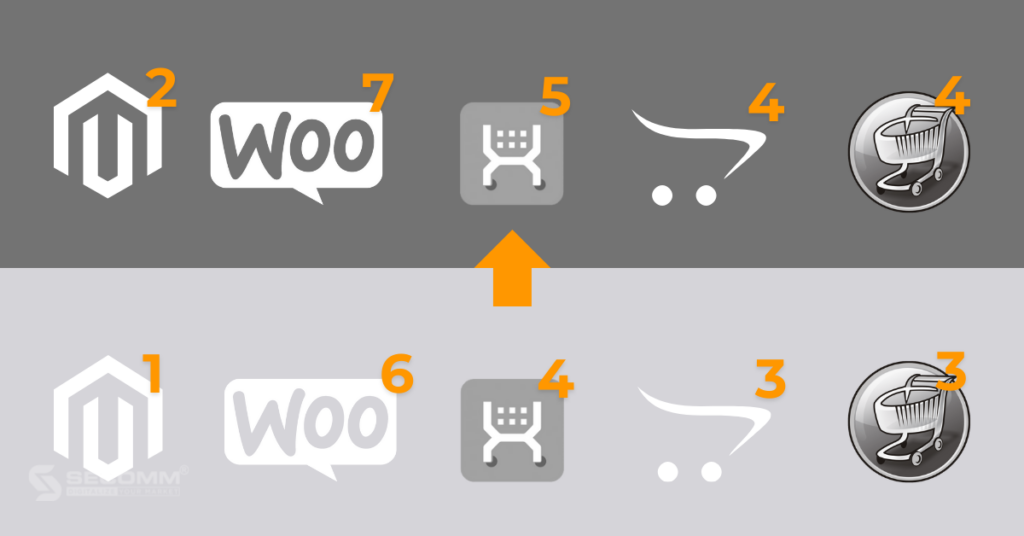
With the second strategy, companies develop eCommerce websites on the Open Source platform from the very beginning. Due to the smooth website development process, businesses merely need to gradually improve their functional systems in line with their growth and scale rather than switching platforms.
Long-term cost savings for enterprises are made possible by this seamlessness. In which, addition to saving money by avoiding the cost of starting over when switching platforms as a first strategy, firms also minimize the danger of data loss and spend less time and money training staff to use the brand-new platform.
The second approach, on the other hand, aids firms in laying a strong foundation right away with a professionally designed and smooth eCommerce website system and a team of essential technical personnel who are knowledgeable and well-trained from the start.
Similar to the first strategy, despite its notable benefits, the second one still has some drawbacks that companies should take into account before implementing furniture eCommerce. The market penetration will be slowed down if Open Source is chosen for the first phase of the deployment process.
All of the website’s features will be designed from the ground up because it will be built on an open-source platform. It takes the team a lot of effort, time, and brainpower to accomplish the entire process, which often takes between three months and a year.
Therefore, the lengthy implementation period is a drawback that slows down market entry, increasing the risk of falling behind in the competitive eCommerce race. Correspondingly, firms will have to pay a considerably larger upfront development fee than they would for a SaaS platform.
When companies must invest a significant sum of money in a platform upfront yet are unsure of its viability and effectiveness for adopting eCommerce, there is a risk involved.
From a business perspective, this drawback is viewed as an opportunity cost, meaning that while this strategy offers firms enormous long-term rewards, it also comes with trade-offs that present difficulties in the short term.
To meet growth and scalability objectives as well as avoid potential risks from switching platforms mentioned in advance, or to make the process of eCommerce implementation simple and efficient.
Therefore, it is incredibly appropriate to invest time and money in starting from scratch with Open Source.
The second approach can be appropriate for firms with a variety of business models, including B2B, B2C, and B2B2C, when the advantages and downsides are carefully thought.
With the high growth rate of Vietnam’s economy, eCommerce makes a significant contribution to promoting the flow of goods and services, supporting small and medium enterprises, especially those in the furniture sector, to seek effective business opportunities in the context of deep integration and the spread of the 4th Industrial Revolution.
Moreover, a qualified eCommerce website serves as a “bridge” for furniture companies to achieve that integration objective. However, building a comprehensive, modern, and professional eCommerce website is never simple and necessitates a significant financial investment.
The journey to develop an eCommerce website is described above in great detail by SECOMM with a few extra tips that furniture businesses can refer to shorten your own planning.
With many years of experience in successfully implementing eCommerce for many customers in many countries in recent years, SECOMM understands the difficulties and challenges in the process of implementing an interior eCommerce website.
Contact SECOMM today for free support and advice.
 2
2
 4,334
4,334
 1
1
 1
1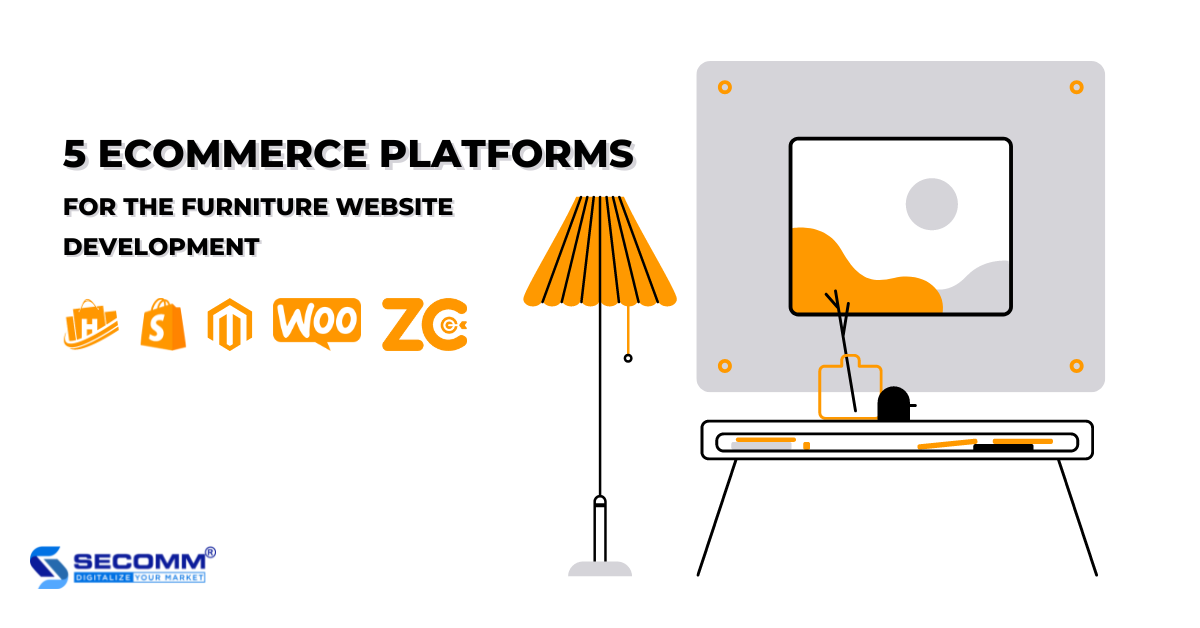
eCommerce is currently developing into a fresh and promising sales channel for furniture companies in addition to the traditional sales channel. Businesses must work hard to sustain and achieve breakthrough growth through eCommerce platforms, though.
As a result, numerous furniture companies started developing online furniture business websites and found surprising success, such Sieu Thi Noi That va Trang Tri Baya, Nha Xinh, Cozy, or Noi Phat Hoa Phat.
These websites’ success can be attributed to their early selection of an adequate and suitable eCommerce platform. Which platforms are appropriate for the furniture industry, then?
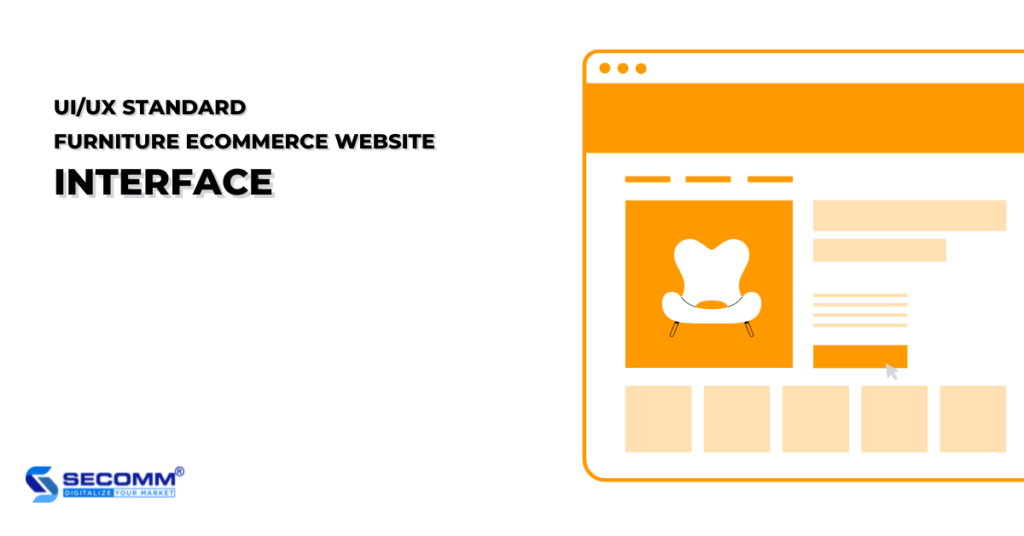
The first criterion businesses set when developing an eCommerce website is a standard UI / UX interface, friendly to users who enjoy shopping for furniture online and other home goods to increase customer interaction.
Similar to eCommerce websites in other sectors like fashion, electronics, etc., websites in the furniture sector must feature stunning and high-quality photographs and videos.
This makes it simpler for companies to communicate product information to customers, especially with banner advertisements that have an easy-to-use interface and a pleasing style that will pique shoppers’ interests.
Businesses also need to consider other concerns including call-to-action button placement, cross-device compatibility, and layout designs that display a range of product designs from the navigation bar to page-by-page details.
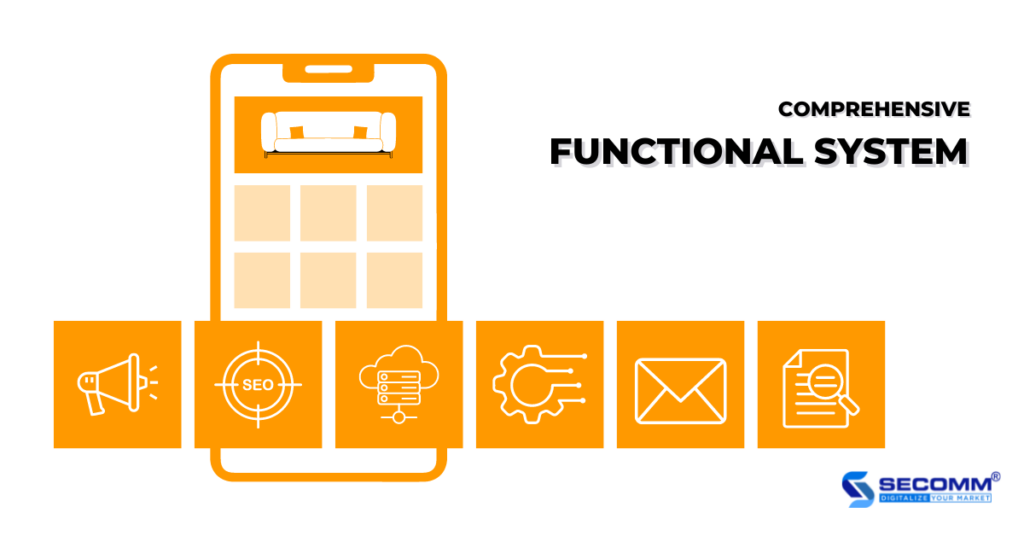
Furniture firms need a functional system from basic to advanced to fully meet consumers’ buying expectations and maximize the user experience. This system should include:
Businesses also need to develop some additional specialized features to address the furniture industry’s “own challenge,” such as:
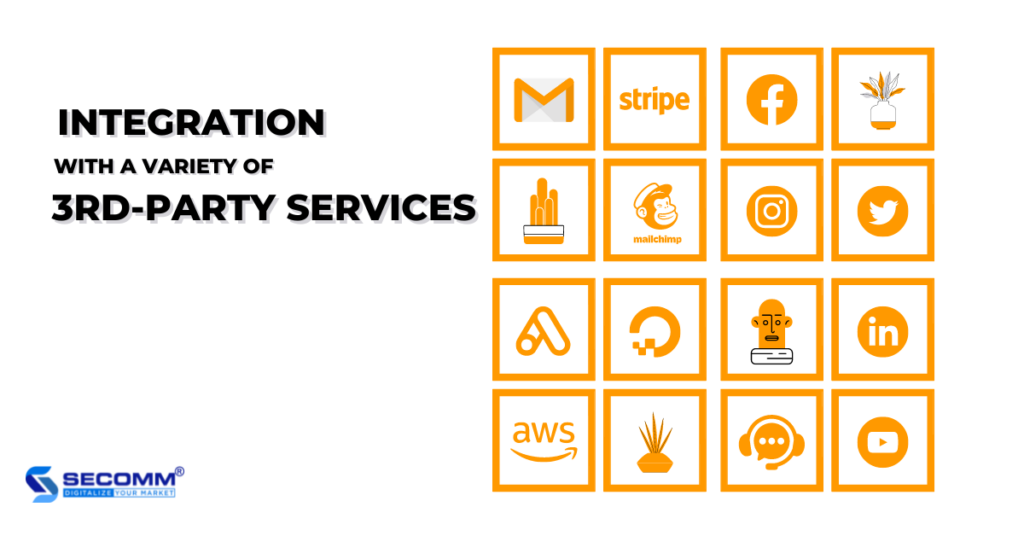
Furniture businesses frequently integrate a range of payment options, shipping services, management software, and business analysis tools to optimize eCommerce business systems in order to provide customers with a comprehensive shopping experience.
Some popular payment methods businesses can integrate on the website to diversify payment methods to help customers have many choices such as card payment; eWallet; payment gateways.
Businesses might take into consideration software like ERP (SAP, Salesforce, Oracle), among others, when integrating back-office administration and operation software.
Finally, incorporating BI tools like Tableau, Looker, etc. will aid in the long-term analysis of business plans.
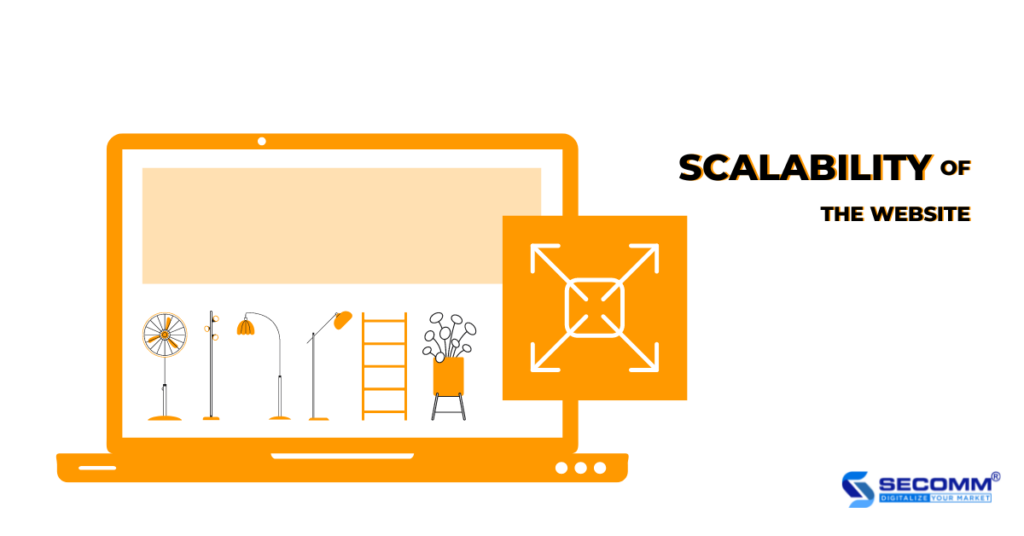
Businesses that are just starting to use eCommerce won’t concentrate on the website’s scalability in the future because platforms that provide this feature are sometimes hard to find. But tactically, spending money on a platform that facilitates this function will provide organizations an advantage over rivals in the market.
These aid furniture companies in making necessary adjustments, creating new features, and expanding their online systems to support several stores, languages, and currencies in the future.
Haravan was founded in 2014 and is a very popular and popular eCommerce deployment platform in the Vietnam market with a variety of solutions for businesses and individual sellers.
Pros:
Cons:
=> Rating: 2/4
Haravan is suitable for start-up furniture businesses or SMEs (small and medium-sized enterprises) with operations mainly in Vietnam.
Shopify is a popular SaaS platform in the world that provides a variety of solutions for businesses of all sizes to successfully build eCommerce websites.
Pros:
Cons:
=> Rating: 2/4
Shopify is considered suitable for start-ups or SMEs with global operations.
ZielCommerce is an eCommerce platform with ready-made solutions specialized for the furniture industry.
Pros:
Cons:
=> Rating: 3/4
ZielCommerce will be the optimal choice for B2B, and B2C furniture businesses to deploy eCommerce websites or build mobile apps. However, this platform is not really popular in the Vietnamese market but is especially favored by foreign furniture retailers such as Frampo, Zeyka, etc.
WooCommerce is a free WordPress plugin that allows businesses to transform a regular WordPress website into a professional eCommerce website with full features and easy customization with just a few simple steps.
Pros:
Cons:
=> Rating: 3/4
WooCommerce will be suitable for furniture businesses who are familiar with the WordPress platform and want to develop an eCommerce system.
Magento is a popular open-source commerce platform in the field of eCommerce, with nearly 200,000 websites in use. Currently, Magento has 2 versions: Magento Open Source (free), and Magento Commerce (paid).
Pros:
Cons:
=> Rating: 4/4
Magento is appropriate for a range of furniture business types, including B2B, B2C, and B2B2C, as well as for various business sizes, including start-ups, SMEs, and major companies. However, large organizations use Magento because it is frequently relatively expensive to deploy.
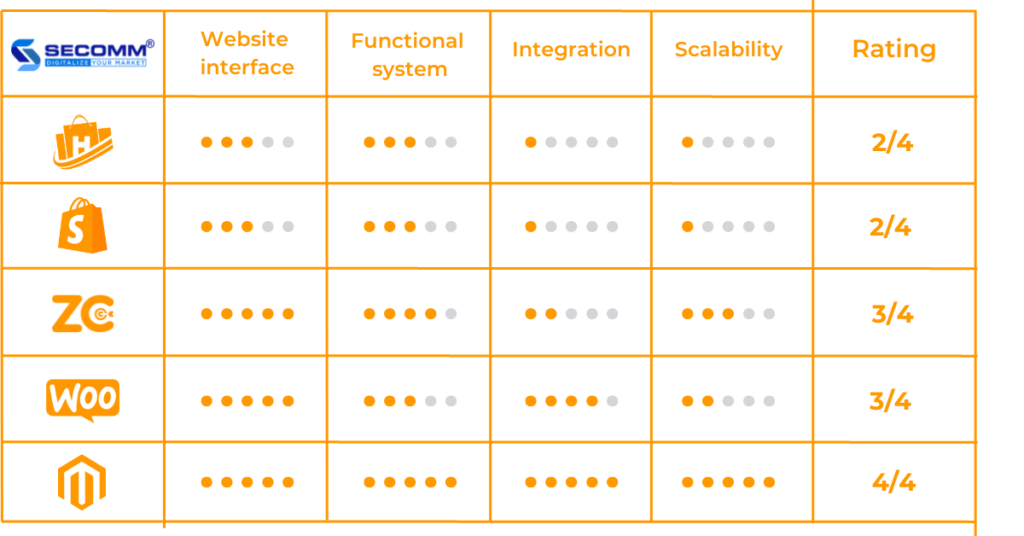
Choosing the right platform is an extremely important first step when building an interior eCommerce website. Choosing the right eCommerce platform will help businesses save budget and time to build a website while increasing competitive advantage and sustainable growth. On the contrary, when choosing the wrong platform, it will cost businesses a lot of time and budget to deploy and switch platforms many times. Therefore, businesses need to consider the goals and problems in the current model to be able to choose the most suitable platform.
With many years of experience in successfully implementing eCommerce for many customers in many countries, SECOMM specializes in providing consulting services with comprehensive and professional eCommerce implementation solutions.
Contact SECOMM today for free support and advice.
 2
2
 4,978
4,978
 0
0
 1
1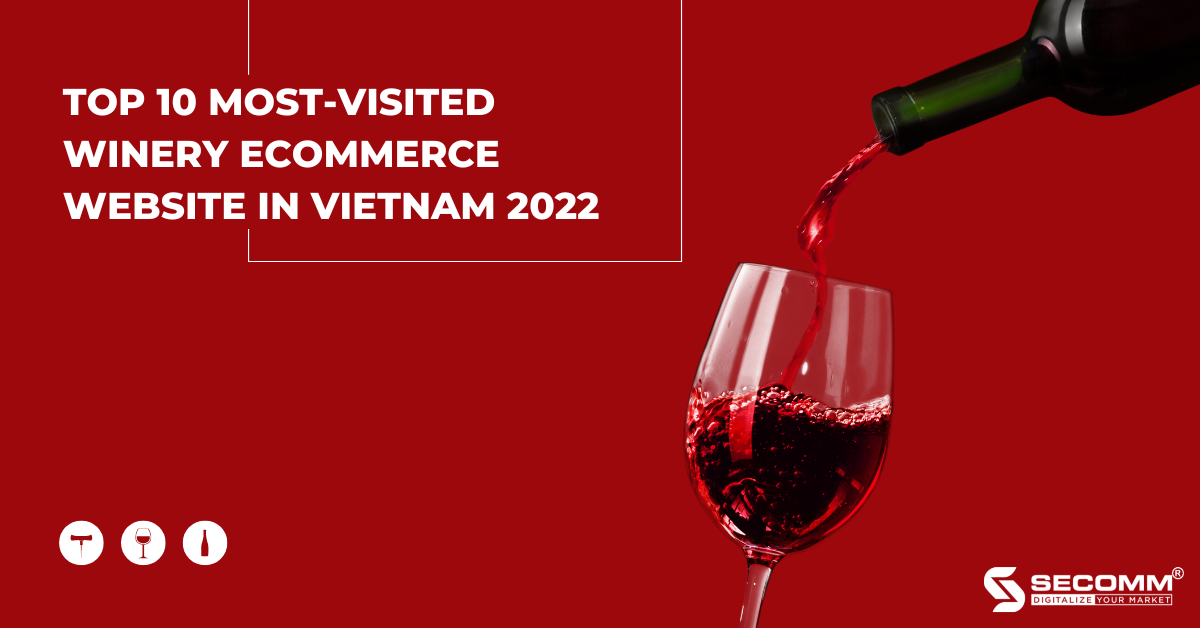
Many businesses have promoted winery eCommerce in the context of the Covid-19 pandemic, which has been described as a “nightmare” for many economic sectors but appears to be “luck” for eCommerce.
According to Rabobank, eCommerce sales in the wine industry will reach USD 6 billion in 2021, up 4% from the same period in 2020. As said by Forbes, the percentage of online wine orders increased significantly compared to previous years before the pandemic.
Recognizing the potential of this field, many wineries in Vietnam have begun to develop eCommerce websites in order to quickly establish a market position.
Nam An Market is a retail chain of healthy food stores that Nam An International Investment Co., Ltd. invested in in 2012. Its eCommerce website, which receives over 100,000 visits per month, was built successfully on the Haravan platform.
Aside from fruits, vegetables, meat, and fish, alcoholic beverages, particularly wines, are popular on Nam An’s website. Furthermore, the online shopping experience focuses on safety, convenience, speed, reasonable prices, and various appealing incentives.
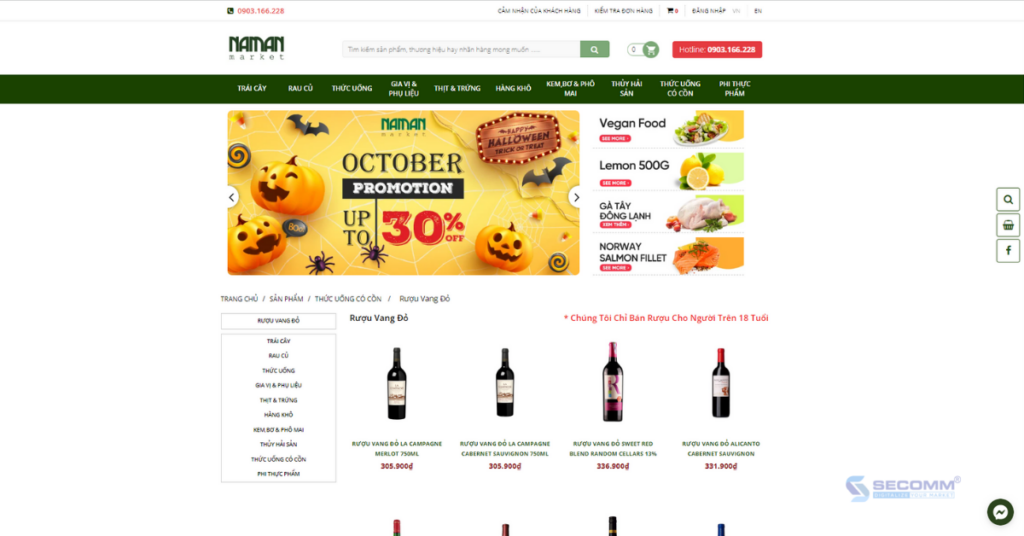
Winemart was founded in 2015 to provide consumers with the best services and products possible. Currently, Winemart operates in two main areas:
Winemart’s eCommerce website receives over 60,000 visits and is regarded as one of Vietnam’s most prestigious online wine suppliers.

Sieu Thi Ruou Ngoai is not only an eCommerce website that sells imported foreign wine but also a knowledge system about culture, history, and how to choose, preserve, and enjoy wines from around the world, allowing people who are passionate about or want to learn about wine culture to share and improve their understanding.
Sieu Thi Ruou Ngoai now has its own eCommerce website system, which receives over 50,000 visits per month and is highly regarded by customers for both product quality and online shopping experience.
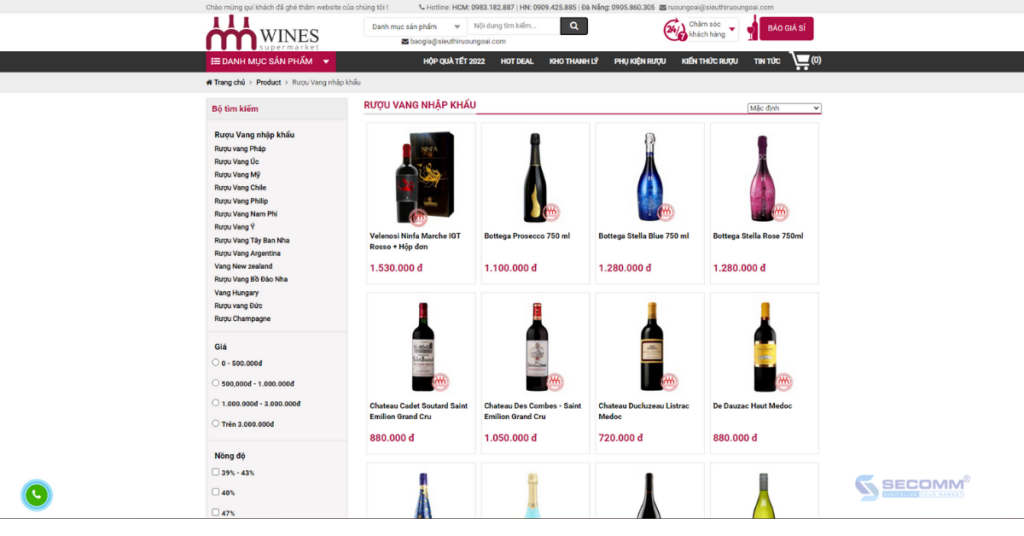
Cao Minh was founded and developed by CEO Thanh Dung, a wine enthusiast who is passionate about learning about wine culture. After many years of research, learning, and improving service quality, Cao Minh has fully converged all the factors to become Vietnam’s leading wine supplier.
Cao Minh’s website is written in PHP and includes all the necessary features and an easy-to-use interface. Cao Minh Wine has become a household name among customers who prioritize online wine shopping.
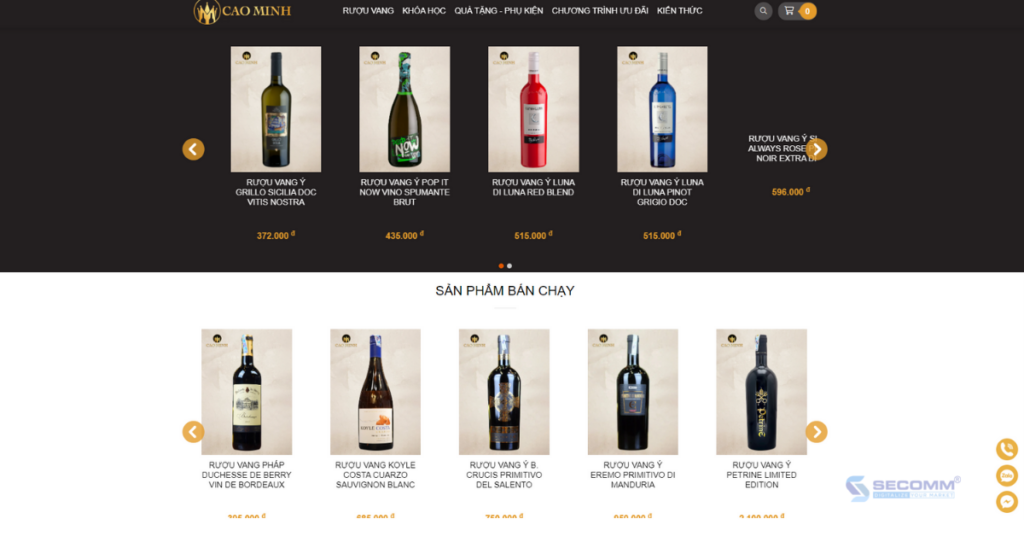
Kho Ruou, also known as Kho Ruou Co., Ltd., is Vietnam’s leading importer and distributor of foreign wines and spirits, with over 3000 products of wine, spirits, beer, Japanese sake, and genuine high-end accessories.
Kho Ruou pursues an eCommerce business model by investing in developing a website using the WooCommerce platform. As a result, the company can easily reach a large number of potential customers both online and offline.
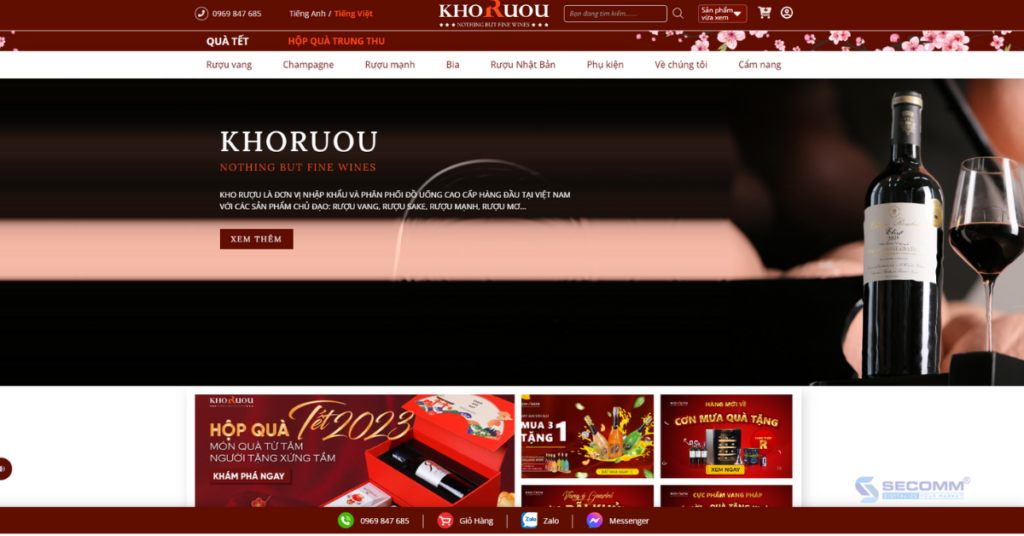
When eCommerce is a new trend widely praised by the Covid-19 pandemic. To keep up with that trend, Wine Tot built an eCommerce website with WooCommerce, which helped to increase brand coverage and reach a large number of potential customers on the Internet.
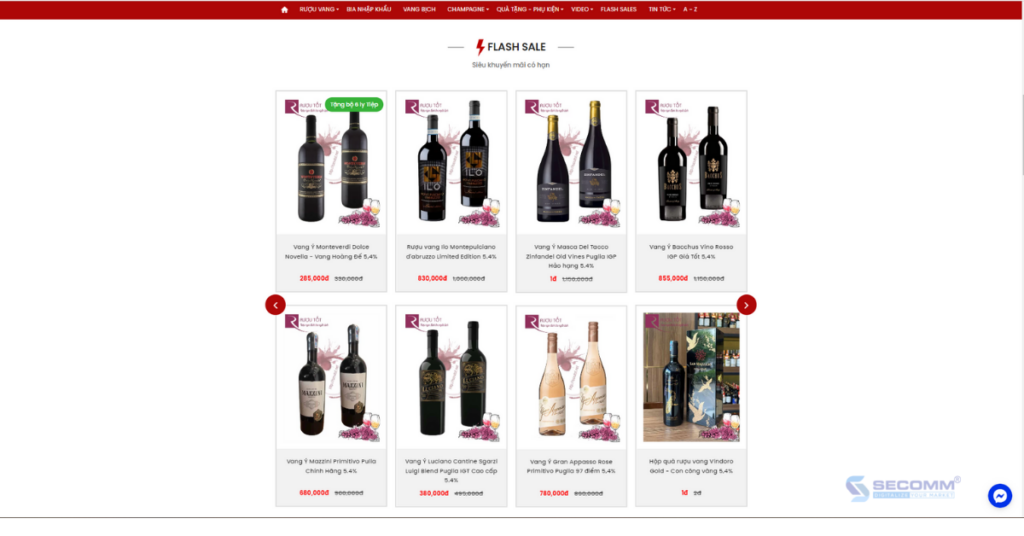
Ruou Nhap Khau is a wine eCommerce website operated by Ham Ruou Vietnam Co., Ltd, one of Vietnam’s leading import and distribution businesses.
Ruou Nhap Khau creates an e-commerce website with the PHP programming language. With an easy-to-use interface and good product quality and service, the company has gradually gained customer trust for its imported wine product lines ranging from popular to high-end.
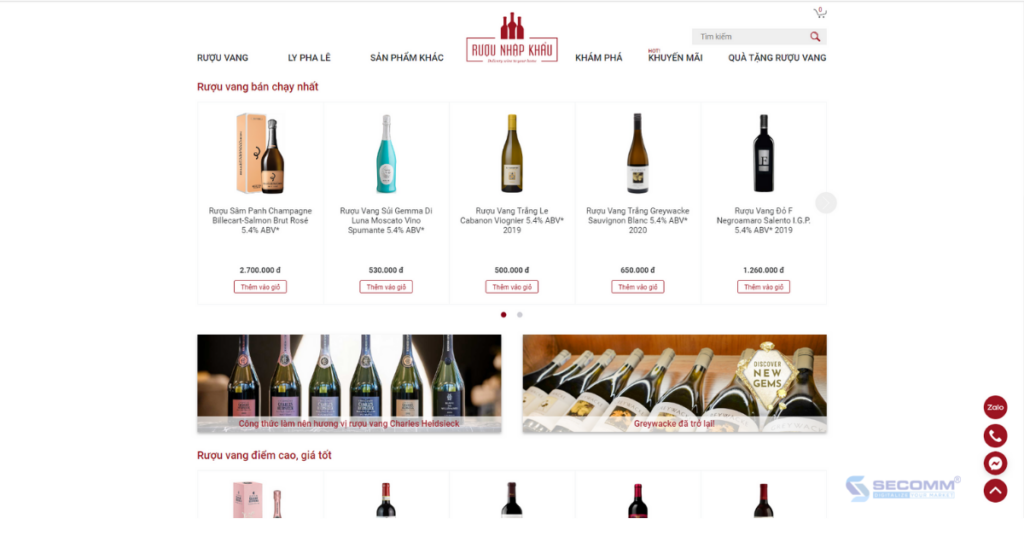
Sanh Vang is a wine distribution brand founded in 2015 by Saigon Hoang Kim Investment and Trading Company Limited. Sanh Vang has expanded its branch network to many provinces, including Ha Noi, Ho Chi Minh City, Bien Hoa (Dong Nai), and Buon Ma Thuot.
Furthermore, Sanh Vang’s eCommerce website receives over 25,000 visits per month, and the brand receives many positive reviews from customers due to its wine quality, competitive price, available stock, and variety.
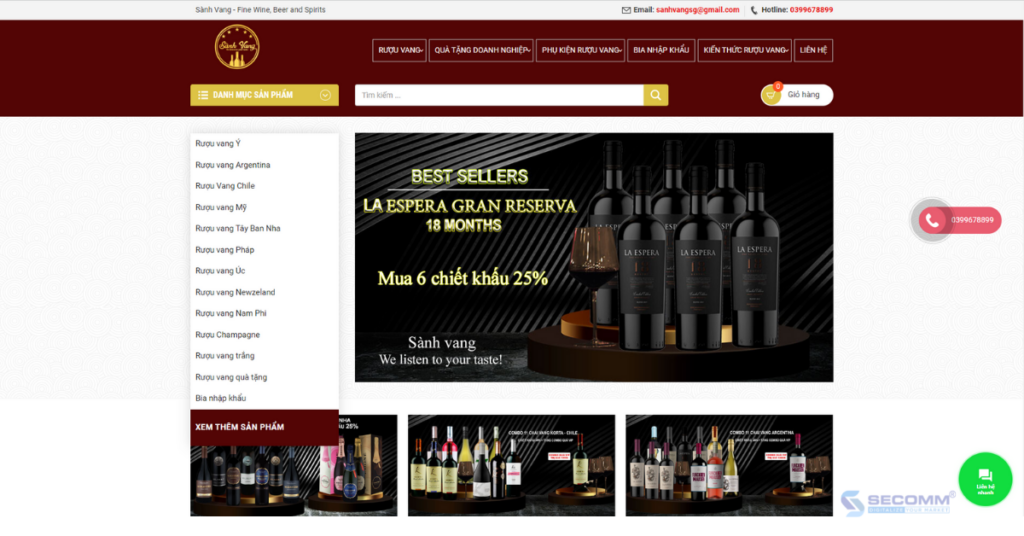
Winecellar, founded in 2007, is one of Vietnam’s largest wine companies, specializing in high-quality wine, beer, whiskey, food, mineral water, tea, and ceramic products. Winecellar, like Kho Ruou and Sanh Vang, uses the WooCommerce platform to implement eCommerce.
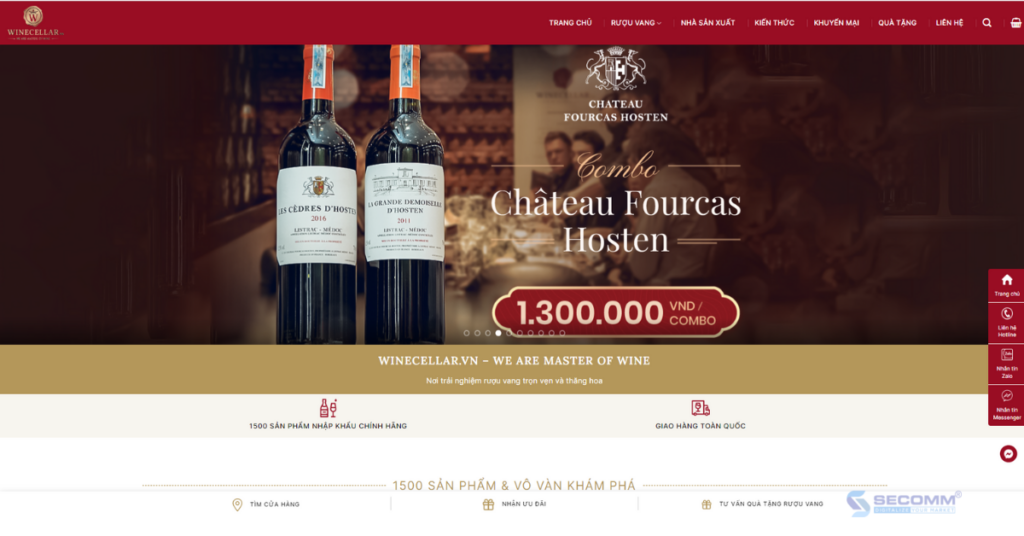
The Warehouse is a wine and spirits distributor in the Vietnamese market, as well as one of An Nam Group’s retail brands.
With a long-term and sustainable eCommerce business in mind, this brand has decided to invest in developing its own eCommerce website on the open-source Magento platform and continuously upgrading this system to provide a better eCommerce experience for customers.
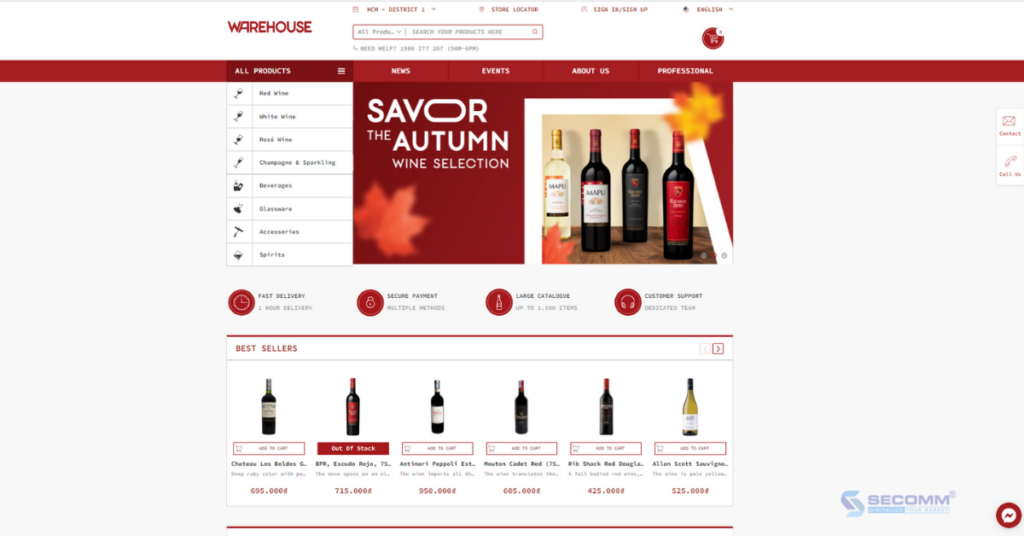
In general, Vietnamese wine brands are reaping numerous market successes after successfully developing their own eCommerce websites. However, the wine eCommerce business necessitates careful consideration of tactics to take the most effective steps not only in the short term but also in the long term.
Furthermore, wineries need to find a support unit or build a highly qualified in-house team to help them to achieve a common goal.
With many years of experience implementing eCommerce in many countries, SECOMM provides free consulting services with professional eCommerce solutions.
Contact us today for free support and advice!
 2
2
 5,248
5,248
 0
0
 1
1
According to the latest of Ministry of Industry and Trade of the Socialist Republic of Vietnam in 2022, the eCommerce industry’s revenue is estimated at 13.7 billion USD, increase 16% compared to 2020 and accounting for 6.5% of the total retail revenue of Vietnam. Due to e-Commerce SEA, Vietnam’s eCommerce will grow by an average of 25% per year from 2022 – 2025, possibly reaching 35 billion USD in 2025.
The impact of the Covid-19 epidemic and social distancing orders, as well as changes in consumer behaviour, are driving the growth of this industry.
Thanks to super apps, such as Shopee, Lazada, Tiki, MoMo, and Zalo, it’s easier to deploy mini apps, creating a premise for inexperienced brands to build eCommerce systems to enter this billion-dollar market.
Shopee is the most popular eCommerce market in Southeast Asia and Taiwan. Shopee was founded in 2015 to provide people with an easy, safe, and quick online buying experience.
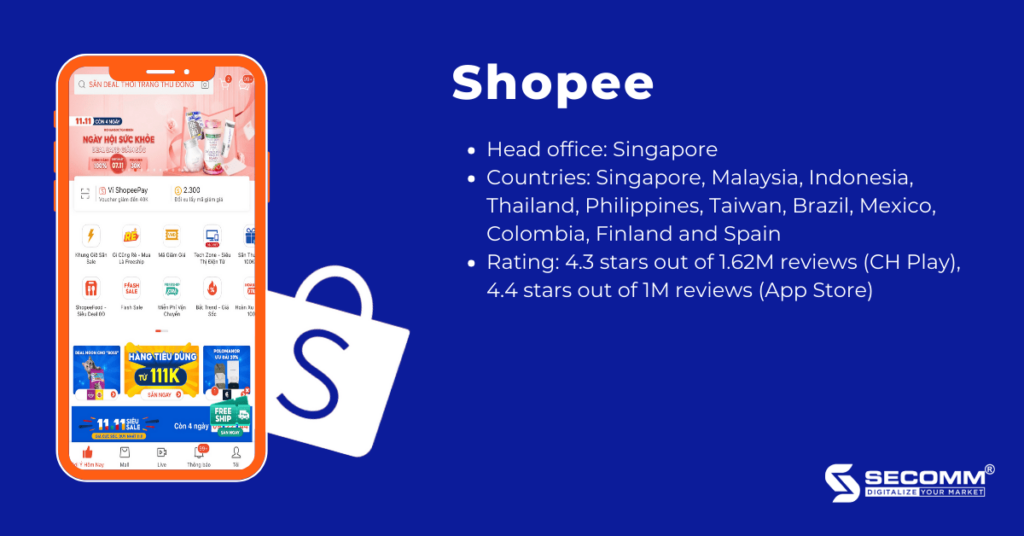
Shopee is gradually becoming an eCommerce super app, not only offering online shopping services but also owning various mini-apps such as Shopee Food, Shopee Mart, Shopee Wallet, insurance services from banks, booking flights, hotels and so on.
Lazada, founded in 2012, is one of Southeast Asia’s biggest eCommerce marketplaces. This brand has always been a pioneer in fostering regional development via commerce and technology, intending to service 300 million consumers across Southeast Asia by 2030.
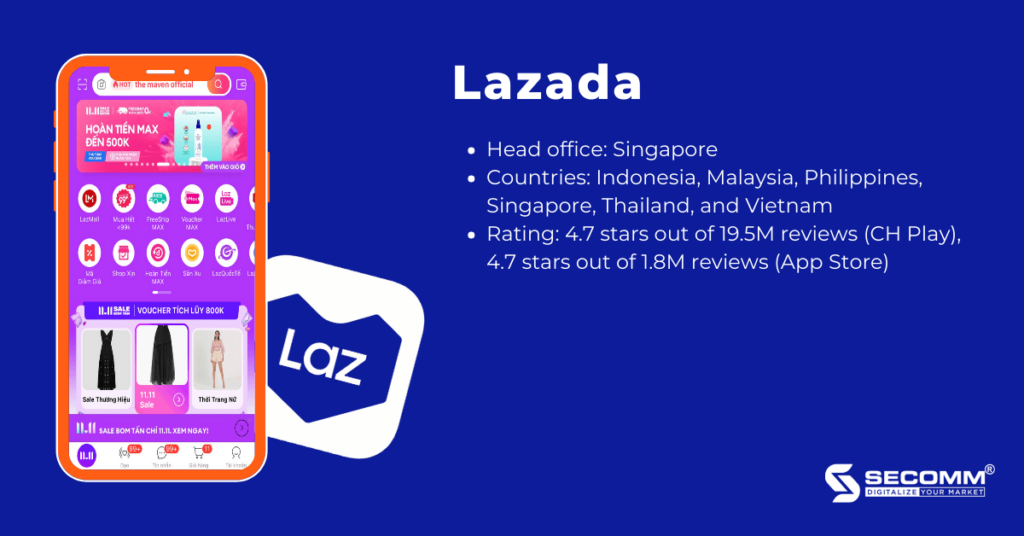
Like Shopee, Lazada has many mini apps and utilities for its own e-commerce business strategies, such as eM wallet, card and eVoucher recharge, online shopping, etc.
Tiki is one of Vietnam’s most successful eCommerce marketplaces. Tiki was founded in March 2010 as an online English book-selling site. Since then, Tiki has evolved into an eCommerce super app, focusing on delivering hundreds of thousands of goods from a variety of product categories.
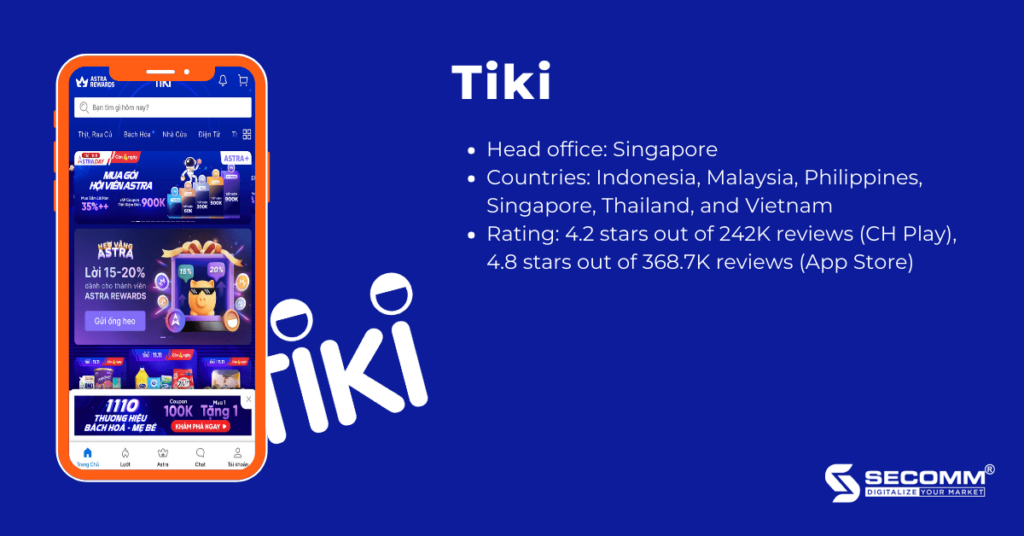
Tiki has been a pioneering marketplace in applying digital currency to business concepts, as proven by the launch of Astra, to boost up eCommerce. At the same time, Tiki refined its ecosystem by creating a series of extensions with mini apps from brands in various industries, including finance, gaming, food, shopping, health, insurance, entertainment, lifestyle, tourism, and community.
MoMo is an e-wallet created by Online Mobile Services Joint Stock Company (M Service) that allows users to make mobile payments and transactions. Through partnerships with more than 90% of Vietnam’s banks and 10,000 local businesses, the company dominates more than 80% of the market for digital payments. As of 2022, MoMo e-wallet has more than 31 million users.
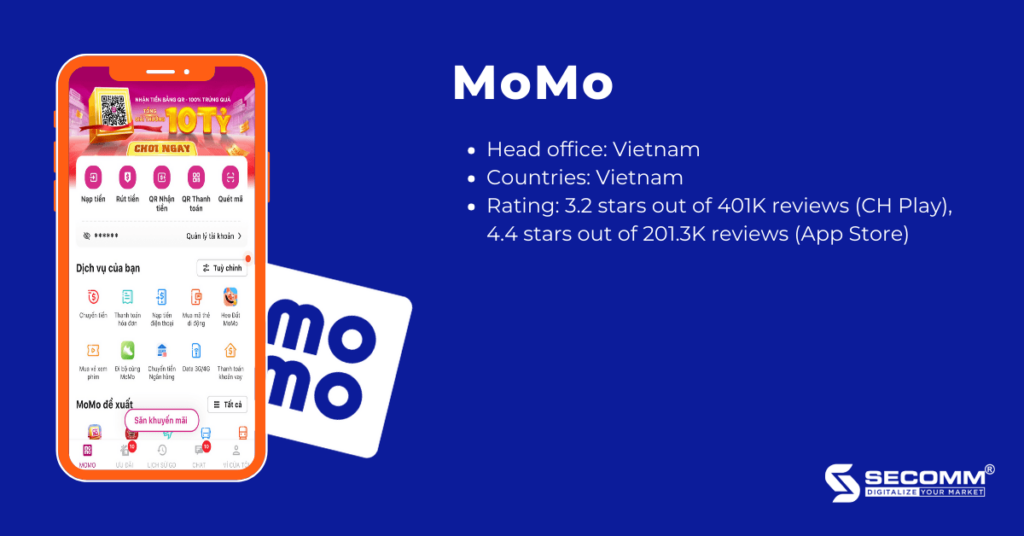
Since 2022, MoMo has developed a mini app technology, formally identifying itself as a super-payment app, helping small and medium companies to “climb on the shoulders of giants,” and construct an ecosystem for MoMo. In particular, utilities from businesses such as online shopping, restaurants, transportation services, tourism and hotels, investing and banking, medical services and so on.
Zalo was formally launched in December 2012, with the essence of a cross-platform instant messaging software built by the Vietnamese startup VNG. Zalo is a blend of Zing (a VNG-created social network) and alo (a phrase used to pick up a phone in Vietnam). Zalo has progressed to become a multi-functional, multi-platform social networking super app.
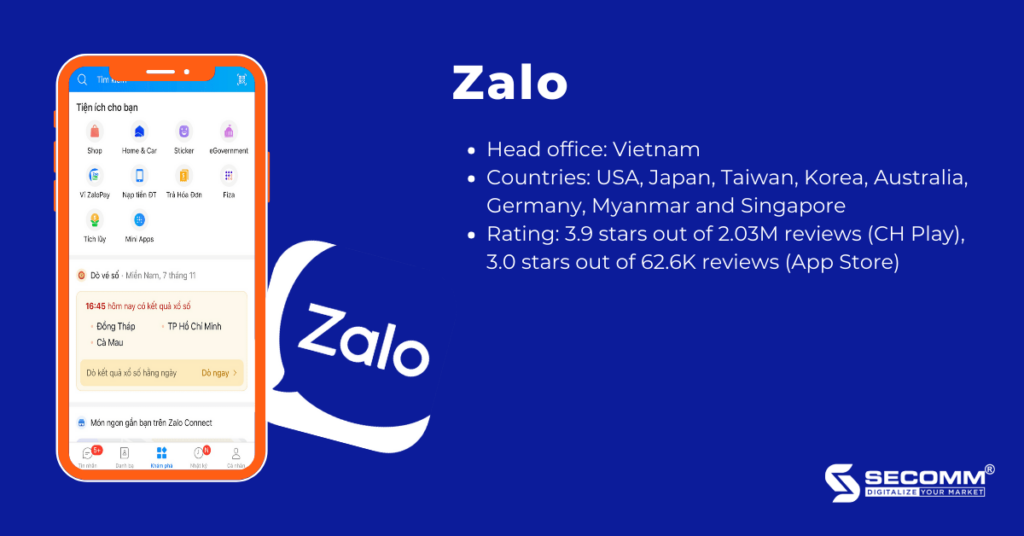
Like MoMo, Zalo created a new brand named Zalo Mini App to help other brands reach 65 million regular users on Zalo, and make diversity for this messaging platform. Since then, Zalo has also supported other services, primarily through partnerships with brands in finance, eCommerce, entertainment, games, restaurants and hotels.
As can be seen, the future of Vietnam’s eCommerce industry will continue to rely on these “giants,” thus businesses should incorporate eCommerce super apps into their business models as soon as possible to reap the full advantages of these applications. However, companies should not rely on these apps for long periods of time since it will result in a loss of customer data, income from commission per order, and so on.
With more than 8 years of experience in consulting and deploying eCommerce systems, SECOMM understands the challenges businesses face in implementing eCommerce business effectively.
So we provide a free eCommerce consultation to help businesses catch on to this industry!
 2
2
 8,308
8,308
 0
0
 1
1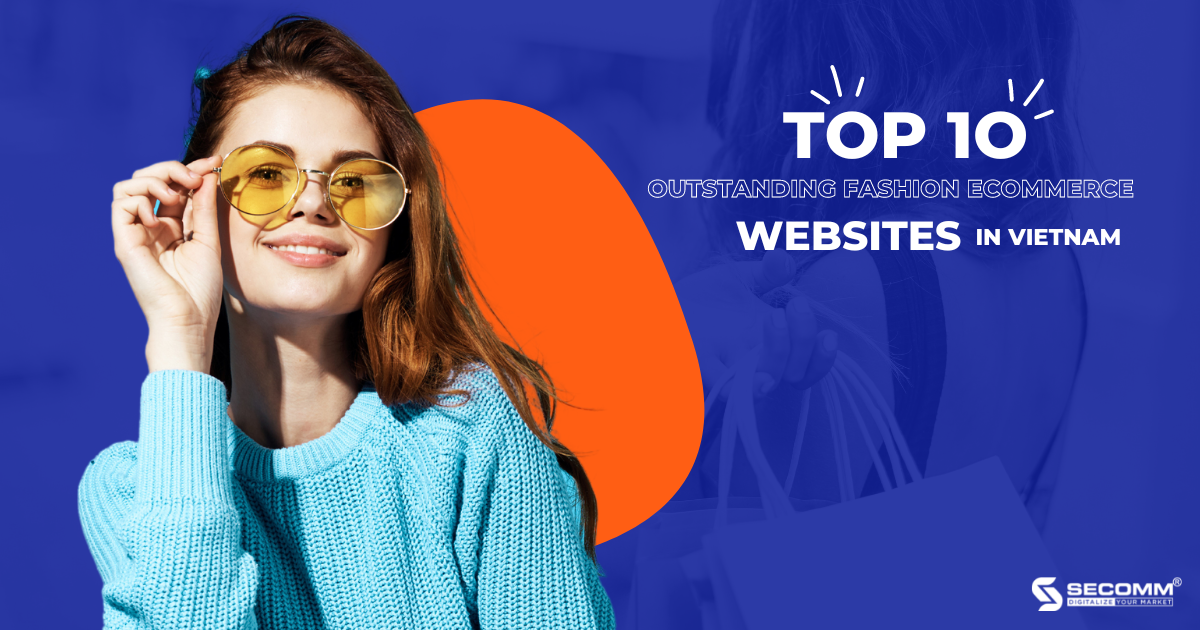
Fashion eCommerce is growing increasingly influential, particularly in markets with a young population, such as Vietnam, where demand for fashion and lifestyle is diversified.
Recognising this, several fashion brands have begun developing their own eCommerce websites to join this lucrative business swiftly.
Coolmate is a men’s fashion business started in 2019. With a D2C eCommerce strategy as the centre for business development, after only 2 years of implementation, Coolmate had a successful capital call on Sharktank with Nguyen Hoa Binh for 500,000 USD. By 2021, Coolmate’s sales may reach VND 139 billion, an increase of 3.5 times compared to 2020, setting the 2022 revenue expectation at 440 billion.
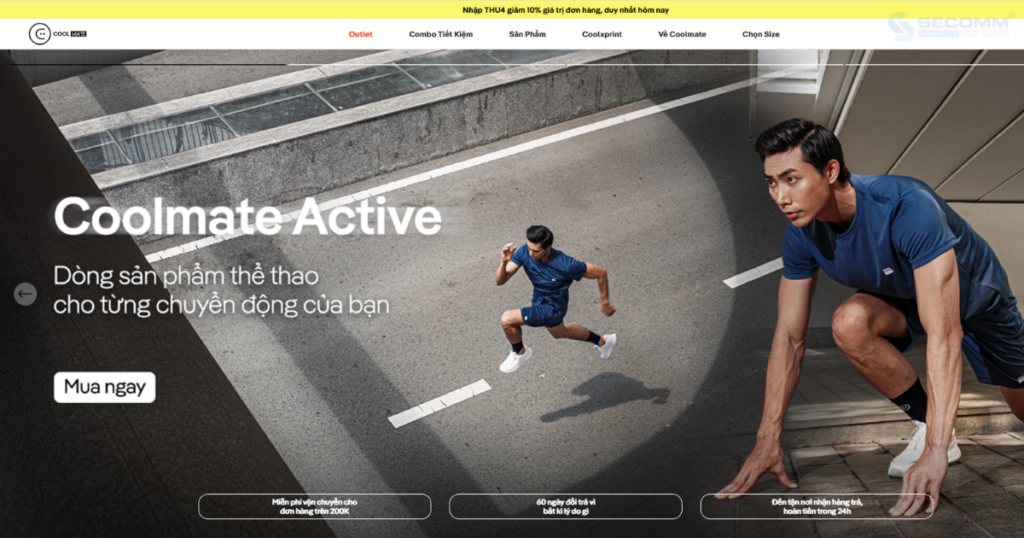
Hai Trieu, which was founded in 1991, has over 30 years of expertise in the watch industry. To adapt to the changing industry and consumers, Hai Trieu has incorporated an eCommerce strategy into its business model with the objective of becoming a dominant watch retailer in Vietnam. Hai Trieu’s eCommerce website has received over 1 million monthly visits and is ranked among the top sites in the fashion eCommerce industry in Vietnam. (according to iPrice).

The official name of PNJ is Phu Nhuan Jewelry Joint Stock Company, which was founded in 1988. PNJ has spent a long time developing a fashion eCommerce website to apply the omnichannel sales strategy. Because of the early adoption of eCommerce, PNJ has surmounted the tumultuous year of 2021 with net sales of over VND 19,547 billion, an increase of 12% over 2020.

Founded in 2005, Juno is a brand known for its line of women’s fashion shoes and bags. Juno saw the enormous potential of the e-commerce sector and invested early in technologies to make the online company more efficient. As a result, the eCommerce website of Juno is currently the highest-visited website in the fashion line of shoes and bags in Vietnam.
Juno has usually cultivated the clothes and accessories area to suit its clients’ increasingly broad consumer demands.
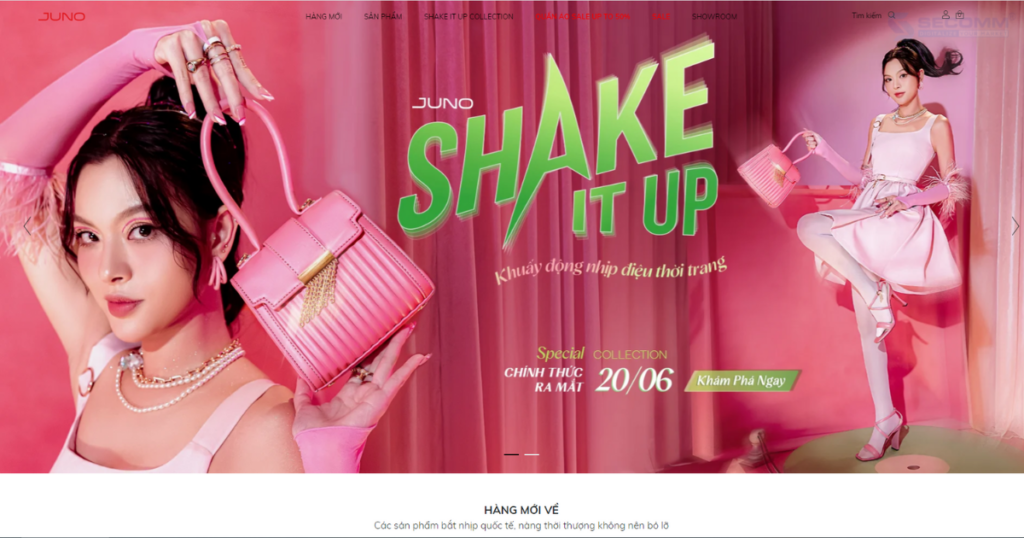
Canifa is a family fashion brand established in 1997, under Hoang Duong Service and Trading Joint Stock Company – a large fashion retailer in Vietnam. Canifa has built an eCommerce business with a reputation achieved in traditional fashion since 2012. Because of its long-term and sustainable eCommerce business strategy, this company opted to invest in establishing its own eCommerce website on the open-source platform – Magento and regularly upgrading this system to provide clients with the better eCommerce experience possible.
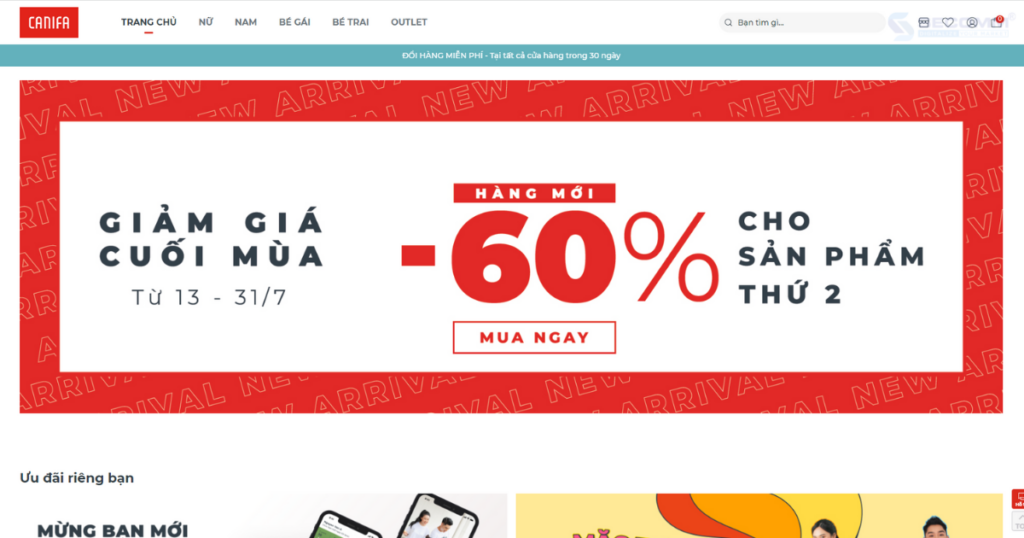
Hoang Phuc International (Hoang Phuc) was established in 1989 as a luxury fashion retailer of Kappa, Ecko Unltd, Superga, Replay, and Staple. This brand has decided to enter the eCommerce industry after three decades of using traditional strategy. Hoang Phuc has utilised and changed numerous platforms to create the successful eCommerce website that it is now. This business is currently employing the Magento platform – an open-source platform specialised in eCommerce.
This firm utilizes KOL and Livestream strategies to boost market penetration, besides constantly improving its own eCommerce website for selling apparel online.

Bitis began as a small factory in 1982 and has grown to become the market’s top shoe and footwear brand. However, when user behaviour changes and new “players” enter the market, this business appears to fall behind. After a long period of lagging, Biti’s new CEO, Vuu Le Quyen – the eldest daughter of Mr. Vu Khai Thanh – chose to change strategy, focusing on investing in eCommerce business model to accelerate and catching up with the market.
Bitis’s has made a dramatic recovery due to this new strategy, vying directly with worldwide brands such as Nike, and Adidas in the Vietnamese market after a number of years of losing market share.

Orchard, which was founded in 2004, is a supplier of more than 200 luxury perfume brands from across the world. Orchard has implemented eCommerce promptly to tap the “gold mine” of this industry and become the No. 1 perfume retail brand in Vietnam. Orchard’s eCommerce website is now the favorite destination for customers who want to buy perfume online.
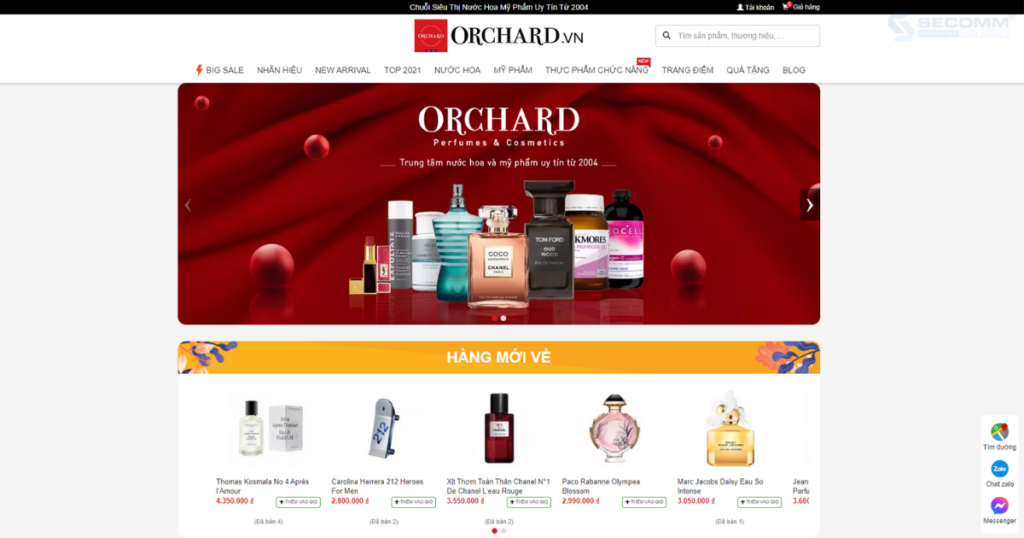
ONOFF was established in 2005 with the goal of providing daily comfort to everyone. ONOFF has advocated for adopting an eCommerce strategy by investing in building Magento websites like Canifa in 2016. As a result, the brand is gradually synchronizing on online and offline channels, with a customer loyalty rate of 80% maintained at all times, allowing ONOFF to more firmly believe in its goal of becoming the leading lingerie brand in Vietnam and a chance to conquering the ASEAN market in the next three years.

Rabity is a children’s fashion brand that was launched in 2000. Currently, Rabity is the sole Disney and Marvel partner with image rights for children’s fashion lines ranging from 0 to 14 years old. Rabity is pleased to have been the pioneer in deploying the first eCommerce for children’s fashion in Vietnam. Rabity is now present on all eCommerce channels and has its own eCommerce website.
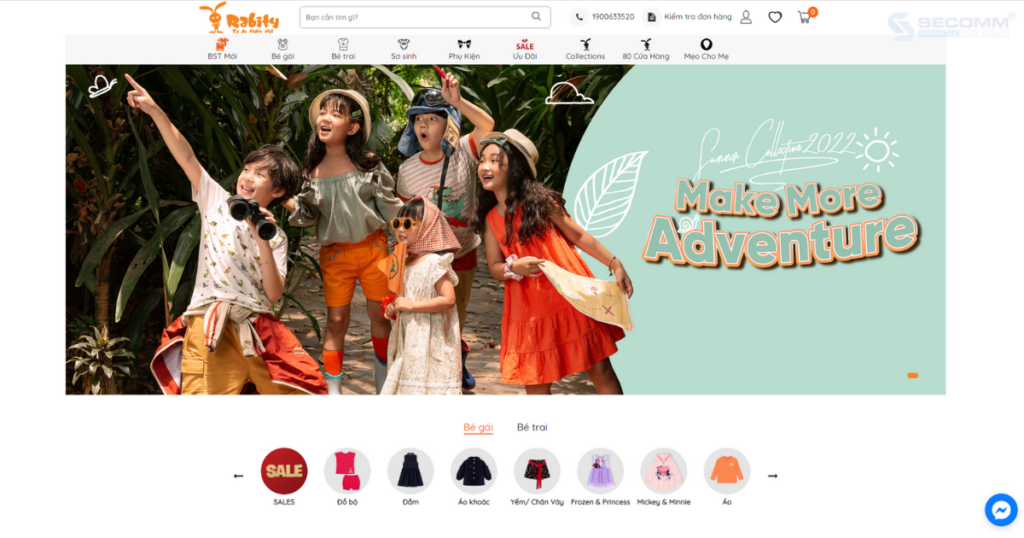
Overall, fashion businesses are achieving several successes after developing their own eCommerce websites. However, the fashion eCommerce industry needs careful consideration of tactics to take the most successful actions in the short term and in the long run. Of course, to do that challenging task, fashion companies must find a well-known or build skilled IT team.
 2
2
 9,306
9,306
 0
0
 1
1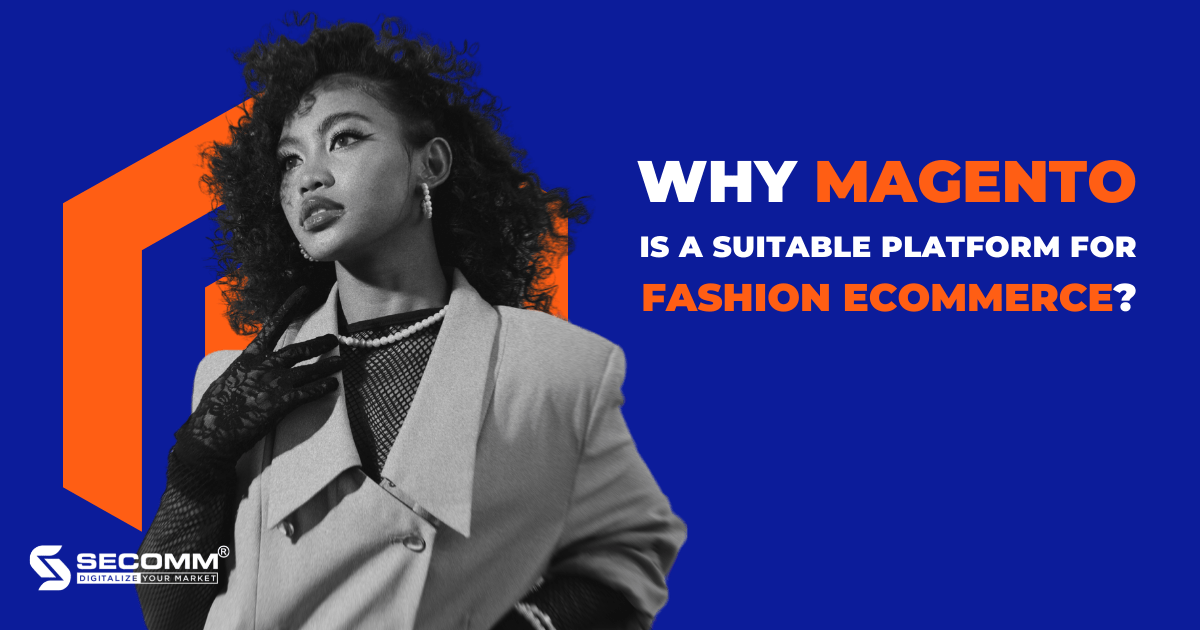
Fashion eCommerce has shown excellent development potential in recent years, with a worldwide market worth USD 759.5 billion in 2021 and predicted to reach USD 1 trillion by 2025. Clothing (+12.7%), Footwear (+11.6%), and Bags and accessories (+8.5%) are expected to increase the fastest in 2023.
Furthermore, fashion is one of the “four pillars” of Vietnam’s e-commerce economy, accounting for 43% of all online purchases, trailing only the eGrocery industry. According to the e-Conomy SEA Report 2021, 47% of Vietnamese respondents think that fashion eCommerce has become a consumer purchasing habit.
Despite the numerous prospects, this industry has multiple problems, including numerous rivals, continually changing consumer preferences, pushing firms to diversify models, Omnichannel sales to create more customer touchpoints, and so on.
As a result, to properly deploy fashion eCommerce, company managers must examine various elements, including the fundamental factor of developing a website. Among eCommerce platforms such as Shopify, BigCommerce, and WooCommerce, Magento is renowned as a platform used by many famous brands to establish eCommerce, including Canifa, Hoang Phuc International, OnOff, and others. So, why have these companies selected Magento?
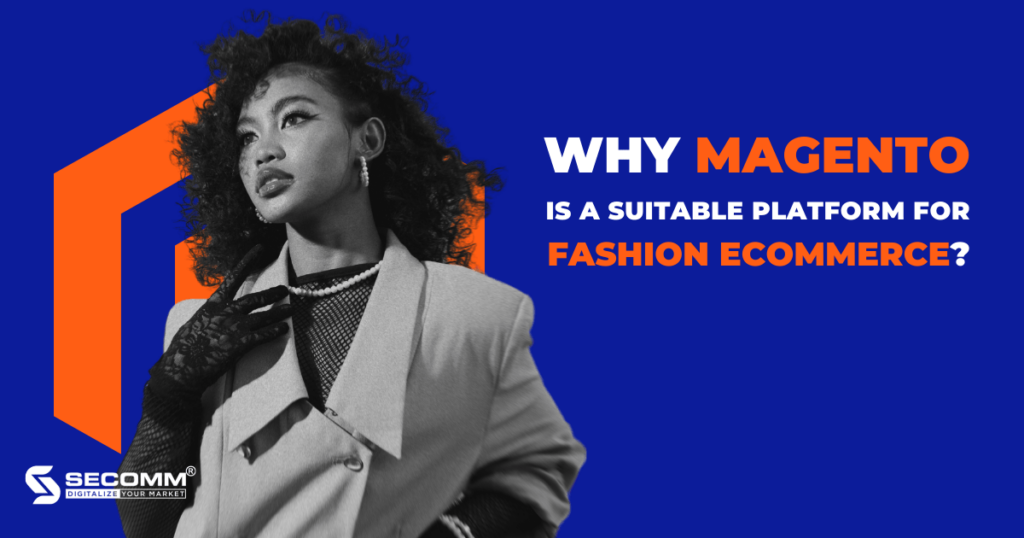
The demanding consumer base with excellent aesthetic sensibility is a common element of the fashion sector. This necessitates that fashion firms concentrate on the design of the eCommerce website interface, particularly the homepage, which must be professional and eye-catching.
The disadvantage of online fashion purchasing is that you cannot “See it with your own eyes, touch it with your own hands.” Therefore, the more detailed and colourful the image/video, the more authentic and trustworthy it will appear to buyers.

In terms of the UI (User Interface), visualisation affects the capacity of customers to engage with the website, helping to answer the question: “Has the user being able to navigate clearly from one page to another in a convenient way? “
Another website interface design is user experience (UX), from consistency in call to action button (CTA) or illustration locations, everything should be more convenient to create the most consistent experience for all website users.
Many functionalities are required for an online fashion business website to satisfy industry requirements.
The fashion sector is distinguished by multichannel sales and numerous client touchpoints. For instance, on e-commerce platforms (Shopee, Lazada, Tiki, Sendo), social networking channels (Facebook, Tiktok, Zalo, Instagram), and e-commerce websites and applications. When implementing eCommerce for fashion companies, administrators must employ an Omnichannel approach.
Usually, the fashion industry will have a lot of product categories and collections, from clothes, and shoes, to bags and accessories, so consumers’ need to search for products on the website and e-commerce app is very high. From there, businesses should build multi-layer menus and advanced product search functions by keywords or filters to serve the needs of searching and navigating customers.
Furthermore, because fashion is a highly competitive market, the more influential the communication strategies, the more orders the brand will obtain. Loyalty Programs, Livestream, Shoppertainment, Affiliate Marketing, and other fashion-related communication strategies on websites and mobile apps.
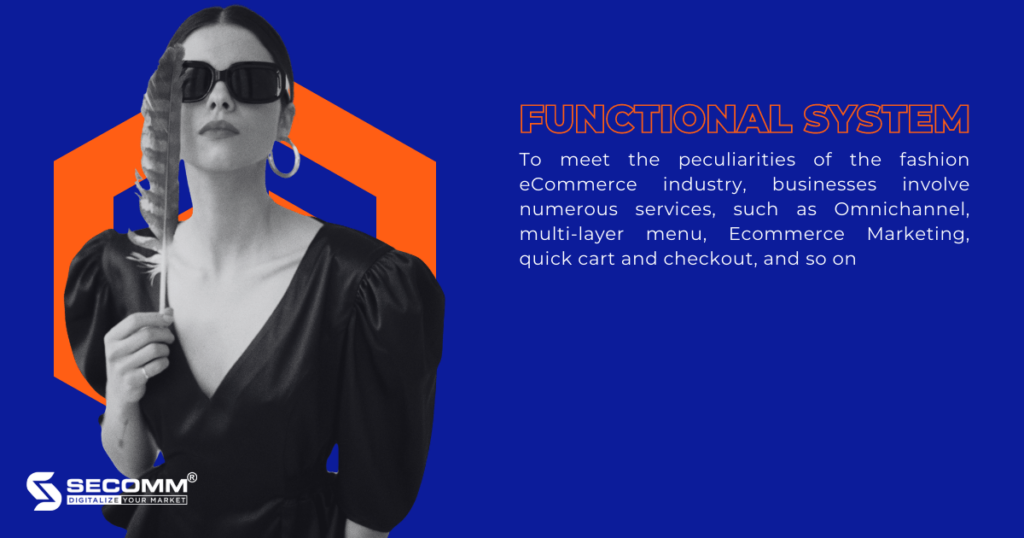
Clothing, bags, shoes, and fashion accessories are frequently low-involvement goods, thus creating a rapid shopping cart function would assist consumers to speed up the purchase process, increasing online sales for businesses.
Businesses should construct a feature to help categorise consumers to take care of and tailor the experience for each type of client in the fashion sector, which frequently has several customer groups, such as new, old, and VIP. From there, organisations will gradually use the understanding of each sort of consumer to develop better business solutions in the future.
After all, fashion eCommerce systems must frequently manage high traffic levels during peak seasons.
Businesses require a highly integrated website construction platform to properly execute fashion eCommerce, including Omni-channel, management system, payment, shipping, analytics, and reporting.
Because the fashion industry is distinct, it needs considerable coverage across all sales channels to reach many potential customers. Therefore, while implementing eCommerce, businesses have to use an Omnichannel strategy. However, to synchronise all data from front-end to back-end when deploying Omnichannel, companies require a highly linked system across all sales channels.
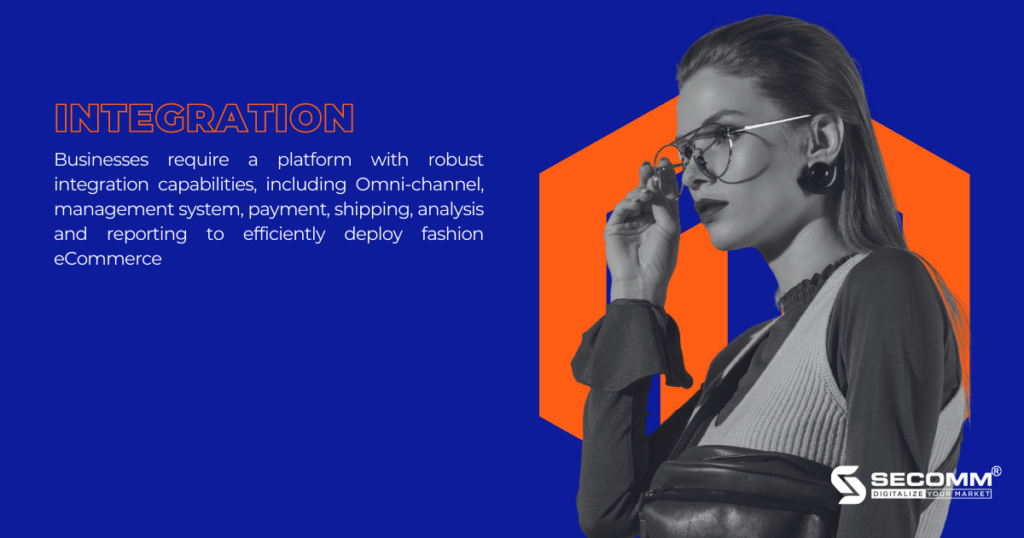
Simultaneously, fashion firms frequently utilise several third-party management systems such as POS, CRM, ERP, and BI, so businesses must find an eCommerce platform that can combine and manage all data information on” a single screen”
Furthermore, companies must vary payment and delivery methods so that clients have more options when buying fashion goods.
Finally, organisations must integrate analytics and reporting tools to provide real-time measurements with the most user-friendly reporting table. From there, firms could provide more practical guidance in the future.
Fashion businesses will have many different sizes, from startups, SMEs (small and medium enterprises), and new entrants to large corporations. Moreover, each business will have a different operating model, such as B2C, B2B2C, and so on.
All sizes and operating models will have unique requirements for each stage of brand development, so businesses need a platform to accompany them throughout the journey, preventing the circumstance of switching platforms consumes time and money when firms install eCommerce.
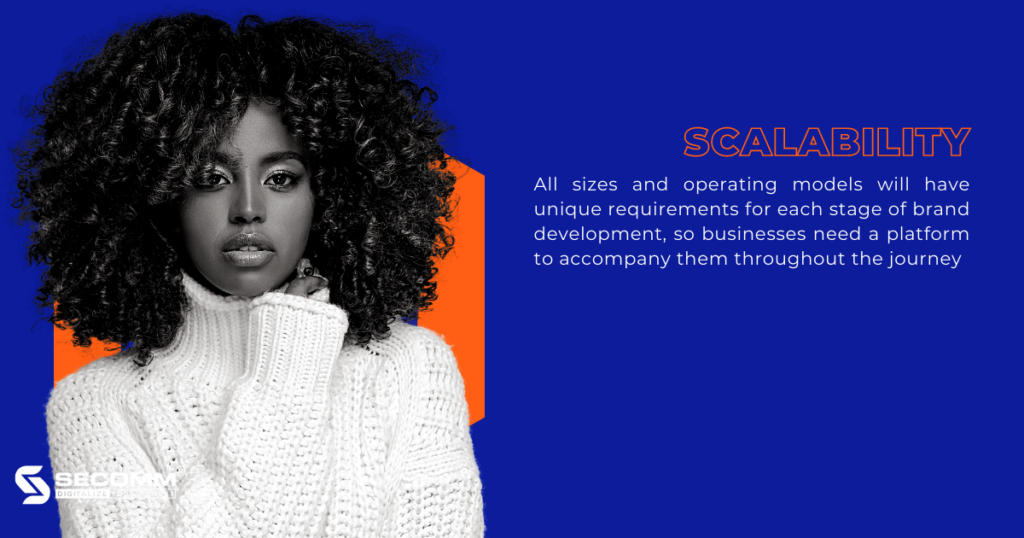
In summary, companies require a comprehensive platform to efficiently implement fashion eCommerce for the long run, including website interface, functional system, integration, and scalability.
When designing a fashionable eCommerce website interface on the Magento platform, businesses have many choices, including using existing themes, customising themes, and designing their own interface.
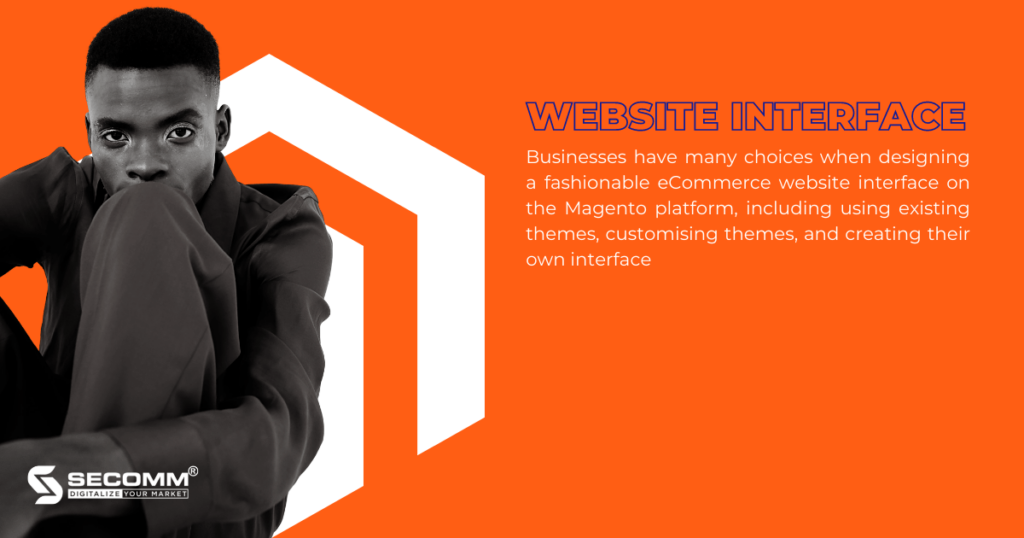
For using existing themes, companies may find these in the marketplace, developer community, or partner for Magento-specific themes in the fashion industry. This helps businesses reduce the expense of interface design, but it limits firms’ brand positioning because the interface is easily imitated by other websites.
For customising themes, businesses can save money and add brand identification aspects like colours, fonts, layout and so on. However, to efficiently set up and customise the website interface, businesses require a team with significant knowledge and experience.
For designing their own interface, businesses will have a “tailored” website for their fashion brand. However, this will necessitate a more significant investment in development expenditures and a more competent workforce.
When using Magento to develop an eCommerce website, most fashion businesses often choose a customised theme or design their own interface to support a centralised eCommerce business.
The Magento platform has all the capabilities needed to create a comprehensive eCommerce website, from essential to complex. At the same time, this platform permits the development of custom functions to tackle unique difficulties in the fashion business.
Basic features that assist businesses in running an efficient and seamless fashion eCommerce website, such as:
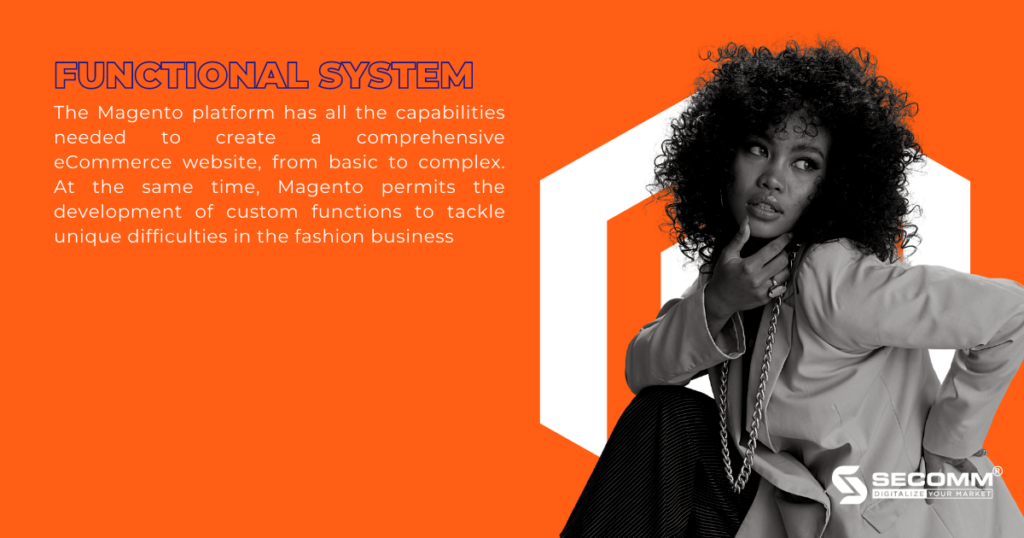
Advanced functionality that enhances the online shopping experience for consumers, such as:
Specific functions are those that assist businesses in dealing with fashion industry issues, such as:
In general, Magento can create any sophisticated functional system, with infrastructural development before and after depending on the demands of each organisation.
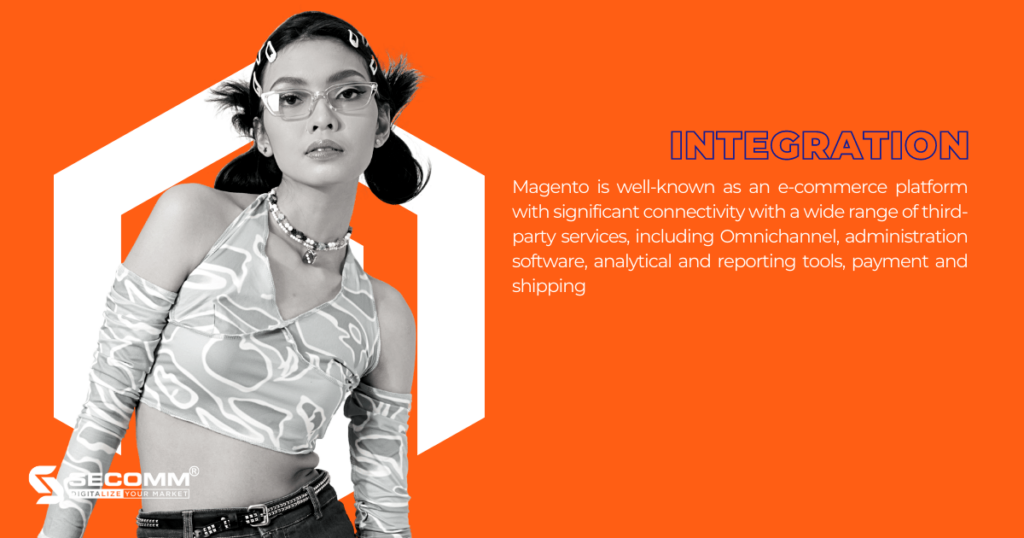
Magento is well-known as an e-commerce platform with significant connectivity with a wide range of third-party services, including Omnichannel, administration software, analytical and reporting tools, payment and shipping.
Magento allows organisations to extend from one website to many distinct websites on the same system to satisfy the requirements of company-scale development. This implies that organisations can access and manage data from a single central Magento system.
With Magento’s language-switching functionality, businesses can create an attractive eCommerce website with customer-friendly content and languages. Furthermore, the Magento system enables businesses to effortlessly exchange currencies, allowing them to grow into new markets in a variety of nations.
From then, Magento can help businesses scale and function effectively without switching to another eCommerce platform from the beginning of business through the period of expansion.

In a nutshell, Magento is an e-commerce platform that caters for the demands of all types and sizes of fashion businesses, from website interface design and functional system development to integration and scalability. However, there are numerous challenges that firms must overcome when implementing fashion eCommerce with Magento, such as high installation costs, long construction times, and the requirement for highly skilled employees.
Recognising the aforementioned business difficulties, SECOMM provides free consultation services on technology and resource solutions for each company.
Contact SECOMM now for more details!
 2
2
 6,184
6,184
 2
2
 1
1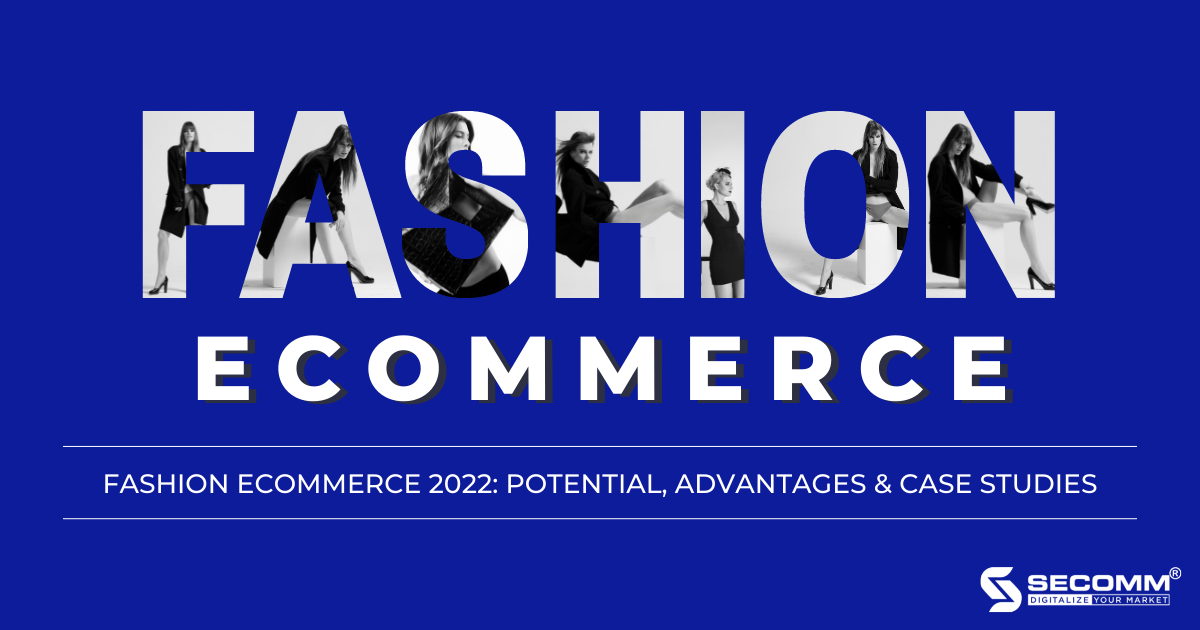
eCommerce has become an essential business model that fashion brands must utilize not only to survive during the COVID-19 pandemic but also to assist companies in adapting to changing customer behavior, providing competitive advantages for future breakthroughs.
As a result, fashion eCommerce has become a crucial business trend for many fashion businesses today, from start-ups to “giant” corporations.
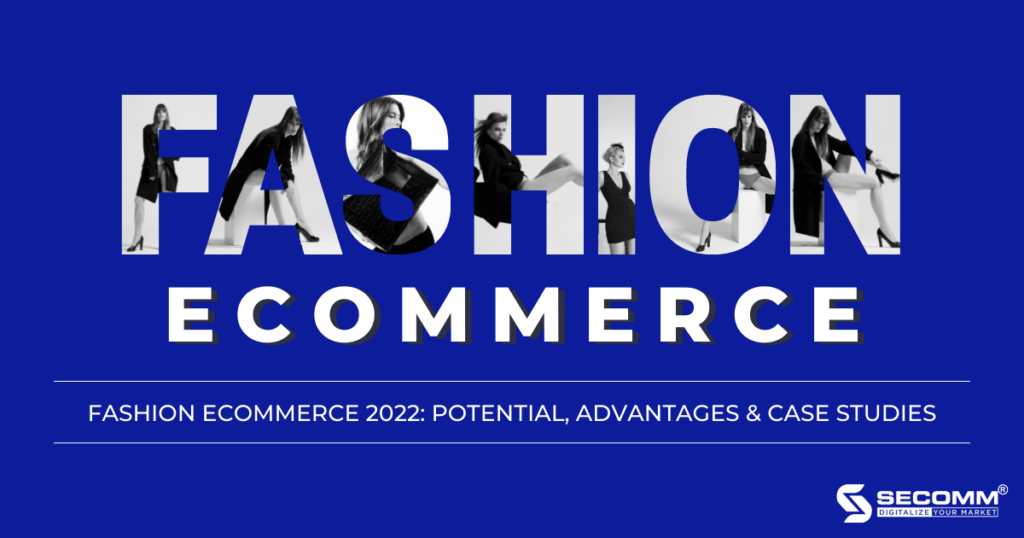
According to Statista, the compound annual growth rate (CAGR) of the fashion eCommerce market is predicted to be 14.2% from 2017 to 2025. The CAGR is forecast to reach a value of USD 1 trillion by 2025, in which the US market accounts for about 20%, equivalent to 204.9 billion USD.
In the Vietnamese market, fashion eCommerce is the second most important sector, just after eGrocery (The Vietnam eCommerce White Paper in 2021).
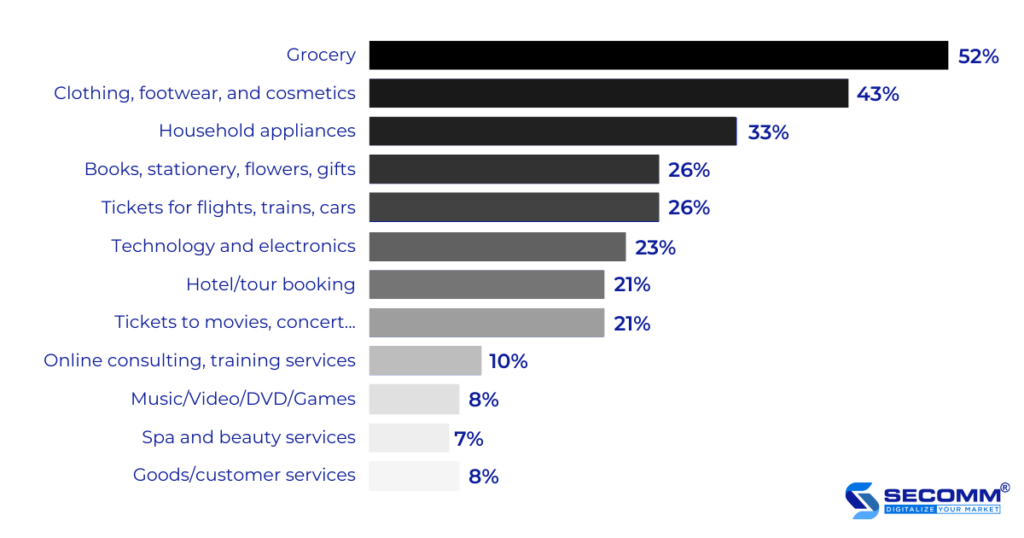
The use of eCommerce will provide fashion firms with a new sales channel, along with offline commercial activity in showrooms. For geographical factors, eCommerce transcends place and time to allow customers to purchase whenever and wherever they choose.
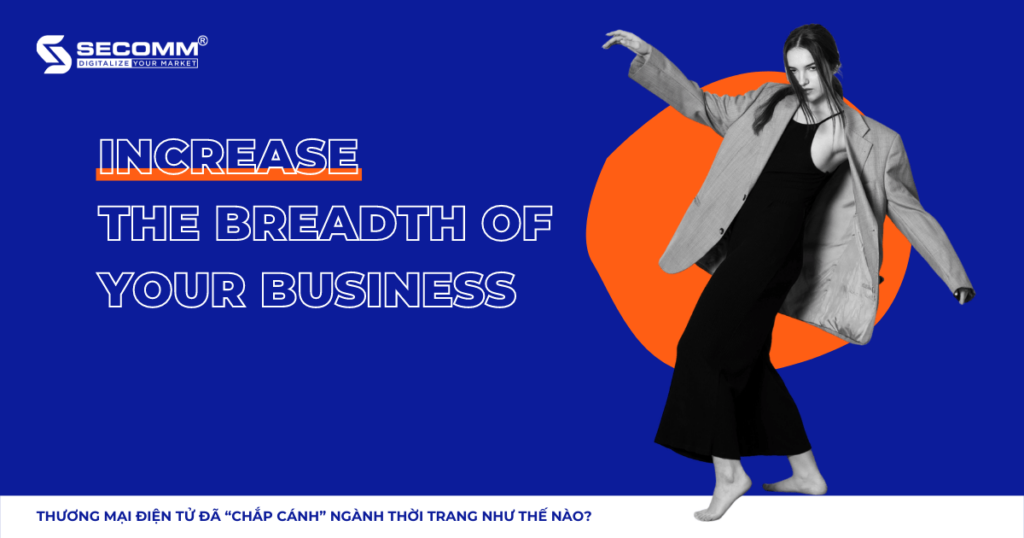
Simultaneously, eCommerce is a prominent avenue for reaching customers, particularly in the sphere of fast fashion for women. Marketing activities such as Livestream, Shoppertainment (Shopping with entertainment), Affiliate, and so on are more effectively carried out, leading to the extension of the commercial scope for enterprises.
Following the COVID-19 epidemic and the social distancing order, consumer behavior has shifted dramatically, with the transition from physical to online buying rising over time in all categories. In the fashion business alone, the percentage of online customers climbed from 18% to 48% in 2020–2021. As a result, it is critical for fashion businesses to implement eCommerce.

After the epidemic, consumer behavior altered drastically, such as waiting until D-Day to purchase items. Furthermore, by utilizing eCommerce technologies, organizations can follow, analyze, and synthesize the consumption behavior of each target group, something offline purchasing cannot accomplish. This ensures that businesses always have enough aggregated and forecasted data to implement business plans.
When technologies that improve user experience in e-commerce are used, customer purchases will be made faster.
Visual experiences such as photos, movies, virtual reality experiences, and so on provide customers with full product information and expertise, enabling a speedier purchasing process. VR / AR technology enables people to shop for garments, accessories, and shoes online in the same way they would in a store.
For example, the American Apparel company has used AR to show shoppers more product information, like detailed descriptions, availability, colors, and buyer reviews.

eCommerce allows businesses to tailor the experience for consumers by collecting, evaluating easily, and summarizing the consumption habits of each target group, often with the following features: Recommend products, Products seen, and so on.
eCommerce provides a seamless experience for customers across many channels such as social media (Facebook, Instagram, Tiktok, Zalo, etc), eCommerce marketplace (Shopee, Lazada, Tiki, Sendo, etc), eCommerce website, and mobile app.
Shein is a Chinese eCommerce site created in 2008 that specializes in apparel and accessories. With the motto “everyone can enjoy the beauty of fashion,” the company pushes to give consumers a diverse selection of product options. Shein is currently regarded as a fashion “empire” with a valuation of $ 100 billion – more than Zara ($ 69 billion) and H&M (23 billion) combined.
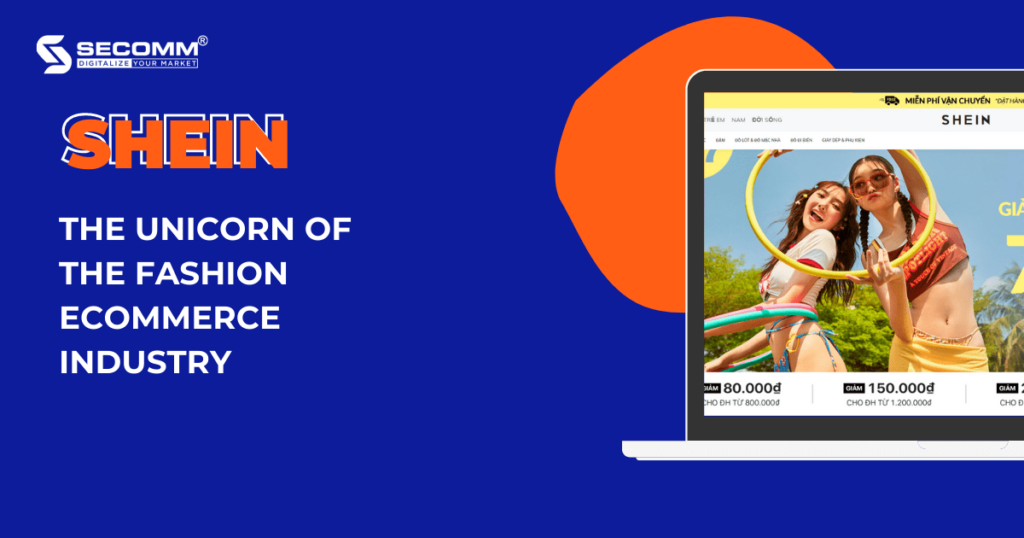
Shein focuses on the youthful client sector of Gen Y and Gen Z, who use the Internet often. As a result, this brand has used technical components to reach more consumers in an appropriate and exact manner.
Shein created an eCommerce system that included a website and a mobile app to target overseas markets such as Europe, America, Australia, and the Middle East. Shein then advocated Social Commerce, Ecommerce Marketing, Affiliate Marketing, KOC, and other tactics to improve brand awareness and engagement.
In 2021, Shein’s mobile app exceeded 7 million monthly active users in the US alone (Airnow Data), and the hashtag #Shein garnered more than 10 billion views on TikTok (Jing Daily). Revenue reached $15.7 billion in 2021, up 60% from 2020 ($9.8 billion). It can be seen that Shein is a clear example of the effective application of eCommerce to capture market share in the fashion industry.
Coolmate is a menswear startup that was established in 2019. Coolmate is a mix of the words “cool” and “mate,” which means that the brand’s major purpose is to be a fashion buddy for customers. After barely two years of operation, this company received a $500,000 funding call from Sharktank Vietnam.

Coolmate utilizes the Direct to Customer Ecommerce (D2C eCommerce) model and concentrates on developing its own fashion website to provide a quick and cost-effective buying experience. At the same time, this brand prioritizes product quality, which is 100% made in Vietnam and meets export standards at low costs. Furthermore, to implement e-commerce faster, Coolmate advocates thoroughly apply the strategy of Ecommerce Marketing, Affiliate Marketing, Email Marketing, etc.
Aside from the $500,000 agreement for a 12.5% interest, 2.5% of the consultancy shares pledged, this fledgling business has other noteworthy statistics. Coolmate’s sales will reach VND 139 billion in 2021, up 3.5 times from 2020, with revenue expected to reach VND 440 billion in 2022 and an IPO (Initial Public Offering) by 2025. In general, eCommerce has considerably contributed to Coolmate’s development, as well as providing the groundwork for fashion businesses to follow to grow by market trends.
Yody (previously Hi5) is a family apparel label that was founded in 2014. To provide Vietnamese fashion goods made of high-quality materials to customers in various regions of Vietnam and throughout the world. Yody now employs over 700 people and has 90 outlets around Vietnam.
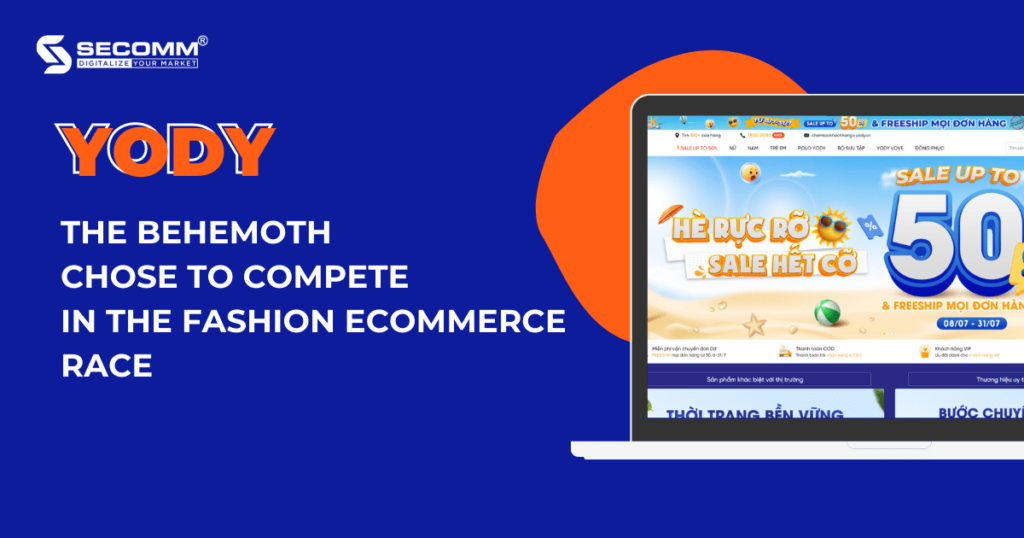
This fashion brand prioritizes the “tripod” of human resource development, product quality, and technology investment. Yody focuses on talent recruiting and culture training to engage employees in human resource development. In terms of products, Yody designs for comfort and convenience, and can be utilized in various situations, such as going to work, going out, attending meetings, and so on.
Regarding technology, Yody focuses on implementing an online sales strategy across Omni-channel such as eCommerce marketplaces, an eCommerce website, Facebook, Livestream, and so on to compete in the eCommerce race, as well as adapting to changing consumer behavior.
In 2016, Yody was selected as one of the ten outstanding young start-ups in Vietnam. By 2021, Yody’s physical sales will have dropped by 65%, but the internet segment has increased by more than 10%. Therefore, the company continues to aim to increase online revenue by 20% in the next year.
In a nutshell, how to apply fashion e-commerce will depend on the size and strategy of each company, but eCommerce is a prerequisite for successful business in this industry.
 2
2
 6,989
6,989
 1
1
 1
1
Magento is the leading open source eCommerce platform, powering over 186,000 websites worldwide. However, this platform has not been widely used in Vietnam, particularly among the community of new businesses entering the eCommerce market.
Magento is an open-source eCommerce platform written in the PHP programming language. Magento currently has two versions: Magento Open Source (free) and Magento Commerce (paid).
Inheriting outstanding advantages of open source eCommerce platform:
In Vietnam, CellphoneS is a well-known retail system for technological products. The company is currently operating in Ho Chi Minh City, Hanoi, Binh Duong, Hai Duong, Hai Phong, Bac Ninh, Vinh Phuc, Thai Nguyen, and Vung Tau.

Viet Mobile is a reputable electronics brand and a strategic partner of global technology corporations such as Apple, Samsung, Apple, OPPO, Sony, ASUS, and others.
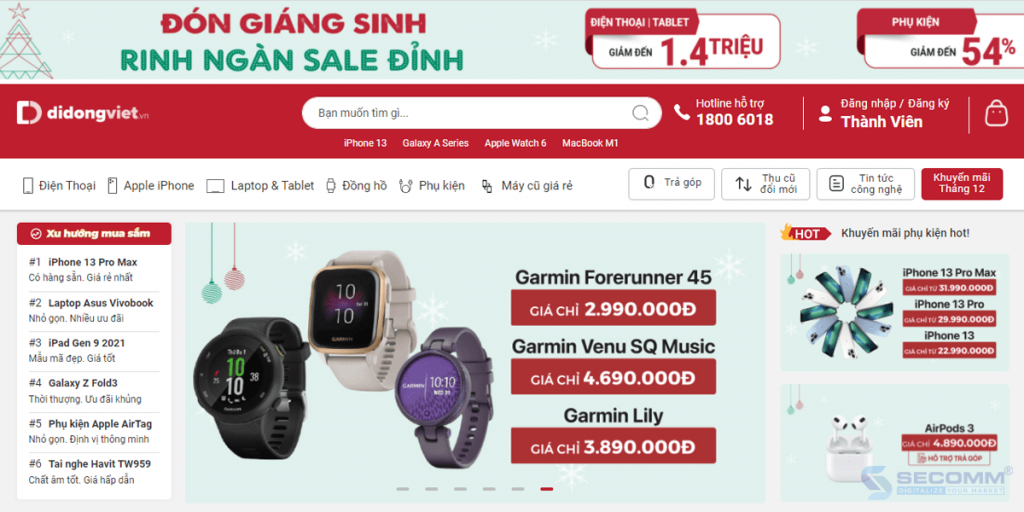
Vua Nem is a leading retail chain of mattresses, blankets, sheets, pillows and accessories with more than 100 stores spanning from North to South.

Kidsplaza is a big star in the mother and baby industry, with over 133 locations nationwide.\
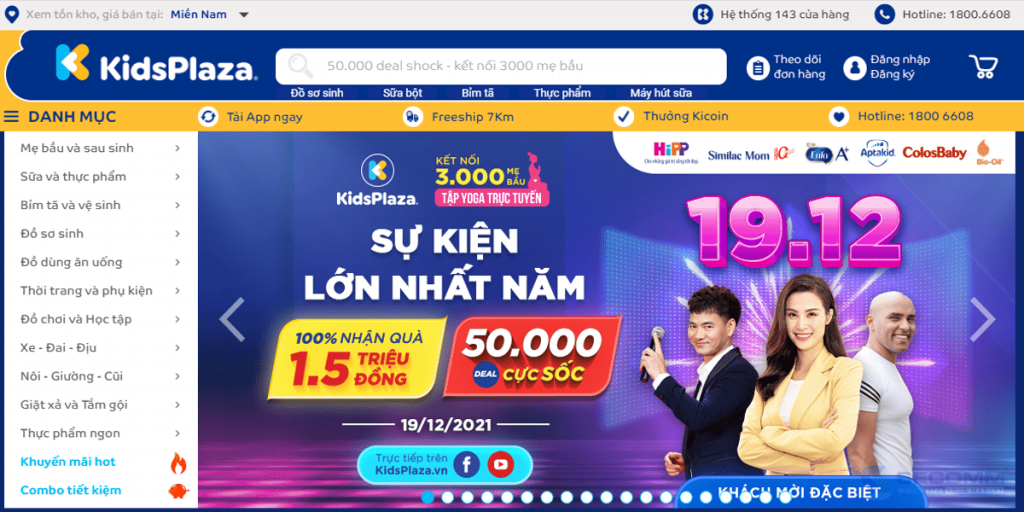
CGV, along with Galaxy, Lotte Cinema, BHD Star Cineplex, and CineStar, is one of the top five largest cinema clusters in the world and a major distributor and cinema cluster in Vietnam.
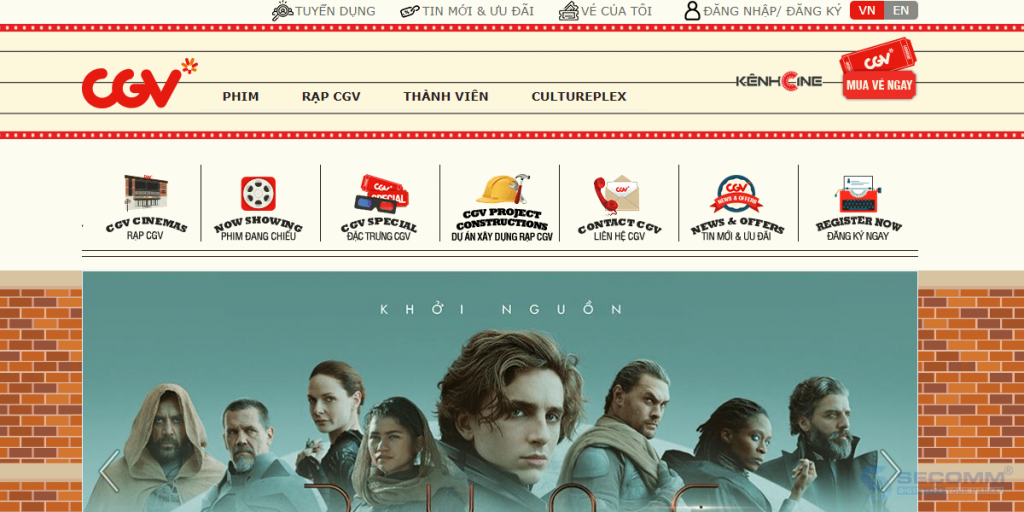
CANIFA is a fashion brand that specializes in designing clothes, accessories, and retailing casual wear for families. It is currently owned by the Hoang Duong Textile Group.
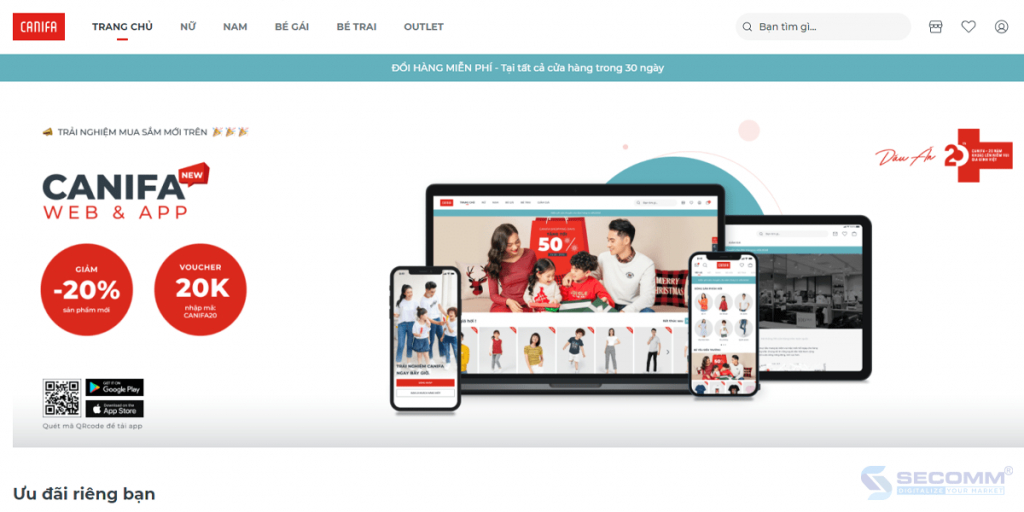
Bach Long is one of the popular retailers of smartphones, tablets, and technology accessories in Vietnam.

Bibo Mart is a Vietnamese supermarket chain that sells and services to mothers and babies. Bibomart used eCommerce in 2019 to reach customers and expand its online business.

On Off is a lingerie brand founded in 2005 to bring everyone comfort every day.

20 Again is a women’s fashion brand with 3 main product lines: Office Wear, Dress Design, and Street Wear.

Contact SECOMM now for a free consultation on eCommerce development roadmap on Magento platform.
 3
3
 5,300
5,300
 0
0
 5
5
Businesses may quickly detect a change in consumer behavior throughout the course of the pandemic as online purchasing steadily expands from basic necessities like food and medicine to a variety of other industries like fashion, wine, and furniture.
Also, customers’ awareness of a pleasant, modern, and healthy lifestyle has grown dramatically, which has given the furniture business a chance to go online and serve as a catalyst for Vietnamese eCommerce furniture to see breakthrough growth.
Realizing the great potential of this field, Vietnamese furniture enterprises have been embarking on building an eCommerce website system, which is considered an important factor leading to the success of this modern business trend.
Initially founded in 2006 under the name Sieu Thi Noi That Uma, the business has only recently (in 2019) changed its name to Sieu Thi Noi That Trang Tri Baya.
Although the brand’s name has changed, its essential values haven’t. It still offers clients high-quality furniture with a clean, sophisticated, trendy design in a neutral tone, and each piece is beautiful in its own right.
Thanks to the wise investment in developing a professional eCommerce website with the Magento open-source platform with an attractive and user-friendly interface, Baya’s website currently receives more than 100,000 visits each month.
In order to give clients the best eCommerce experience, this furniture manufacturer is constantly improving the system.
In addition, the company demonstrated its awareness of market trends by creating an app called My Baya with a QR payment method and positioning it as one of the primary categories on an eCommerce website to draw consumers’ attention to the website.
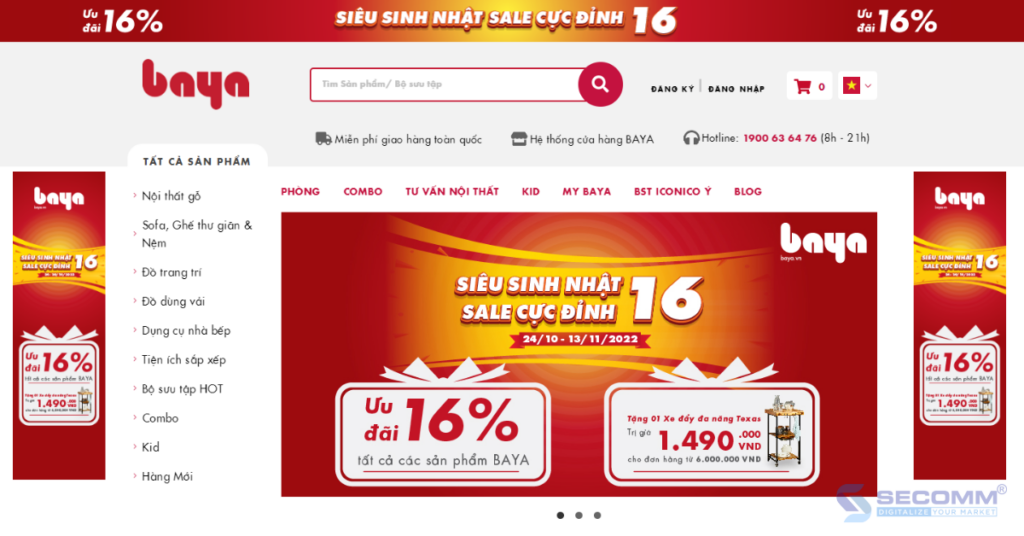
With nearly 30 years of market experience and a wide range of clients, Hoa Phat Furniture is one of the top furniture suppliers and manufacturers in Vietnam.
All of Hoa Phat’s items are designed with a contemporary, opulent, and refined aesthetic in mind. In addition to a business strategy that is flexibly adjusted to the changes in the market, the company fully exploits the potential of eCommerce by building a professional and well-organized website on the BigCommerce platform.
From there, businesses increase their coverage and brand awareness on the Internet and reach more customers thanks to effective marketing methods.

The Moho furniture brand was established in March 2020 and is a subsidiary of Savimex, a company with over 35 years of expertise in the production and export of furniture. In order to fulfill the goal of sustainable development, Moho has kept offering clients furniture goods with affordable pricing and quality in accordance with international standards.
With more than 50,000 monthly visitors and a popular Haravan platform, Moho’s eCommerce website is well-liked by customers for their online buying experience.
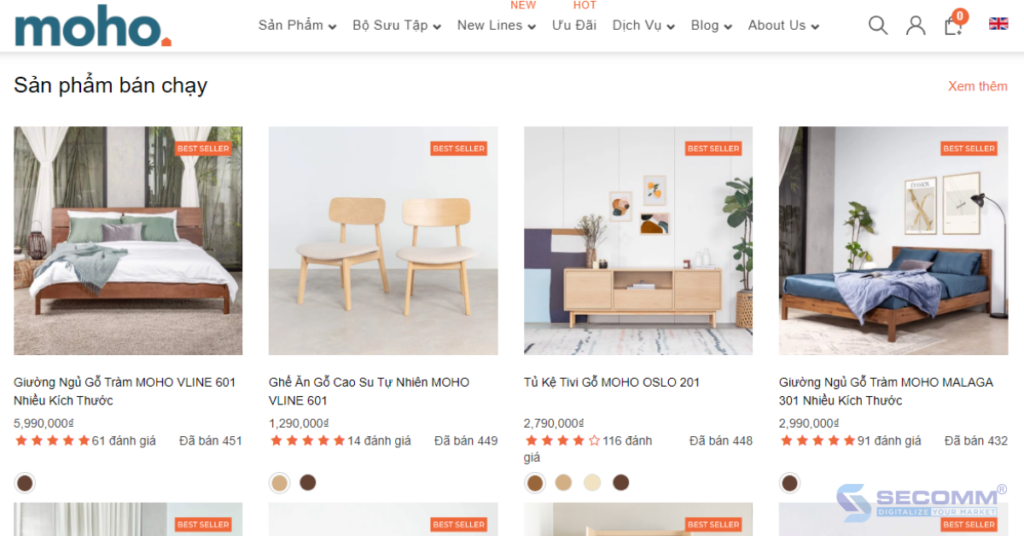
COZY is a famous furniture brand present in the market since 1995 with high-class Italian-style designs. All products distributed by COZY are subjected to quality checks. With more than 25 years of establishment and development, COZY is one of the leading prestigious units in Vietnam in importing furniture from high-end brands from Europe.
In order to increase sales channels and reach a large number of potential customers online, COZY invested in developing an eCommerce website using the Shopify platform in addition to the showroom system dispersed around the districts of Ho Chi Minh City.
Because of the website’s elegantly crafted, opulent, and smart user interface, it receives an astonishing 45,000 visitors each month.

Nha Xinh chooses a simple and intimate interior design style for each of the company’s products. The WooCommerce platform’s straightforward and user-friendly design of Nha Xinh’s eCommerce website’s interface amply illustrates this.
Furthermore, Nha Xinh’s website uses 360-degree technology to enable buyers to experience the company’s interior items from a distance in an accurate manner, providing information and a complete price list for each item from every angle of the room and product.
The eCommerce website now receives more than 40,000 visitors each month because of its painstaking attention to every last detail.

Customers can save a ton of time and money when shopping online, especially when purchasing furniture. However, there are a lot of potential hazards associated with this type of business, particularly with regard to product quality and information security, and safety during the shopping and payment processes.
The furniture eCommerce sites discussed in this blog post are well-known destinations that have been active on the market for a long time and have serviced and satiated the wide range and expanding needs of clients.
These companies demonstrate their efforts to create the technological infrastructure that will enhance customers’ online shopping experiences, and they take priority on the development of a professional, well-invested supply chain that will expedite shipments while maintaining the quality of the goods until they are received by the customer.
When Vietnamese furniture businesses launch their own fully-functional eCommerce websites, professionalism, adaptability, and speed are the key success criteria.
Nevertheless, in order for the furniture eCommerce firm to succeed, business managers must carefully and comprehensively take into account the growing client wants and the continuously shifting market trends.
In particular, the task is to lay out a solid and methodical company plan so that the best short- and long-term actions can be taken. Completing that difficult task will take a lot of time and resources. As a result, many furniture companies opt for a more straightforward approach to the issue, enlisting the assistance of a highly qualified and dependable unit.
With many years of experience in successfully implementing eCommerce for many customers in many countries, SECOMM specializes in providing consulting services with comprehensive and professional e-commerce implementation solutions. , repertoires.
Contact SECOMM today for free support and advice.
 2
2
 7,115
7,115
 0
0
 1
1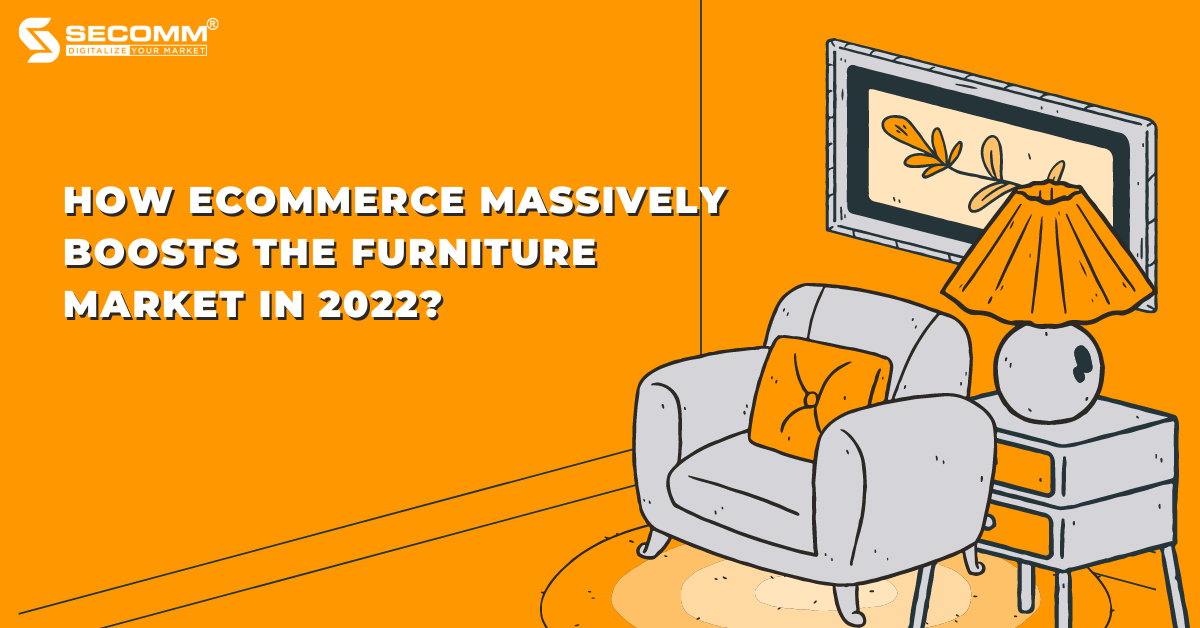
The desire for home furnishings and design among consumers has significantly increased as life gets better and better. The majority of consumers still prefer to choose and purchase products in physical stores and showrooms, but online furniture shopping is an increasing tendency. Additionally, the impact of the Covid-19 pandemic on consumer purchasing habits has changed how people purchase, which has greatly aided the development of the furniture eCommerce market.
BusinessWire estimates that the size of the furniture eCommerce market in 2021 was valued at USD 27.74 billion and that it would increase at a compound annual growth rate (CAGR) of 4.4% from 2022 to 2030 to reach USD 40.74 billion.
Recent findings made by Maddyness include the following intriguing details:
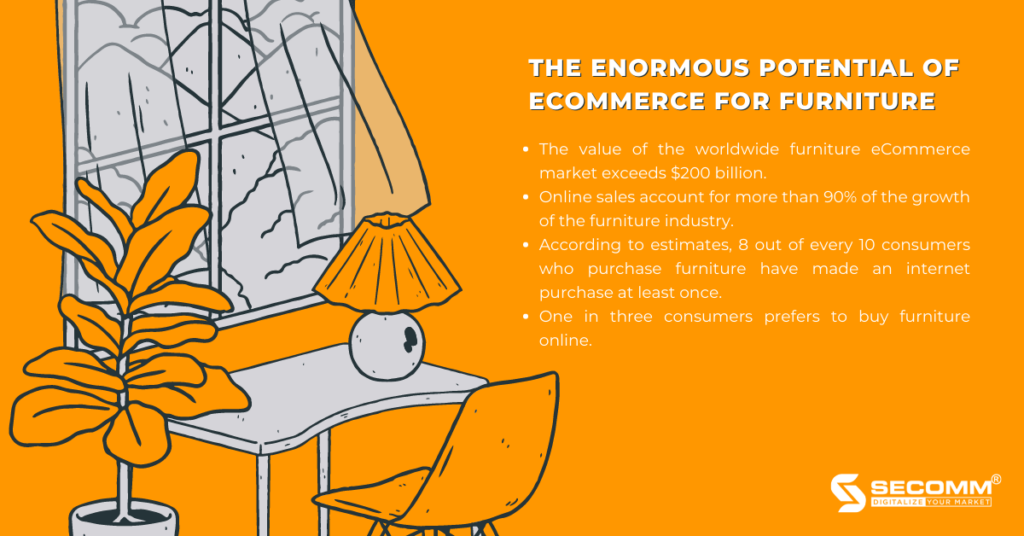
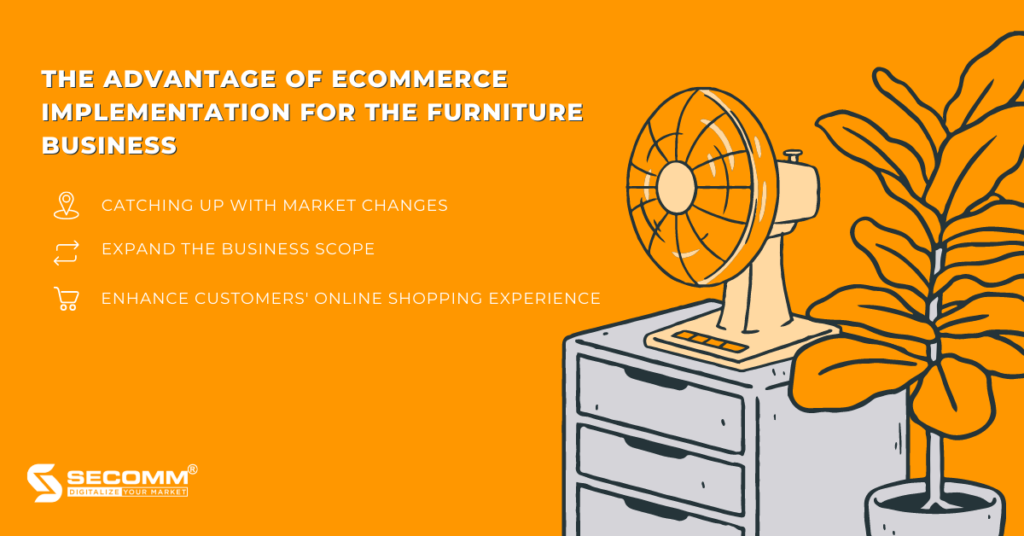
The furniture sector has experienced a significant decrease in sales over the past few pandemic years, along with many other industries.
People are compelled to reduce their social interactions during the social withdrawal period. They now spend more time working, living, entertaining, and teaching at home. In light of the unpredictable changes of the pandemic, the necessity to clean and renovate the dwelling has therefore substantially increased.
Due to limits on leaving the house, online shopping at the time had become not only a need but also an urgent method of purchasing in place of in-person purchases. That serves as the springboard that gives eCommerce its spectacular development and propels it into other industries like fashion, grocery, wine, and even furniture.
These two elements highlight the “cake’s” enormous potential and aid many furniture companies in realizing and swiftly implementing eCommerce for market revolution and sustainable development.
Due to the Internet’s rapid expansion and the burgeoning online shopping trend, which is gradually replacing traditional offline shopping, the adoption of eCommerce will benefit furniture manufacturers by providing a new sales channel and attracting a big number of potential clients (at stores, and showrooms).
eCommerce implementation will also help to broaden the market for businesses by improving the circumstances for marketing campaigns to be more successful.
When firms use technology to improve customer experience in eCommerce, furniture shopping will happen more quickly.
In the digital age, for instance, visual experiences from VR/AR technology, 3D product visualization, and 360-degree photography are very popular, gradually replacing in-store shopping while still being fully informed and realistic visualization of products, thereby increasing customer satisfaction during online shopping.
eCommerce enables businesses to quickly and effortlessly tailor the experience for customers by gathering, evaluating, and synthesizing the consumption behavior of each target group. Typically, this is done with the capabilities listed below: Products have seen, similar product recommendations, etc.
eCommerce provides clients with a seamless experience in addition to an intuitive one across a variety of channels, including social networks (Facebook, Instagram, Tiktok, Zalo, etc.), eCommerce platforms (Shopee, Lazada, Tiki, Sendo, etc.), eCommerce websites, mobile apps, etc.
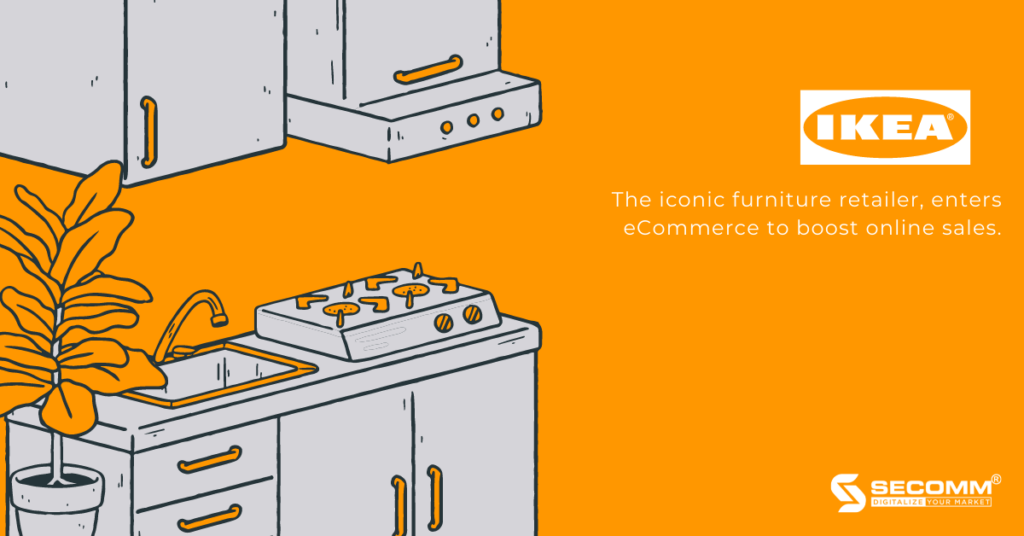
IKEA, or Ingvar Kamprad Elmtaryd Agunnaryd, is the world’s largest furniture retail enterprise and specializes in delivering minimalist-styled assembled furniture, household appliances, and accessories.
IKEA was established in 1943 in Sweden by Ingvar Kamprad, who started his business at the age of 17. IKEA swiftly gained global dominance with 392 locations across 48 nations.
With the goal of offering furniture with a lovely style and wide application while keeping the price low so that as many people as possible can purchase the goods. The majority of the departments, from marketing and sales to supply chain and warehouse, share this goal.
Everybody works together to keep IKEA’s “vital” competitive edge intact so that the company can publish catalogs with thousands of products offered at long-term stable prices.
Despite being the largest furniture retailer in the world, IKEA has lagged behind eCommerce trends, according to the Financial Times. This well-known retailer started “renovating” its sales technique only when it encountered numerous internet rivals.
The biggest barrier that makes it difficult for IKEA to adjust its previously successful business model is the maze-like arrangement of store layouts to create an engaging experience of sightseeing, interior shopping, or requiring customers to drive to the store and assemble the components to make their own furniture.
But IKEA has unimaginably succeeded in launching an e-commerce website by fusing cutting-edge technology with a well-organized marketing plan. In particular, IKEA specifically uses VR/AR technology, which is seen as a new eCommerce trend and is favored by many firms, to improve users’ online purchasing experiences.
IKEA thereby covers the sales void left by the prior on-site furniture business model, but the gap won’t truly be felt until the Covid-19 pandemic and social separation restrictions are in place.
From this point, IKEA expands its consumer base both online and offline, and sales are progressively encouraged to increase significantly.
Additionally, IKEA’s eCommerce website incorporates Instagram posts of photographs of IKEA furniture goods that consumers customize, share, and tag with the hashtag #IKEA.
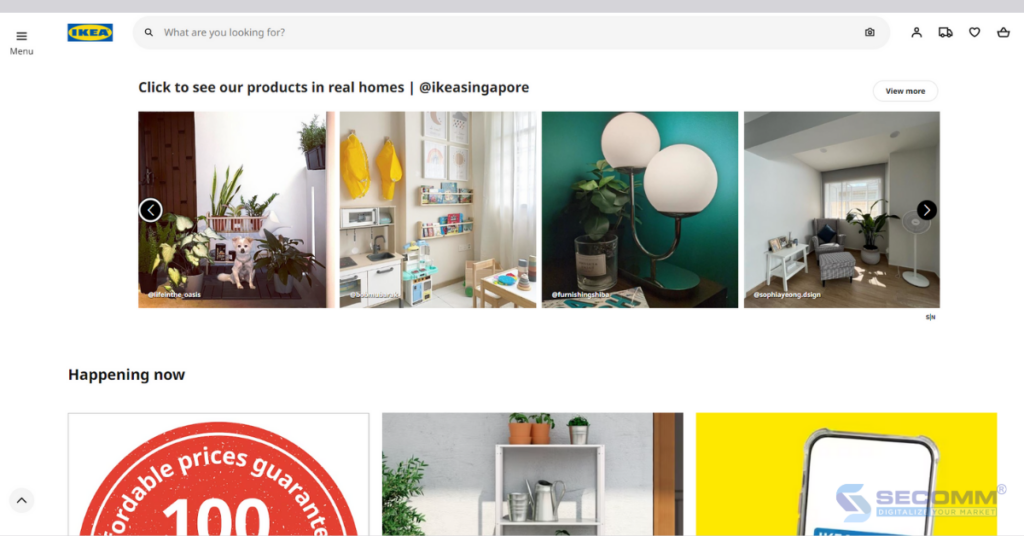
This not only helps this brand connect closely with Instagram users, increase its reputation and strengthen the loyalty of existing customers but above all, quick access to a large diverse customer base from the Internet in general and Instagram in particular thanks to the popularity and influence of this social network on young consumers.
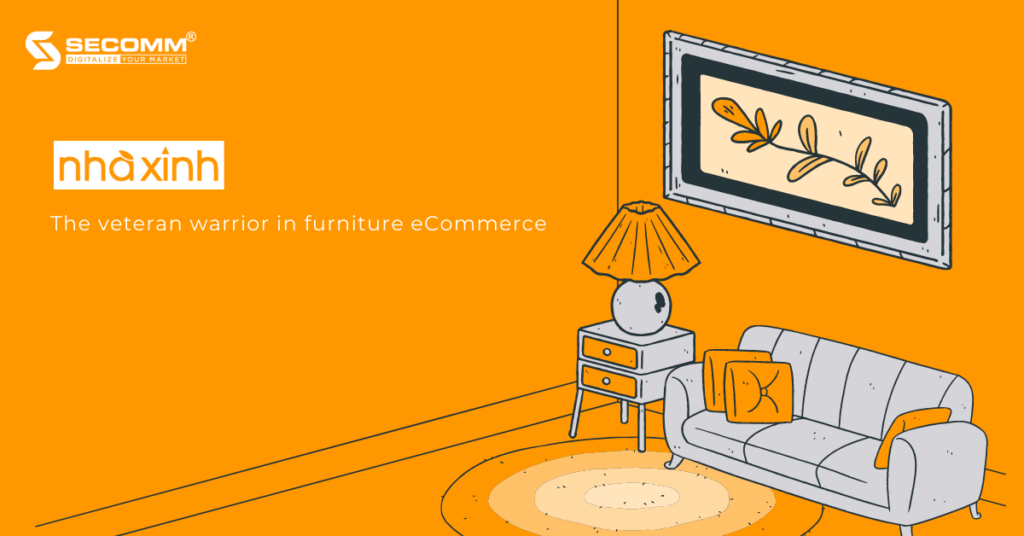
Established in 1999, Nha Xinh is a well-known furniture brand in Vietnam. It has two sizable showrooms, one each in Hanoi and Ho Chi Minh City.
As a manufacturer and supplier of living room, bedroom, dining room, and kitchen furniture with an Asian design aesthetic that favors coziness, friendliness, and simplicity above sophistication and luxury, Nha Xinh is a specialist in this field.
Nha Xinh’s website belonged to the “long-lived” row in the Vietnamese eCommerce village when it was created and launched in 2007, a period in which Vietnam was still getting used to utilizing the Internet to progressively integrate with the rest of the world.
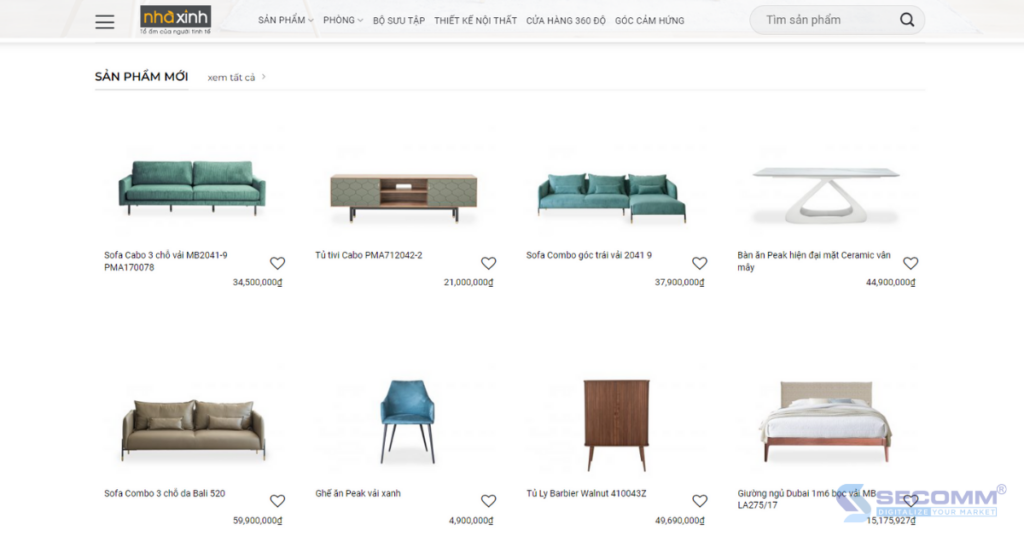
Nha Xinh’s eCommerce website has survived many years of market ups and downs while maintaining its inherent simplicity, intimacy, and sophistication.
Product categories are arranged clearly and harmoniously in each room to make it easy for customers to search, choose products that suit their needs, and get a sense of the room’s overall layout.
Customers can choose from a variety of options because the room’s layout is available with furniture and includes a detailed price. If they prefer, they can even select a combination of the interior and decor of the room without having to spend a lot of time figuring out how to combine each item because Nha Xinh already did it.
Additionally, Nha Xinh’s website has a unique section called “360-degree store” that uses 360-degree technology to let customers view the company’s interior products from a distance in an accurate manner from every nook and cranny of the room and every angle of the product, along with comprehensive information and price lists for each item.
Additionally, Nha Xinh’s “Inspiration Corner” catalog offers a wealth of thoughts and ideas to assist clients in designing their dream living space. Nha Xinh gives home design recommendations in a variety of styles, from elegant, and gentle to strong and personable depending on the individual’s preferences.
Therefore, Nha Xinh is more than just an eCommerce site that sells furniture; it is also a handbook that provides customers with never-ending design ideas.
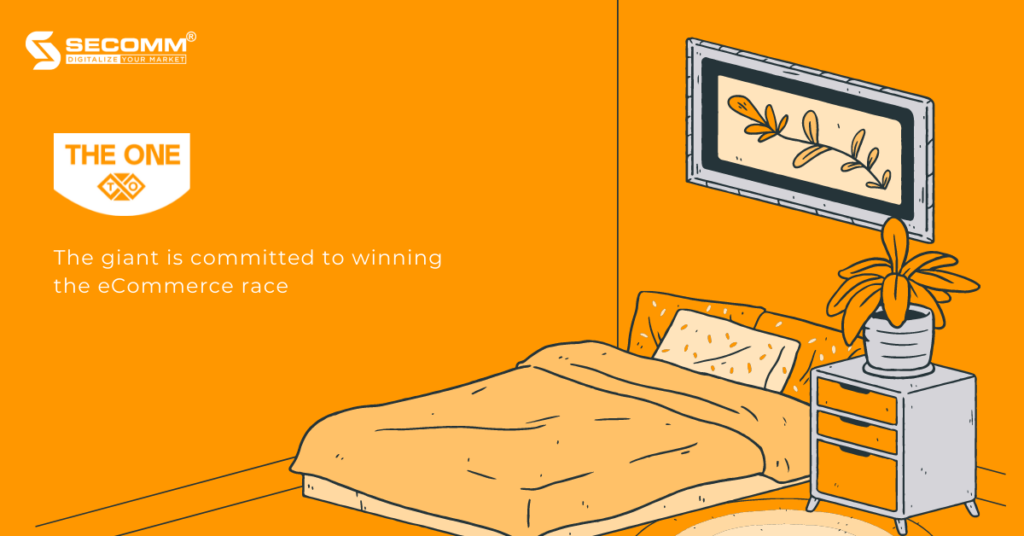
Hoa Phat Furniture was founded in 1995 and over the course of over three decades has made a positive impact on Vietnamese consumers’ perceptions of quality products and exquisite design while fulfilling a variety of needs for office furniture, home, household furniture, and medical furniture.
With a consistent growth rate of 20–25% each year, the brand is getting stronger and reaffirming its position as Vietnam’s top supplier and manufacturer of furniture.
When Hoa Phat Furniture changed its name to The One Furniture in the year 2022, it left a lasting impression on the industry. The brand name change is linked to adaptable changes in strategy. The company focuses on enhancing the stature, appearance, and image connected with the growth of the nation, helping to instill a variety of ideals into society.
Hoa Phat Furniture (now The One Furniture) invests extensively in technology infrastructure to streamline the production and supply process at the same time as it aspires to expand throughout the area and the world. One might say that The One Furniture has carried on the brand’s good core principles and improved upon them in order to better suit the current market trend.
One of Hoa Phat Furniture’s greatest successes to date is the effective use of 3D printing technology in production, which has helped the company create a number of new products like the Smart Safe; sofa and chair folding in the Italian style while also reducing production costs and speeding up prototyping and increasing product accuracy.
Hoa Phat Furniture concentrates on creating an eCommerce website to reach many potential clients that have a habit or preference for online buying, in addition to being adaptable and prompt with changes in strategy.
The firm creates websites using the WooCommerce framework, a well-known and dependable open-source platform used by many companies to implement eCommerce.
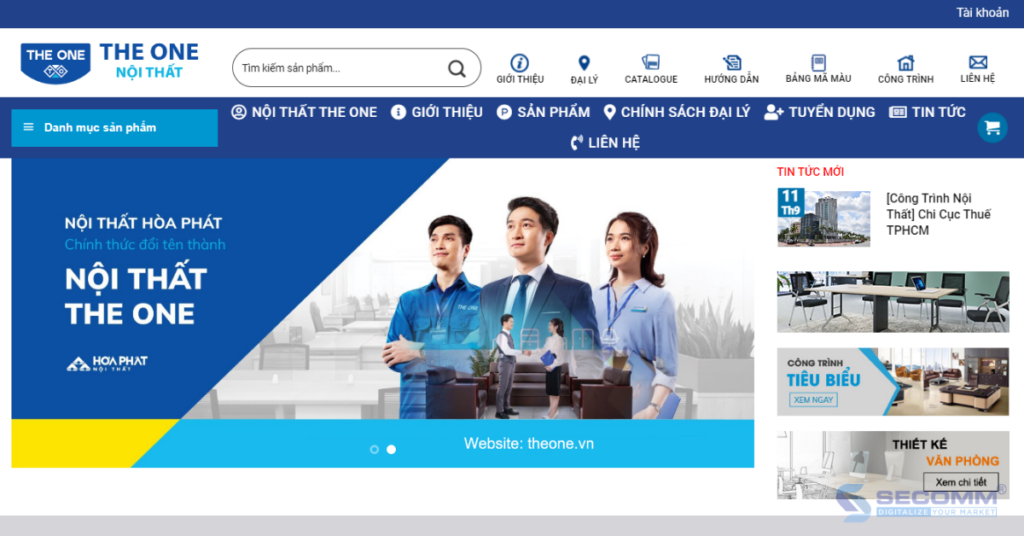
Compared to the previous version of Hoa Phat Furniture, The One Furniture’s new website (noithattheone.com.vn) features a more simplified, gorgeous, and contemporary interface (noithathoaphat.com.vn).
Additionally, the business supports the growth of well-known social media platforms like Facebook, Instagram, Youtube, and TikTok to broaden brand awareness, attract more customers, and enhance coverage.
Plus, the business offers a wide range of shipping and payment choices to accommodate the various needs of clients, making online buying at The One Furniture or Hoa Phat Furniture as convenient as it can be.
It is clear that the growth of the furniture market has been hastened by the speed at which eCommerce is developing.
Today, numerous local and international furniture companies participate in and offer the greatest shopping experiences to customers through the effective implementation of an eCommerce website, including IKEA (Sweden), Nha Xinh, and Hoa Phat Furniture (Vietnam).
From there, companies may quickly connect with a wider pool of Internet users and generate conversions through efficient marketing strategies.
However, business leaders need to carefully and comprehensively take into account the growing customer expectations and rapidly shifting market trends, not to mention specifically describe a systematic and precise business strategy for taking the most advantageous actions in the short and long term.
Completing that difficult task will take a lot of time and resources. As a result, many furniture companies opt for a more straightforward approach to the issue, enlisting the assistance of a highly qualified and dependable unit.
SECOMM has many years of expertise in effectively executing eCommerce for numerous customers in various countries. We specialize in offering free consultation services with qualified eCommerce implementation solutions.
Contact us right away for free counsel and assistance.
 2
2
 4,738
4,738
 0
0
 1
1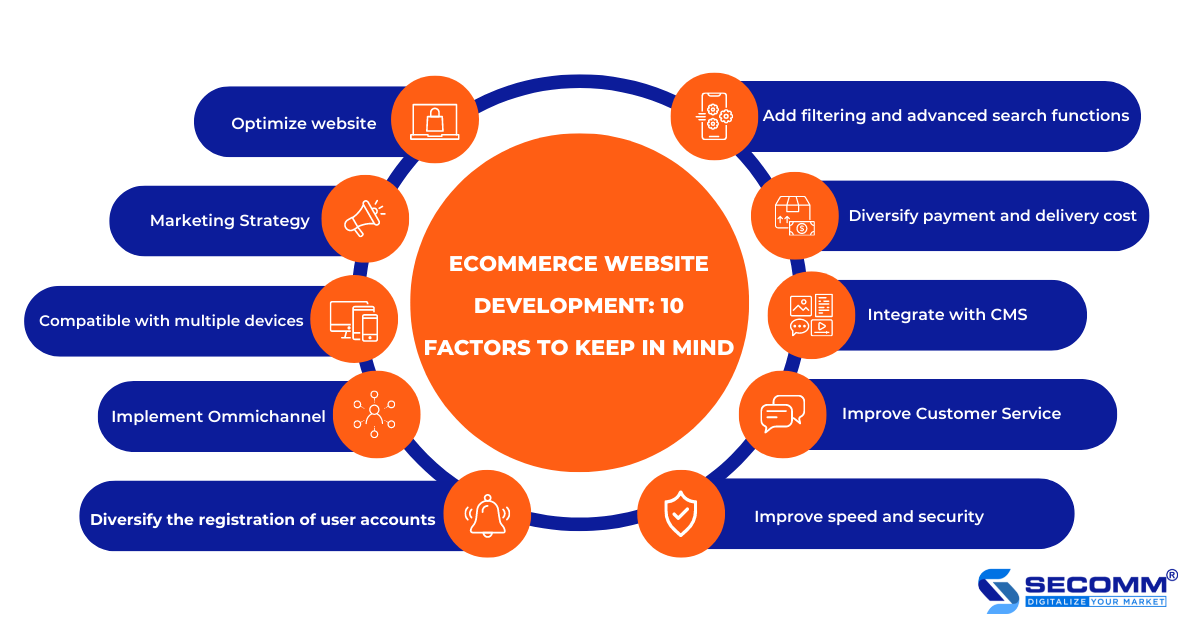
Creating an eCommerce website is a critical step in assisting businesses in spreading their brands and increasing their ability to reach potential customers on the Internet, thereby increasing revenue and profit. However, developing a business website is a complicated process with many aspects, particularly with eCommerce websites.
Businesses must consider everything from user experience to operational performance and many other aspects of the site. Here is a summary of the key factors of an eCommerce website that businesses and website developers should consider before getting started.
According to Think with Google research, if a web page takes up to 5 seconds to load, the likelihood of a user exiting increases by 90%. As a result, businesses must prioritize optimization and ensure that their eCommerce website is always operational.
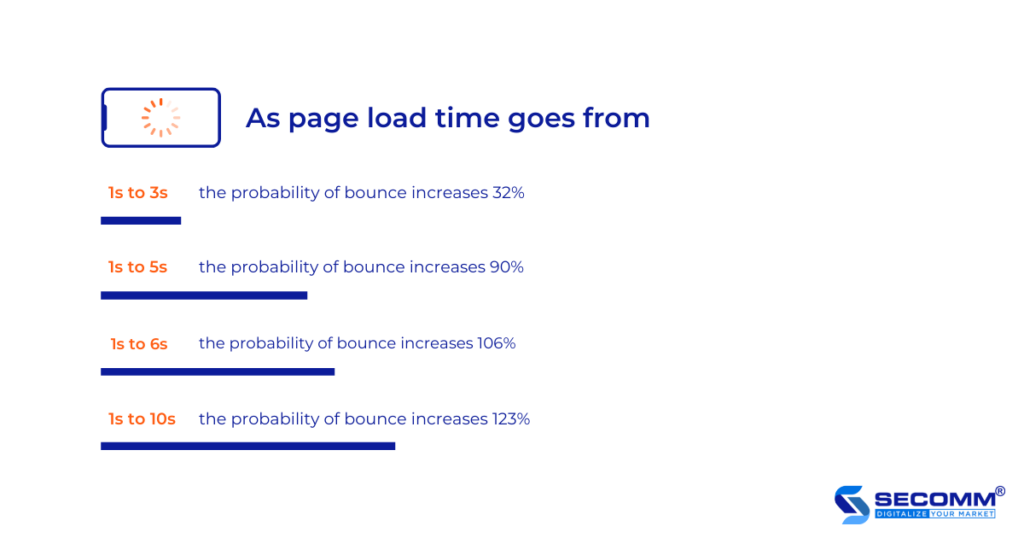
Furthermore, businesses must pay attention to optimizing SEO so that the website has the highest possible ranking on search engines using specific techniques and strategies if they want to maximize revenue on their brand websites. One of them is the strategy of incorporating keywords into the eCommerce website’s content, as well as description, title, and image information.
When adding an “alt text” description to an image, many businesses forget that customers can find their website through image search. This is also a significant flaw that results in a significant loss of potential customers.
Furthermore, in the early stages of e-commerce website deployment, businesses should consider hiring SEO experts. They can launch the website with the necessary meta tags, organize the page structure and internal links, create content strategies, design recommendations for cross-device-friendly functionality, improve page load speed, and many other critical aspects.
A good marketing strategy may benefit the first orders offline and online, particularly in eCommerce. Creating an early marketing strategy assists businesses in identifying the features that must be included in developing eCommerce systems.
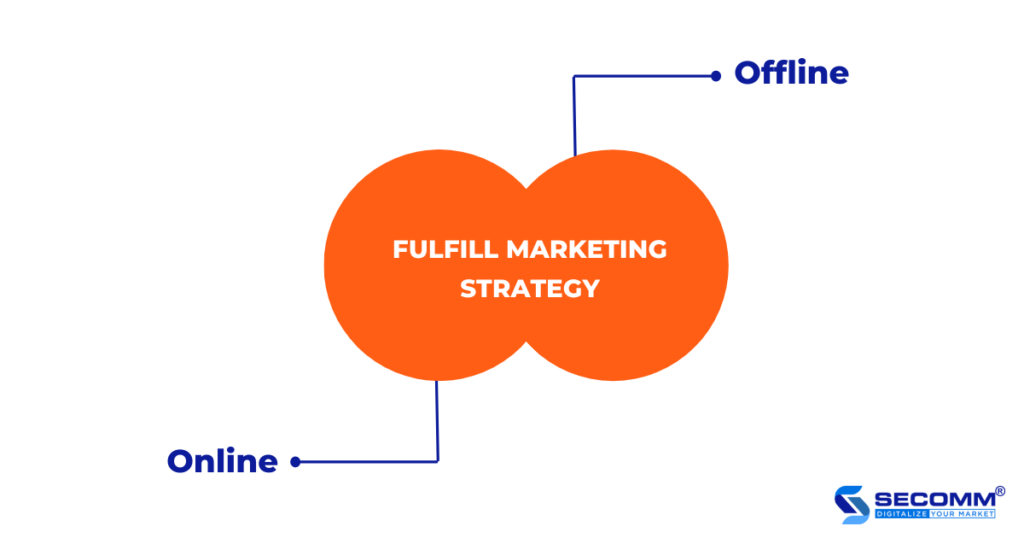
For example, when businesses want to add the option to share a promotion campaign to social networks or push notifications on mobile apps from an eCommerce website, it will be more effective if this is part of the Marketing strategy and is planned to be implemented during the development of the eCommerce website rather than proposed to be developed after the website has been launched.
According to the World Bank, two-thirds of adults worldwide use digital payments, with this figure expected to rise from 35% in 2014 to 57% by 2021. Although users prefer to make purchases via mobile apps, businesses can still increase conversions if the eCommerce interface is easily adaptable to the mobile web.
For example, after releasing a more optimized responsive design, Walmart Canada successfully increased website conversions by 20% and improved mobile order growth by 98%.
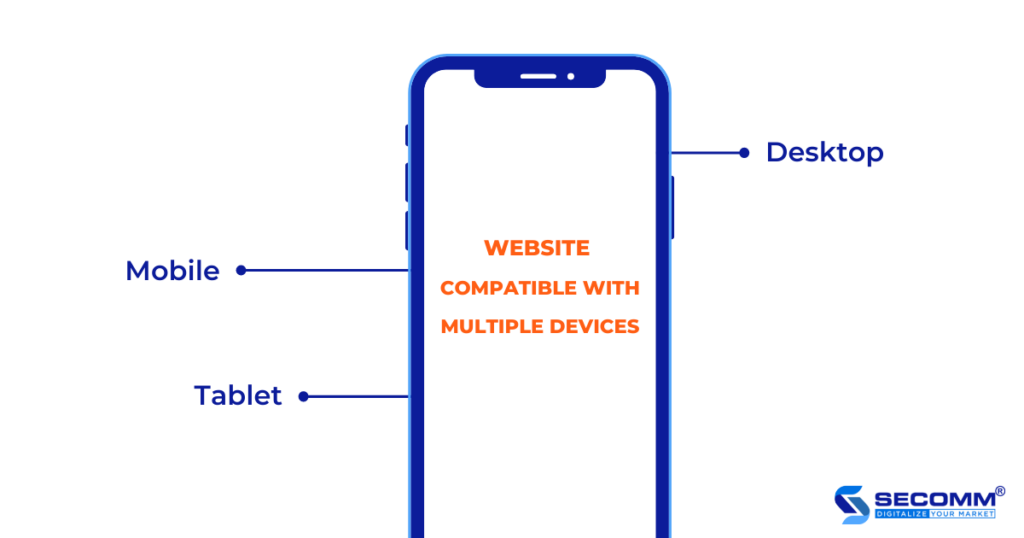
Furthermore, businesses must ensure that customers from all over the world can easily access and shop on their eCommerce website using any available browser.
As a result, businesses will conduct cross-browser testing using Google Chrome, Internet Explorer, Firefox, Opera, Safari, and other browsers to find and fix errors, ensuring customers have a great shopping experience on your website using any browser, any device, and anywhere. Businesses can hire a qualified third party to assist them, or they can conduct their own testing using a few available help tools.
In the digital age, “Omnichannel” is becoming increasingly popular and is an essential communication strategy between businesses and their customers. Every business should adopt an omnichannel strategy to connect with customers, increase traffic, drive sales, and survive the changes of the times.
As a result, implementing Omnichannel enables businesses to synchronize all sales channels for easier data management and increased eCommerce business efficiency. At the same time, Omnichannel provides customers with a seamless experience, allowing businesses to sell omnichannel and increase conversion rates.
When implementing Omnichannel, businesses can use Omnichannel platforms and systems (ETP Group, NEF, GoSELL) or choose one system as the data center for the entire system, such as an eCommerce system (Magento), ERP (Odoo, SAP).
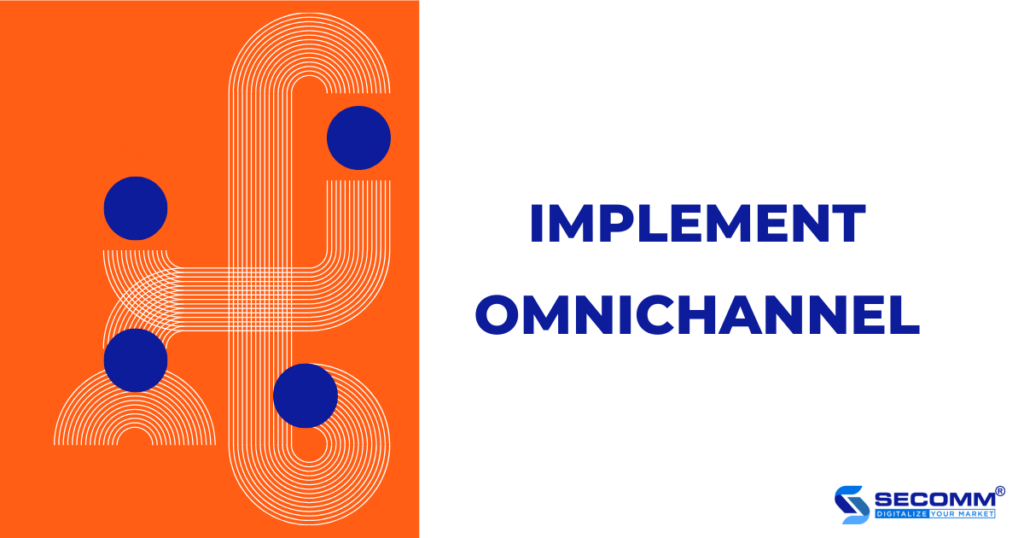
Omnichannel implementation process:
Most eCommerce websites require customers to create an account before making a purchase. This allows businesses to store the customer’s purchase history, delivery address for demographic analysis, purchase behavior assessment, sales analysis, and incentive to buy next time through Marketing campaigns.
Regular customers, in particular, will be willing to do this to reap the benefits of having an account on the website, such as quickly saving information for the next purchase or receiving notifications about upcoming big promotions. However, not all customers want to register for an account to purchase products.
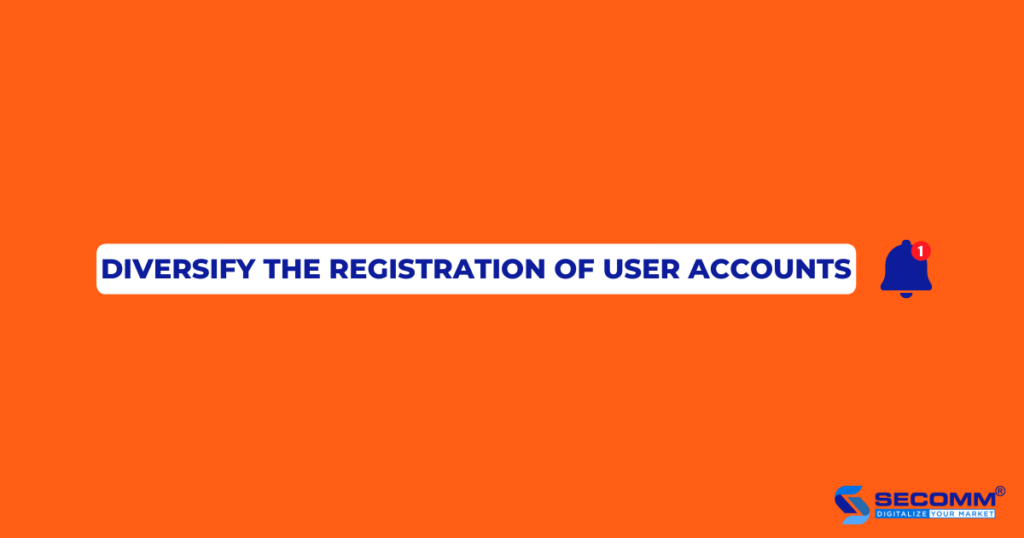
Therefore, businesses must provide options for customers who want to buy goods without registering an account, such as requiring customers to log in with a social network account or fill out a small payment form with their name, email, phone number, and address to complete the purchase process.
The eCommerce website system will automatically create an account and submit guest email login information in both cases.
Even on websites that do not sell anything, users frequently use the search bar. For businesses with eCommerce websites, the search bar must provide advanced search functionality.
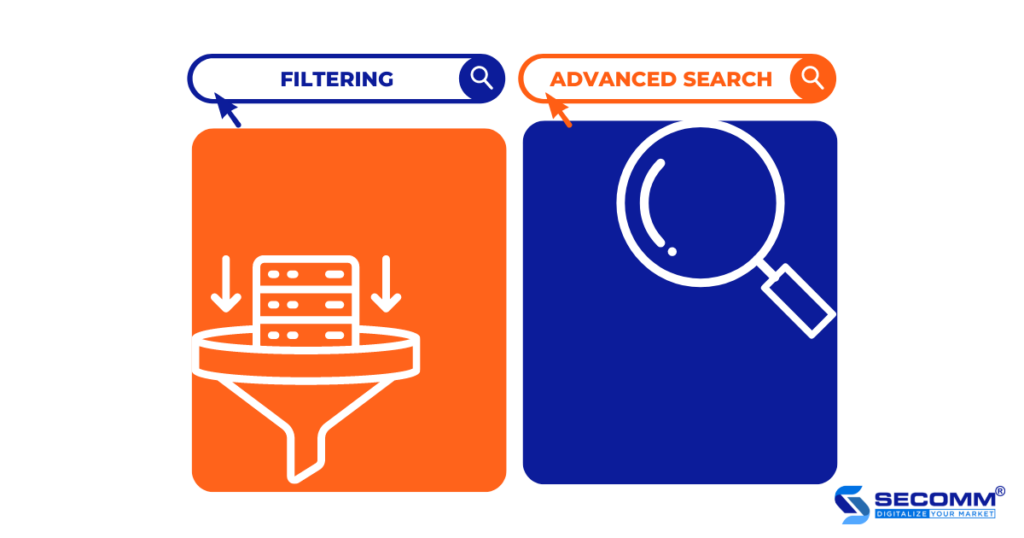
The image search feature, for example, allows users to upload a photo of a favorite item and have the eCommerce website’s search engine return products that are the same, nearly identical, or similar to the product the customers are looking for.
If users don’t know what to look for and need some suggestions, they should browse the website’s product categories. In these cases, the multi-layered product catalog function is extremely useful. In other cases, customers already have search objectives; a search bar with advanced support functions will also assist customers in finding the products they require with a few clicks.
Because online shopping and payments are becoming incredibly popular, it is critical to provide the appropriate payment options when developing an eCommerce website. According to the Payment Methods Report 2019, many shoppers abandon shopping carts because of delivery costs (55%) and complicated checkout processes (26%).
As a result, depending on the product and market that the company is targeting, the company will select a payment method that is appropriate for customers, products, and regions. The most popular payment methods in North America, according to Hostgator, are PayPal, Amazon Pay, Google Pay, Apple Pay, Visa or MasterCard, and so on.
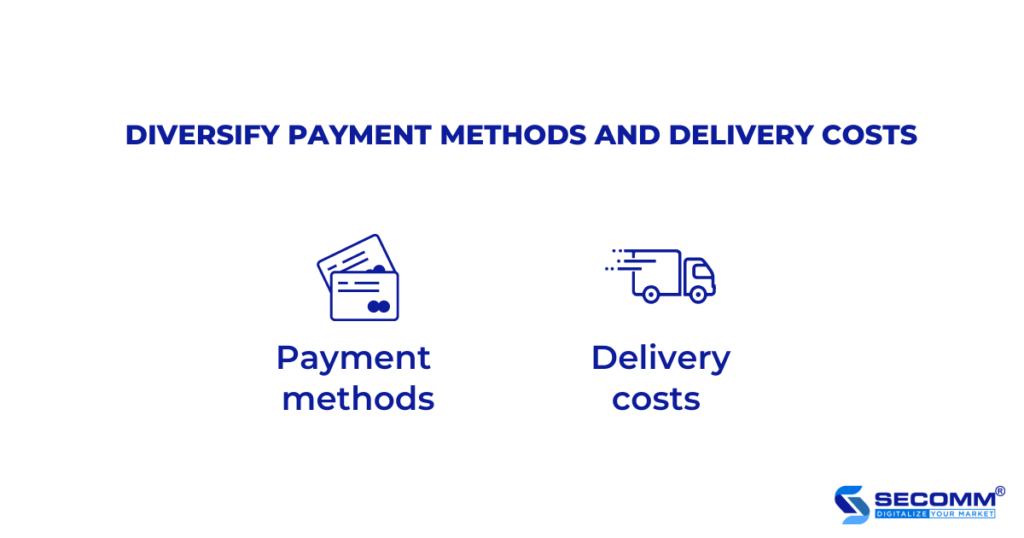
MoMo, Zalo Pay, Shopee Pay, Visa or MasterCard, and others will be particularly popular in the Vietnam market.
Furthermore, businesses should consider delivery costs because this is one of the primary reasons why customers abandon the purchasing process. Businesses can deploy flexible free shipping offers on special promotions, or if customers are required to pay shipping fees, the system should provide detailed information to avoid confusion and create a bad customer experience.
A content management system (CMS) allows you to centrally store and manage your written, visual, and document content. Businesses can change or add information, and the changes will be reflected on the eCommerce website. CMS can also help staff respond more quickly to customer feedback.
Most Internet shoppers are Millennials, Gen Y, and Gen Z. These generations value personalization, such as personalized recommendations, recommendations, or solutions from the support team.
Many eCommerce businesses are trying to meet this, the customer care department will help buyers solve problems during the purchase, payment, delivery, returns, complaints, and so on.
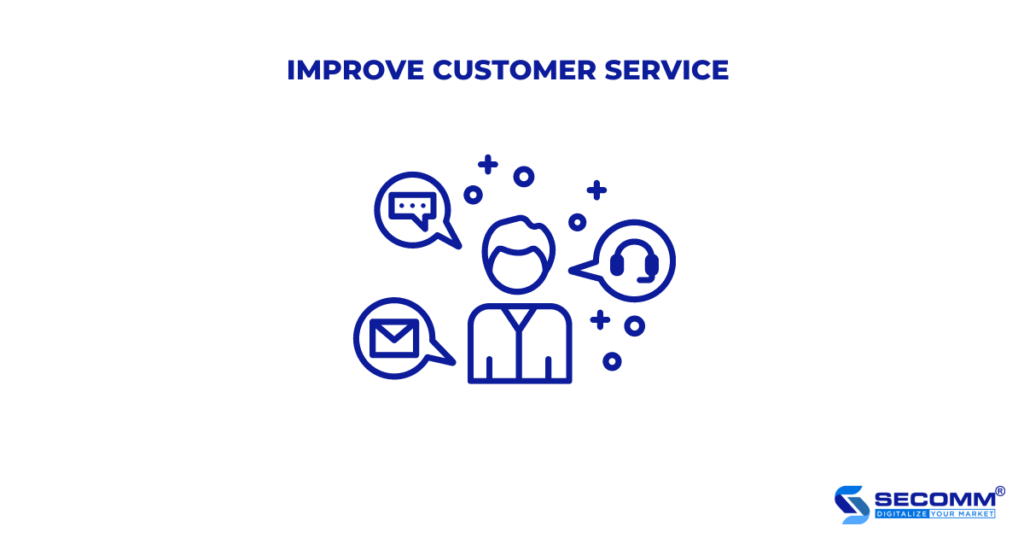
Furthermore, businesses should add a contact section to their eCommerce website with a hotline number or email that can be easily clicked or linked to the Facebook Messenger application, Zalo, live chat for orders, and general support chat for those who prefer this method of communication.
Businesses will be responsible for storing large amounts of user data and product information on an eCommerce website, so safety and security are the most important factors for any eCommerce website. Any negligence can put the company in danger of permanent data loss, and customer information can be stolen and sold.
Google and other search engines will flag an eCommerce website if it is deemed unsafe and has poor security, such as no SSL certificate and HTTPS protocol. This is considered a warning or recommendation for Internet users to be cautious about accessing websites that lack the above two components, as a result of which businesses will easily lose a large number of potential orders, causing marketing disruption and affecting the brand’s reputation.

Furthermore, businesses must register an eCommerce website with the Ministry of Industry and Trade at the eCommerce Management Portal to demonstrate the website’s transparency following Vietnamese Government Decree 52/2013 ND-CP.
The 10 essential factors listed above are those that businesses must consider when implementing eCommerce. In reality, even when businesses use WordPress, the Woocommerce plugin, or a SaaS platform like Shopify, it is not easy to create an eCommerce website with full features that work well to attract customers. If your business decides to hire a website development company, that company must be capable of creating a comprehensive eCommerce website in terms of both design and functionality.
With many years of experience implementing eCommerce in many countries, SECOMM provides free consulting services with professional eCommerce solutions.
Contact us today for free support and advice!
 2
2
 4,981
4,981
 0
0
 1
1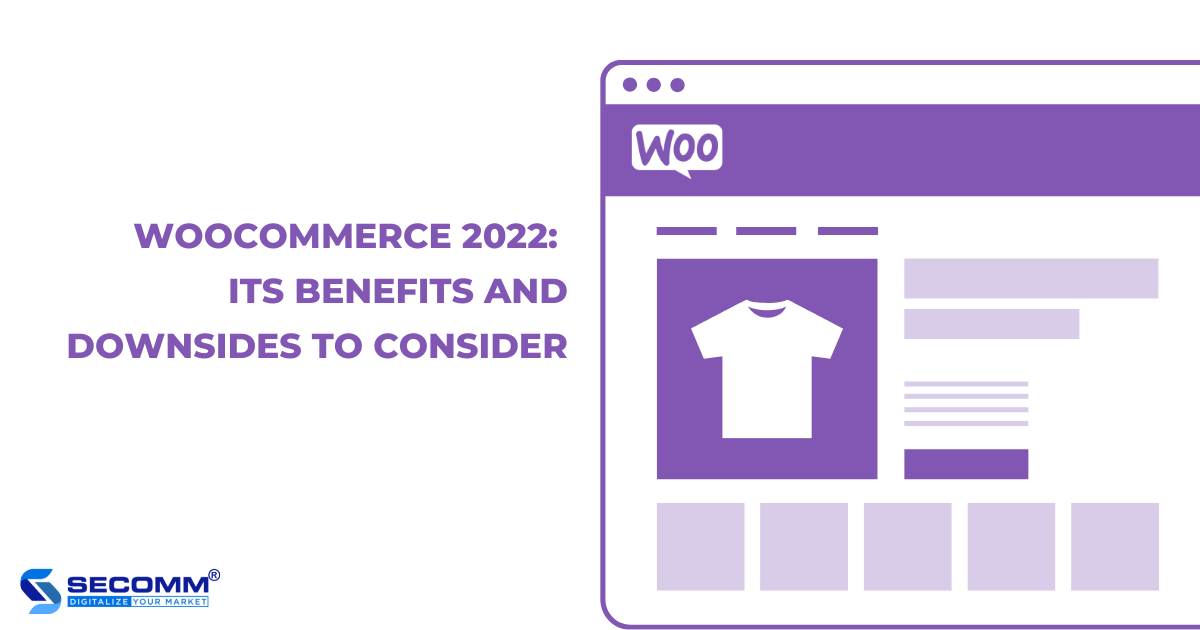
As eCommerce becomes a new trend that encourages a slew of brands to enter the market, selecting the right eCommerce platform to build a successful eCommerce website becomes critical. While Shopify is the most popular SaaS platform, Magento is the top choice in the open-source platform, and the WooCommerce plugin has won the trust of many brands due to its outstanding features and ease of use.
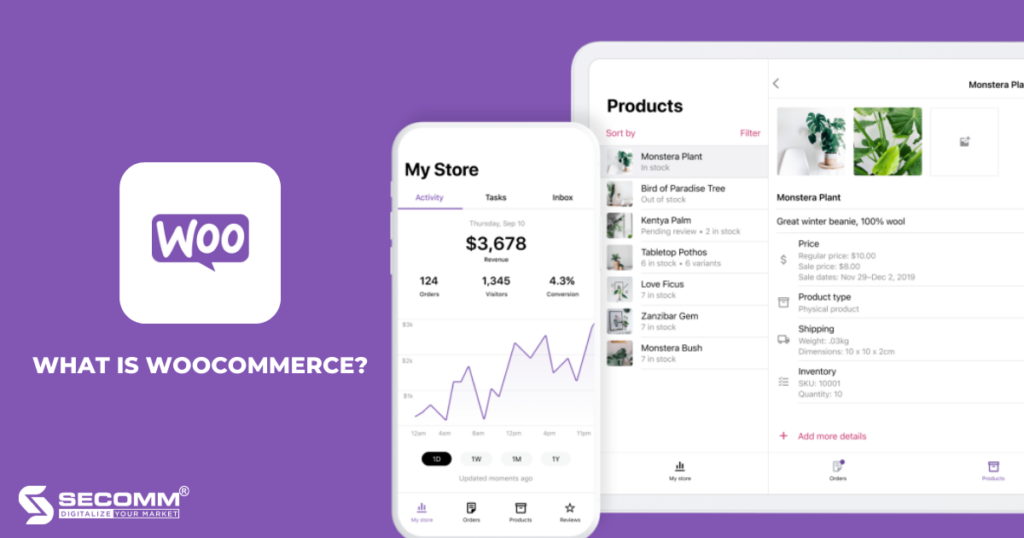
WooCommerce is a free WordPress plugin that allows brands to set up an eCommerce website by adding eCommerce functionality to an existing WordPress site. This plugin can transform a regular WordPress website into an eCommerce website with all the necessary features and easy customization with just a few clicks.
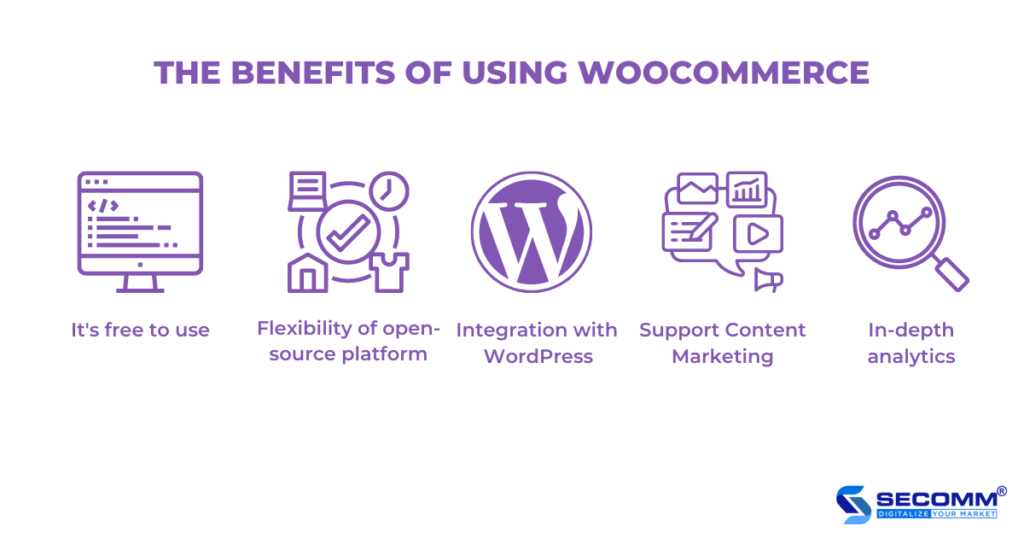
Price is an essential factor to think about when selecting a platform for implementing eCommerce. Popular platforms on the market today have prices ranging from free to several thousand dollars per year, making it even more prominent and preferred by businesses because this plugin is entirely free to download and install.
As a result, any business can benefit from its features without committing to costly support contracts or software licenses.
It is an open-source plugin built on the WordPress CMS that gives users complete control and allows them to easily customize their eCommerce website to their specific needs. WooCommerce, in addition to being suitable for a variety of businesses serving different customer segments, also provides long-term scalability, giving businesses of all sizes more flexibility in deploying eCommerce.
The seamless integration between WooCommerce and WordPress brings many benefits to this plugin because of the availability of the large WordPress community throughout the years. WooCommerce can take advantage of the platform’s massive ecosystem of plugins, themes, guides, and other unique features.
Yoast SEO, for example, has long been a well-liked plugin with numerous international translations, ease of use, and advanced SEO support. Since WooCommerce integrates with WordPress, Yoast SEO also integrates with WooCommerce.
Especially when a business has a website on the WordPress platform and needs to turn it into an eCommerce website, WooCommerce will make it easy and seamless, so users do not have to start over with a brand new platform.
Content Marketing is the key to an effective eCommerce website. If businesses are looking for an eCommerce platform built on the world’s most popular content management system (CMS), WooCommerce can fulfill that expectation.
When the WooCommerce plugin is integrated into WordPress, many content management options, including Blogs, Landing Pages, Product Descriptions, Email Marketing, and SEO plugins (Yoast WooCommerce SEO), will help sellers optimize content for search.
Integrated analytics is another advantage of the plugin because the more you learn about customers and how they interact with your eCommerce website, the more you can adjust to meet customer expectations. For example, businesses can use sales data to learn about customers, thereby establishing a customer persona to increase sales in the future.
Furthermore, it provides a comprehensive WooCommerce analyzer displayed in a clean and user-friendly interface. Businesses can then easily integrate WooCommerce with third-party analytics services such as Google Analytics, Google Tag Manager, and others.

When using this plugin, the user is responsible for keeping the eCommerce website up-to-date, accessible, and functional. In fact, there is some support from the hosting company and the WooCommerce community, but it does not allow users to simply call for technical assistance.
Plugins will notify users of security updates, but users must install and handle problems themselves. In fact, hosting companies will support this. Still, users need to have a bit of technical knowledge to facilitate the process of supporting related issues to avoid affecting the performance of the eCommerce website.
This disadvantage stems directly from the fact that businesses have complete control over the eCommerce website system’s source code and data. Maximum authority entails maximum accountability. Although businesses continue to receive support for WooCommerce issues, compared to other eCommerce platforms such as Shopify, BigCommerce, Magento, etc., WooCommerce still has many shortcomings in the technical maintenance support process.
With the constant increase in unauthorized access (Website Hacking), website speed and security are more critical than ever. Speed and security are significant advantages for SaaS platforms such as Shopify and BigCommerce. At that point, your eCommerce website is housed in the infrastructure of these platforms, and a team of technical experts will continuously monitor and resolve any issues that arise to keep the website running smoothly.
Similar to a technical maintenance situation, WooCommerce essentially leaves the user responsible for the speed and security of the website despite the wide range of 3rd party support options.
Although speed and security are not an issue for some new businesses deploying eCommerce websites, this is still a significant drawback of this plugin when businesses are responsible for many issues ranging from technical maintenance to website speed and security, especially if the eCommerce site is on the verge of rapidly growing from hundreds to thousands of hits.
Because it is a WordPress plugin, it will operate in accordance with WordPress functions. Meanwhile, WordPress functionality is not explicitly designed for eCommerce but rather is based on the flexibility of open-source code. This means that when a user exceeds a certain query threshold, the way WooCommerce works is broken.
For example, when a large number of shopping carts are added, or checkout occurs at the same time, or when too many users visit the website simultaneously, overload occurs, making the operation of the eCommerce website difficult. This is difficult because the WordPress system and the WooCommerce plugin are no longer compatible.
If your eCommerce website is still small and growing, this is not a problem; problems can still be quickly resolved. However, as the size of your website expands and grows rapidly, this is a disadvantage in terms of both performance and cost that businesses must consider before proceeding.
In a nutshell, WooCommerce is a fantastic plugin that many businesses would love to choose when deploying an eCommerce website. However, besides the outstanding advantages, there are still certain downsides, so businesses must carefully consider and compare with other platforms before starting out.
With many years of experience implementing eCommerce in many countries, SECOMM provides free consulting services with professional eCommerce solutions.
Contact us today for free support and advice!
 2
2
 5,451
5,451
 1
1
 1
1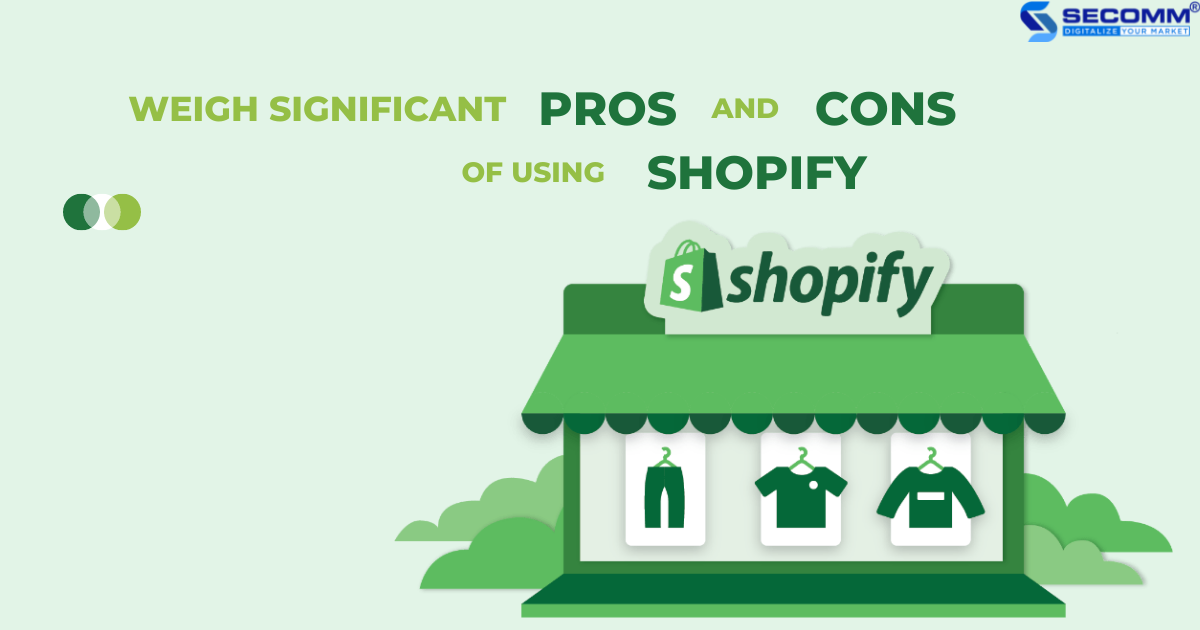
Today, for businesses of all sizes, eCommerce websites play an essential role in reaching and buying products for a wide pool of potential customers on the Internet.
Thus, choosing the right platform to build an eCommerce website is incredibly important. A good eCommerce platform will make it easy for businesses to provide Omnichannel experiences, personalize customer experiences, offer a variety of services, products, and more to increase conversions and drive online sales.
Some commonly mentioned platforms for building eCommerce websites are Magento, Woocommerce, Bigcommerce, etc. Definitely, each business will have its considerations, but one platform that always appears as a top choice is Shopify. In spite of the fact that the platform is highly rated, businesses should still weigh the pros and cons of this platform before making a final decision.
As a result, SECOMM has prepared this review, helping businesses understand what Shopify is, how it works, implementation costs, and especially the pros and cons of using this platform to build a comprehensive eCommerce website.
Before becoming one of the most popular eCommerce platforms globally, Shopify started as an online ski store called Snowdevil in 2004. Later, the company transformed into an eCommerce platform named Jaded Pixel.
In 2006, It was officially founded in Ottawa by young programmers Tobias Lutke, Daniel Weinand, and Scott Lake. Since then, the platform has gradually affirmed its position as a reliable and fastest-growing eCommerce platform in the last two years when most companies faced many difficulties because of the Covid-19 pandemic.
Up to now, the number of Shopify users has increased significantly. As reported by StoreLeads, there are currently about 2 million websites using the platform to build and develop online businesses. In the second quarter of 2022, the number of newly opened stores reached 150,928, an increase of 10.8% compared to the same period in 2021. In Vietnam alone, there are about 2,000 websites using the platform in operation, up 9.8% in the second quarter of 2022 over the same period in 2021.
Total revenue in the second quarter of 2022 reached $1.3 billion, up 16% over the same period in 2021, corresponding to a compound annual growth rate for three consecutive years of 53%. Gross profit in the second quarter of 2022 increased by 6% to $655.6 million compared to $620.9 million in the second quarter of 2021 (According to Shopify’s report).
While it is one of the most popular and user-friendly eCommerce platforms available today, businesses still need to determine if this is what they need to expand their business, all the advantages and disadvantages of the platform, mostly the cost issue.
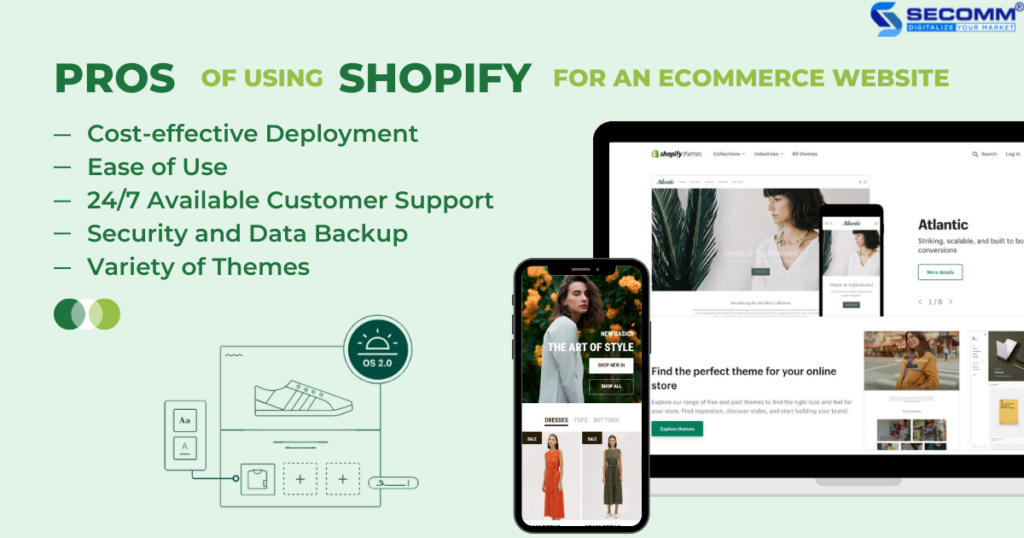
For a start, businesses can enjoy a 14-day free trial without a credit card requirement. When the free trial ends, businesses are encouraged to opt for one of the solution packages with suitable features and appealing promotions.
Packages | Price | Main Features | Unique Features | Ideally suited for |
Starter |
| Create product pages and get shareable links with product information, then send those links to customers via social platforms or message apps. | Merchants that sell on social platforms or message apps with no website in demand | |
Lite |
| – Shopify Buy Button. – Invoicing. | Merchants that sell on an existing website or social platforms. | |
Basic |
| – Customizable website editor. – Website hosting and free TSL certificate. – Unlimited number of products. – Analytical reports – Localization: currency conversion, website translation, regional domains. – Inventory Management. – Shopify POS. – Shopify Email. -Shopify Payment. – 24/7 Customer service. | – 2 staff accounts. – 4 inventory locations. – Basic reports. | Businesses who have just entered or intend to enter the eCommerce world and look for comprehensive eCommerce solutions. |
Shopify |
| – 5 staff accounts. – 5 inventory locations. – Standard reports. | Steadily growing eCommerce businesses. | |
Advanced |
| -15 staff accounts. -8 inventory locations. – Advanced reports. – Automation tools. | Large-scale businesses that sell internationally | |
Plus | Từ $2000/month. However, businesses can contact Shopify for a custom estimate. | – 9 expansion websites. – Up to 100 themes. – Exclusive Merchant Success Program, Shopify Plus Academy, Shopify Plus Partner , Shopify Plus Community on Facebook | Enterprise-level businesses that manage and operate multiple eCommerce websites. |
Table list of price, and features of Shopify solution packages.
First and foremost, because it is a SaaS platform, the cost to get started is usually quite low. Despite the fact that businesses must pay monthly fees, transaction fees, theme fees, and extension fees, Shopify is still significantly less expensive than open-source platforms such as Magento, WooCommerce, and others.
The development of an open-source platform necessitates the assistance of experienced programmers and takes a long time to deploy, whereas the SaaS platform is the inverse. That is the reason why starting with a SaaS platform, specifically, Shopify, will save businesses both time and expense.
Another cost highlight is that SaaS platforms, in general, and Shopify in particular, require an ongoing monthly fee rather than a one-time purchase fee to use the platform. This reduces the risk of businesses investing too much money in the platform but not meeting their expectations during the implementation process.
Furthermore, the Shopify platform is appropriate for different-sized businesses in the market. The Starter, Lite, and Basic packages are appropriate for SME businesses engaged in eCommerce. Shopify, Advanced, and Plus packages are ideal for large-scale businesses that require advanced features to run an effective eCommerce website.
The only way to adapt to the ever-changing market and quickly reach a wide pool of potential customers is for businesses to deploy eCommerce websites as soon as possible to avoid being left behind in the competition of the digital transformation race. One of the important factors when building an eCommerce website is choosing the right platform.
In particular, the top goal to consider when choosing an eCommerce platform is the ease of use. If a platform takes users too long to learn and implement or makes users dependent on external support, then the platform is not easy to use
Shopify has an easy-to-use interface for users with little programming knowledge. Moreover, Shopify is a SaaS eCommerce platform with a pre-designed system that offers hosting, interface, features, and technology infrastructure maintenance, allowing businesses to easily build and operate the website system with just drag and drop without worrying about technical issues.
Simple steps to get started with the eCommerce website implementation with Shopify:
This is one of the most crucial factors influencing users’ decision to use Shopify. Difficulties and obstacles are inevitable when building an eCommerce website, so Shopify has assembled a reliable and trusted team to assist users.
As a result, if your business requires assistance, assistance is available 24/7. Businesses can reach Shopify via email, chat, and a hotline worldwide. What’s more, users can access community forums and useful documents for developing eCommerce websites on this platform, mostly through the Shopify Support Center.
The Shopify platform runs on PCI (Peripheral Component Interconnect) compliant servers, allowing merchants to accept credit card payments. Secure Sockets Layer (SSL) encryption is enabled on all Shopify websites to secure visitor data, while a backup system allows businesses to store and save data regularly by exporting data to a CSV file.
As an outcome, the platform encourages the addition of an advanced backup solution from the Shopify Store, such as the Rewind app, as it is seen as a lifesaver if users accidentally delete content such as products or images or a video demonstration. To keep your eCommerce website secure, simply back up your data on a regular basis and use a strong enough admin password.
The interface is the appearance of a business’s eCommerce website. The more appealing the website interface, the more likely it is to retain customers, attract more visitors, as well as generate more conversions.
Shopify understands the importance of a website interface, so it has made a host of available themes, both free and paid, suitable for a wide range of businesses and fields, making it simple for businesses to choose from.
The free Shopify themes are ideal for startups, small and medium-sized businesses, and individuals. Businesses can customize their eCommerce website according to their needs and brand features by using features such as responsive web design, product filters, and product color display templates.
However, free themes have some downsides, including a limited number of themes, limited design, and a lack of advanced and specific features, which makes website customization difficult.
In fact, free themes are great for launching an eCommerce website. Premium interfaces, also known as paid themes, will be more suitable for large-scale businesses or businesses on the rise, with an average cost of around $140-$180/theme.
Shopify’s paid themes include advanced integration features such as live chat support, newsletter popups, upsell features, faster page loading, and much more. Thereby, businesses can run an eCommerce website automatedly and smoothly.
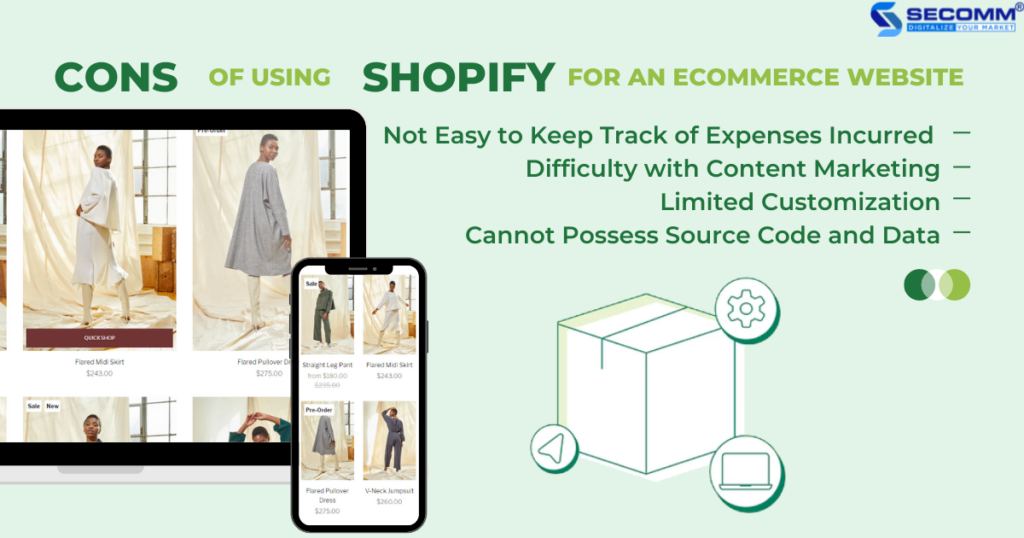
The cost of using Shopify, besides the notable pluses, the platform has a small but enough minus to make some businesses hesitate to start.
In addition to the monthly fee for using the enterprise platform, businesses must pay for other costs such as themes, applications, extensions, marketing features, sales, and SEO on a monthly basis with no long-term possession.
For example, to use the Free Shipping & Hello Bar application that offers free gifts, free shipping, or other types of promotions, users will buy for $8.95/month, which means ongoing monthly in regards to other expenses, businesses will pay an additional $8.95 for this app until it is no longer used.
When there are small expenses incurred each month, it is difficult to control cash flow for large-scale businesses that have to manage and operate many websites at the same time.
Meanwhile, open-source platforms require a one-time purchase fee rather than an ongoing monthly fee. Although the features are not yet available and take a long time to program, businesses can possess those features for eCommerce websites in the long run. Thereby, it makes cash flow management more convenient and effective.
It is a great way to promote your eCommerce website. Users can use Shopify to blog and optimize SEO, drive free traffic, and improve brand positioning.
However, this blogging feature on Shopify is not as user-friendly as WordPress. Some of the criteria Shopify can improve regarding blogging and content writing include:
This will be a barrier for businesses when using Shopify to promote eCommerce websites by optimizing SEO if the content is a core element of the business’s marketing strategy.
Another limitation of Shopify is that the platform’s interface is customized using the Shopify Liquid setup. Meanwhile, many website developers are already familiar with the PHP programming language to customize the themes and templates of the website, it is a common technique used by WordPress.
Therefore, users who do not have much experience in programming will face many obstacles when using Shopify’s tools to customize the interface of the eCommerce website.
However, businesses of all sizes can still use other useful Shopify features like Shopify Themes, Shopify App Store, Shopify Blog, 24/7 support team, and more to set up an eCommerce website quickly and effortlessly.
Because the entire business’s website system is hosted on Shopify’s server, the ownership and control of the website source code will belong to Shopify, not the business. Similar to other SaaS platforms such as BigCommerce, Squarespace, Wix… Shopify has a Lock-in feature, which means that when converting a website from one platform to another, businesses will no longer be able to use the old website source code and have to rebuild from scratch on a new platform.
Similar to the source code, business data is also stored on Shopify’s servers, so data ownership and control are quite limited. This makes it difficult for businesses to connect data among internal departments or users’ personalization, etc. Especially when switching platforms, data loss or misalignment is often unavoidable.
Shopify will not assist in the event that businesses stop using the platform for any reason. The only asset businesses can keep and take away is a CSV report containing website information.
Hence, before starting an eCommerce website on the Shopify platform, businesses need to carefully consider the benefits and disadvantages of stopping using it to conclude whether Shopify is the best fit for business in the long run.
Going by this article, Shopify is one of the eCommerce platforms that many businesses would love to choose when deploying an eCommerce website. However, besides the outstanding advantages, there are still certain downsides, so businesses need to carefully consider and compare with other platforms before starting out.
With many years of experience in implementing eCommerce in many countries, SECOMM provides free consulting services with professional eCommerce solutions.
Contact us today for free support and advice!
 2
2
 4,897
4,897
 0
0
 1
1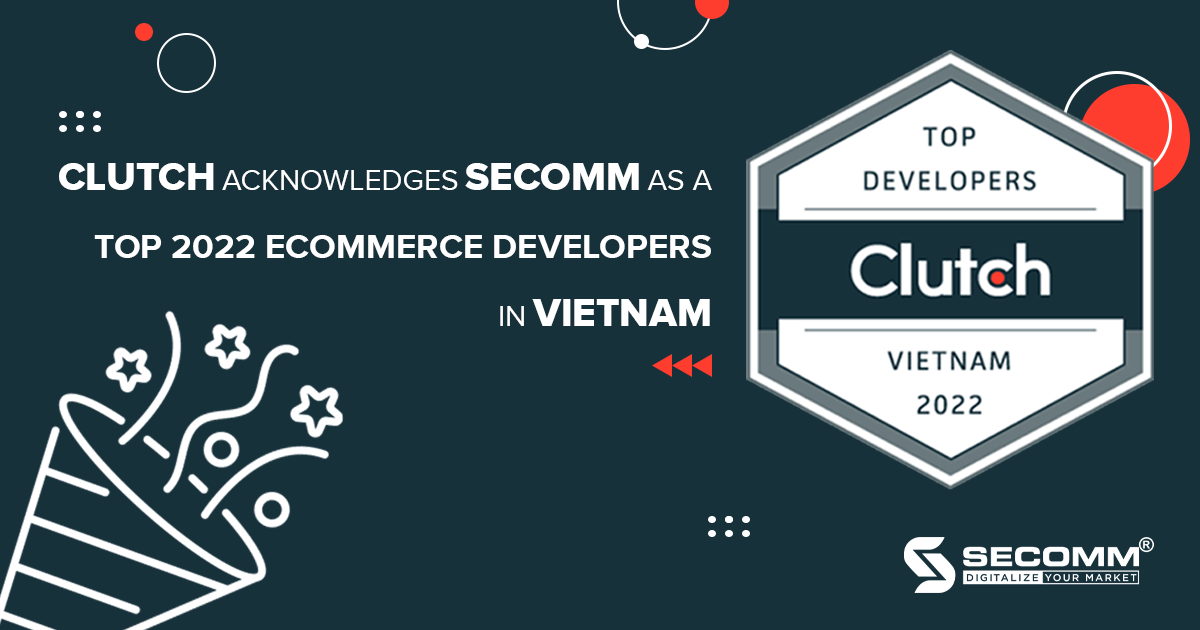
SECOMM is a trusted provider of full-service ecommerce solutions. Founded in 2014, we’ve been helping growing brands, and renowned companies get a steady foothold in the ecommerce space.
We enable our partners to overcome any challenges brought by the evolving digital age through expertise and innovation.
Today, we’re honored to announce that we’re among the top B2B companies on Clutch in Vietnam. The ratings and reviews platform’s 2022 research states that we’re one of the leading ecommerce development companies in Vietnam this year.
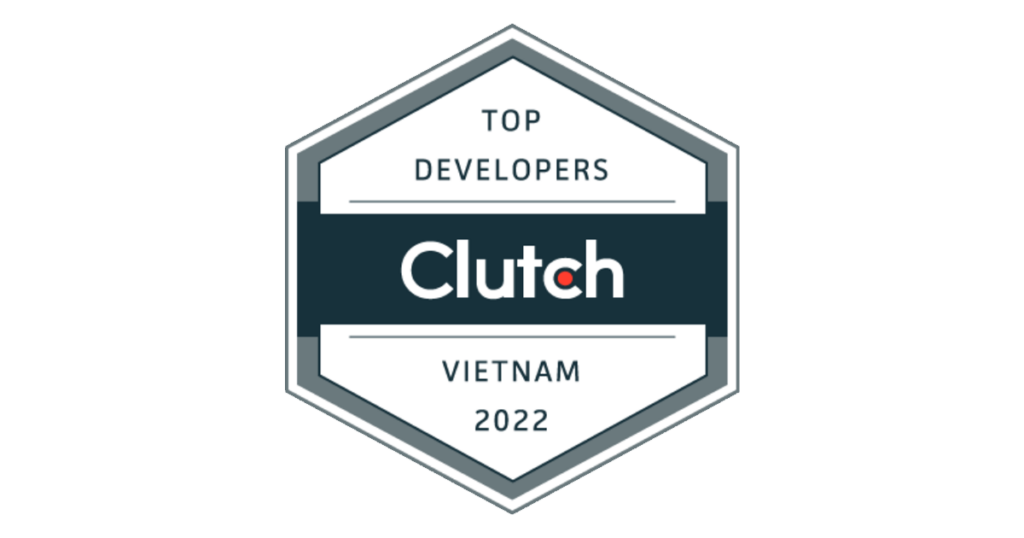
For context, Clutch is a B2B ratings and reviews platform committed to helping small, mid-market, and enterprise businesses connect with capable service providers. Clutch serves as a valuable resource to businesses when it comes to market research. The platform guarantees unbiased information by interviewing clients of registered vendors directly.
Take a look at some of the 5-star ratings we’ve recently acquired:
“The professionalism of the company is second to none! They are extremely responsive, and their communication is concise and informative.”
— Rick Thurlow, Senior Business Manager, Jasnor (Australia)
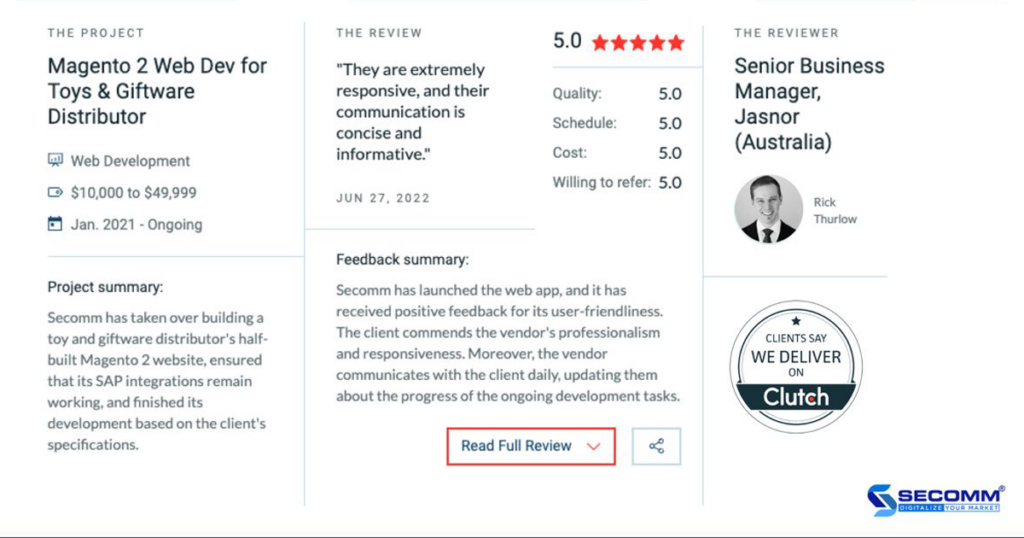
“I think the best thing about working with SECOMM is how quickly they can respond to a change you would like them to implement or to fix an error that you identify.
Even when it came to us changing things on this project that weren’t in the original scope, they would talk that change through with us to identify the best way of handling it, and then implement that change in a timely manner.”
— Stuart Duff, Founder & CEO, Laybyland Pty Ltd
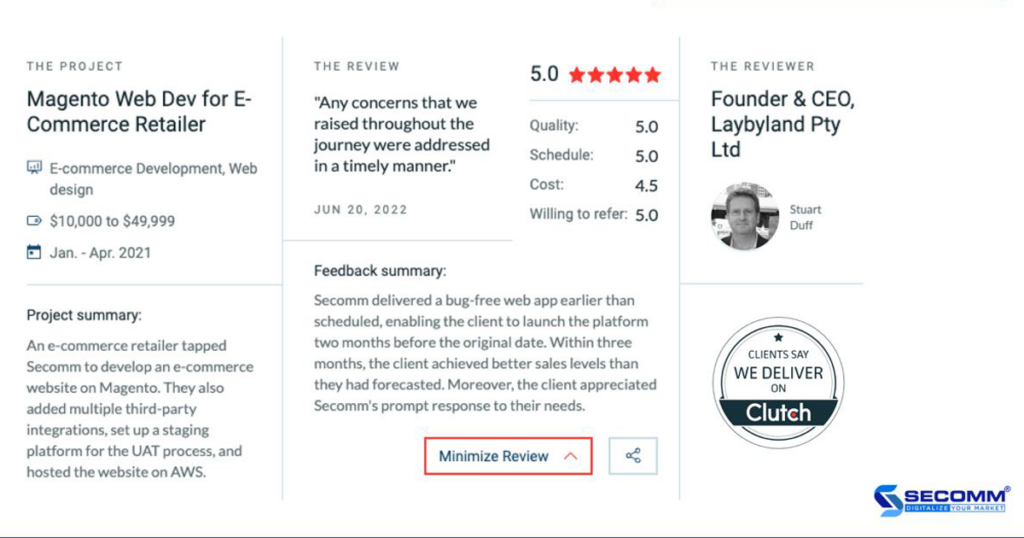
We would like to thank our partners who took the time and effort to write their descriptive, helpful feedback about our work. Don’t forget to check out the full case studies on our Clutch profile.
For inquiries about our full-service ecommerce development, please get in touch with us today!
 2
2
 8,804
8,804
 13
13
 1
1Subscribe to get the latest eBook!
Hotline